|


The
Journey to
Hungary
: In the Footsteps of my Forefathers
by
Gottfried Stemmer
Introduction
by Hans Kopp
hans_kopp@hotmail.com

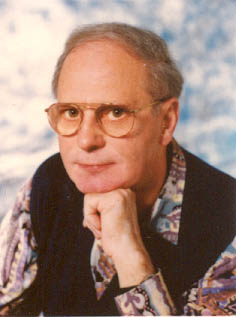 |
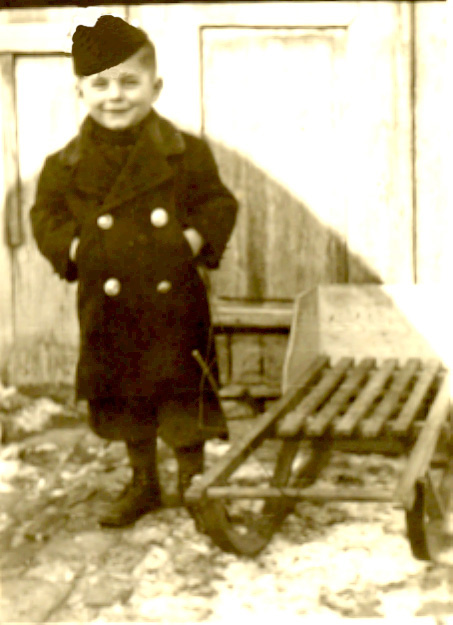 |
| Gottfried
Stemmer - Author |
Gottfried
Stemmer 1943 - 44 |

When
I learned from the " Batschsentiwaner Heimatglocken“ that Mr.
Anton Rodi from Apatin planned a Danube cruise to our native country
with a 3 day stopover in Apatin he promoted as „Apatiner of Danube
Première“, I persuaded my wife Annemarie, since Batschsentiwan lies
only 7 km’s from Apatin, to undertake this journey with me. This
would be part of our 50 wedding jubilee. We had planned to do an ocean
cruise for that occasion and now this „Apatiner of Danube Première“should
serve us as trip enstead. The time was also just right for us, despite
the fact I promised myself that I never would go back and set foot on
that country from where we were expelled during the post war years of
1945 placed in death camps and suffered so much pain and loss of life
as a result of it.
When
Mr. Rodi found out that I was also a documentation-historian, he
persuaded me to prepare a historic presentation together with Mr.
Gottfried Stemmer for the trip. Thus I got to know Mr. Stemmer, a very
modest, kind and admirable person with whom I had excellent
conversations about our Donauschwaben history and whose knowledge
impressed me very much. Thus we became good friends during the course
of the trip. Here now I give the word to Mr. Stemmer.
***
Foreword
In
my foreword I would like to mention: I always had the need to look
beyond the horizon especially into the past. It is very intriguing to
learn details about the lives of the people before us. Genealogy, the
research of our ancestors is such an area. It is interesting to
actually take a journey into the past like into the lives of my
family, which has left some interesting clues behind. Although, I am,
but one of many of the descendants of Hanspeter Stemmer and his wife
Regina Wetzstein of Trulben, I took the time to undertake the trip
with them and travel through the past to experience such journey
myself.
Thus I looked for information’s and references with regard to
my forefathers, their life and their living conditions in their home
country and what could have motivated them to leave it. It was an
essential part in the life of my forefathers, that they were placed
quite often between the grindstones of power-hungry landlords, this,
however, they did not accept as an unalterable destiny, but attempted
to change the destiny through emigration. Somewhere I have read the
following: „Oh God what the poor had to suffer! “How confidently
they have gone from their German native country to find a new home
elsewhere; „why did they fair so badly in their old world? “ It is
the question I asked and am was searching for an acceptable answer.
As
years went by the aging woman Regina
grieved often about that circumstance, that no one was there who would
write down everything what they experienced, from the first hour of
their trip to Hungary and about
their home in Germany. Their father, Hanspeter,
had no understanding for it, he meant, one should not look behind but
forward. In retrospect the grandchildren would have plenty of time to
do so once they were settled in the new world; in their new
environment, their new property they now could call their home. „We
should however, look, behind our self once“, said
Regina
. If no one is left to tell from where they have come and how their
forefathers faired in the new land. „It will be someone “said Hanspeter
about her concerns; „leave me in peace, my
fingers are too stiff for such work. “ But the more
Regina
edged their every experience firmly in her mind so she would be able
to tell of those experiences to the grandchildren and
great-grandchildren as they grow up.
My
grandmother from the Lorenz family side still told me many of those
historic stories. Other facts I have extracted from old books,
especially from the writings of the Donauschwaben author Adam Müller-Guttenbrunn.
Now and then I had to dig for information’s by myself and take the
freedom to read between the lines of the written material I found.
Also newer sources became available to me that I found on the
Internet, information available to me as a family researcher and
historian and allowed this information to flow in. Because of these
information’s, I could find out that the historic biographies and
experiences of the people cited here settling in the Batschka were
very similar to each other. Thus I want to attempt to tell you the
history of my forefathers with the hope and wish that you will also
tell of the stories to your children and your children’s children.
Gottfried
Stemmer, Regau, 2006
***
Pre-History
The
30 year war of 1618-1648 with its disastrous consequences also reached
the last remote place on the
peninsula
of
Lake of Constance
even 100 years after it had ended. The villages were looted, houses
burned down and their fields destroyed, countless people killed and
their way of life disrupted. While
France
, like other European countries, with centrally controlled power,
according to the spirit of the times, found opportunities to annex
newly discovered lands and colonies.
Tortured
Germany
in pieces wrapped in an unblessed religious war, became vulnerable for
opportunistic countries and their occupational forces. The result was
disunity within the German empire divided in more than 300
principalities and lordships. Every ruler had wrapped himself in his
own „house power“and in their own perspective they wanted to live
like an emperor. In addition, they pressed the wealth necessary from
their subjects, and they still wanted to be called „father of the
people“ and worried only about their own vanity, For the miseries of
the subjects entrusted to them, there was no room in their hearts.
Thus
it was to no one’s surprise that France, after the world wide
colonization which existed, had practically ended and in fact that
there were hardly any more colonies left to be won and still having an
existing strong military power which France now directed toward German
land in which they could expand.
France
directed its power of attacks for such expansion to the borders
towards
Germany
and pursued its militarily efforts, as well as, skillful diplomacy
relentlessly to annex
Alsace
, Lorrain and the
Palatinate
(Rheinpfalz).
Morality
is never questioned in political power struggles and France also
formed an alliance with the largest enemy of Christianity at that
time, the Ottoman Empire and was considered; “the sword of the
sultan in the west”. During the time when “The Holy Roman Empire
of German Nations” was threatened by the powers of the Ottoman
Empire and the Emperor of German Nations required all the available
military potential to defend against the danger directed toward
Christianity,
France
used the opportunity, looted and murdered in the adjoining German
lands.
With
this dilemma the population points to the Emperor exclaiming: “The
German Emperor cannot protect you”, and
France
asserted claims to these regions. But also counter attacks by the
Empire had to be carried on the back of the population. In 1683 the
Ottoman Empire pushed against
Vienna
and besieged the city. This left the Emperor not much choice but to
engage the entire military potential against this menace. Duke Karl V
of Lorrain, who is the commander of the Imperial forces also, has to
bring his soldiers from Lorrain to defend against the Turks. It is now
that the French King Ludwig the XIV ceases the opportunity using this
military power to occupy the vacuum created by the removal of the
Empires military forces in the German Lorrain.
Repeated
raids and lootings by the French armies, primarily, however, among the
economic-socially better situated people in the
Palatinate
was one reason to leave. In addition the extremely hard winter of
1708-09 had affected the agriculture catastrophically; “the fields
lay sparse, it lacked on cattle feed and thus the field lacked needed
fertilization and what one grew with much care and effort, was
destroyed by the increasing numbers of wild game getting out of
control which in fact was under the protection by cruel legislation of
the royal hunters, thus destroying the hard labor of the
countryman”. This certainly motivated many others to leave.
The
churches were also involved regardless of which denomination, even
they were striving and competing for power and the maltreated people
could not expect help from this side either. Hence, in the church
registers in some far remote places one could read: “because of war
sufferings even people from the
Palatinate
flee from their land”. An early observer of this time writes:
“There are so many stories one could tell, the population of the
Rhineland
had to suffer through?” They never knew who would get theirs next
harvest, the French soldiers, the Swedes (the Swedish army presence in
Germany
) or the Imperials and how much would they be able to save for
themselves. The wild game meant more to the Royals than did the
farmers who worked growing crops. They would not be compensated for
the damages caused by the wild game. However, the punishments should
one help himself to wild game, were cruel.
The
religions were not helpful: “regardless if they were Lutheran or
Reformed they argued with each other and those who wanted to revert to
Catholics again were despised”. Those who could buy themselves free
from their tyrants moved away. Many befell deep in misery, regardless
if once a proud farmer at one time with wagon and horses, or if a
maiden or farm hand and they also would move if possible. Some acted
amusing jokingly about the disarray in their native country, although
leaving did break their heart. During the second half of the 17th
century we find the first evidence of mass emigrations overseas,
mostly to
America
.
What
the village innkeeper thinks of
America
, someone wanted to know: “There are the Englishmen already sitting
pretty and they do not care for the Swabian a bit. From the Rhineland
many have returned home again as beggars, now he knew of a better land
and one can go from Ulm on the Danube on a ship to Hungary, well there
is the plague from time to time as a guest, but, otherwise, one could
live a better life there in peace away from it al”.
***
In
the world around the
village
of
Allmannsdorf
near Constance on
Lake
Constance
, Hans Jakob Spindler was born about 1655. The desolation of the
surroundings may have made young Hans Jakob to decide to leave his
native country on
Lake
Constance
in search of the northwesterly situated Lorrain, almost completely
depopulated from the consequences of the 30 year war. There he married
Catharina Bascho, in Walschbronn in 1688 and lived in the forest house
number 57 as an active businessman.
Their
daughter Annamaria Franziska married the son of the shoemaker Mathias
Wetzstein from Wölferdingen, Lorrain in Walschbronn on November 7th
1707. Alsace was already annexed to France and the danger existed that
Lorrain’s destiny would be the same and in 1766 the threat became a
reality and Lorrain fell to France, hence, they did not want to remain
there and left their home in the forest house number 57 and settled in
the Palatinate village of Schweix, in the County of Hanau-Bright
Mountain. There
Regina
was born on the October 4th 1725 and christened in the
parish church in Trulben.
From
1736-1793 Trulben was under the rule of Hesse-Darmstadt‘s ruler
Ludwig IX (1736-1790) the Landgraf (duke) of Hesse-Darmstadt and count
of Hanau-Bright Mountain. This county included the Reichsamt Lemberg
consisting of the Schultheißen municipalities Trulben, Vinningen and
the Schultheißerei Kröppen including Kröppen, Schweix, Hilst, Dammmühle
etc.). On June 1st 1741 Ludwig IX put up the Grenadier
Company with 46 men. According with the unrests of the time he
increased his militia so that by 1777 it amounted to 2350 men and 25
hussars, he added in 1758.
***
Let
us look at the Stemmer-Wetzstein family now: Hanspeter Stemmer served
many years in the imperial military; as a young soldier still under
the order of the aging Prince Eugene of
Savoy
, against the French and Poles. Later he served in the imperial
cavalry in Petrovaradin (Peterwardein), the most important fortress of
the Empire of German Nation against the
Ottoman Empire
in the Balkans, besides; he came away with several wounds which
remained, however, without any other health issues. In 1749 he retired
as 40-year-old from the military service.
Like
it was offered to all soldiers within the imperial military, Hanspeter
was too offered to settle with generous equipment of house and land in
Hungary
near the military border. He, however, could not be persuaded since
his longing for the
Palatine
, his native country was stronger. He went on to purchase the horse
assigned to him for the past 3 years which he rode during his military
duty from the military, a black stallion, he called affectionately
“Schwarzer” (Black). Together with his companion Bruno, who like
himself, wanted to rather go home, they rode on their horse’s home.
There Hanspeter lived for the time being as a farm-hand with his
brother-in-law Josef Mundweil in Vinningen, who had married his older
sister Katharina. In the pub “Zum Schwarzen Bären” in Trulben, he
became acquainted with the innkeeper‘s daughter Regina Wetzstein and
they married in Trulben on April 28th 1750.
At
the time she was at age 25 not the youngest, but a very resolute
innkeeper’s daughter and many drunks had to acknowledge her strength
and authority, should they speculate to become fresh and allowed
themselves to make fun of her or other guests, she dealt with them
quickly. She inherited the house where she was born in Schweix und
several acreages located in the
Palatinate
. However, the house was located right on the border of
France
und would therefore be a constant target of raids by the French
military. The couple settled there and lived of farming the land. They
worked hard and industrious for their descendants. However, despite of
their hard labor they never seemed to get ahead. Although regions to
the south from them in
Alsace
had fallen to
France
earlier, the raids by the French military did not cease on their side
in the
Palatinate
.
Written
instructions to the French military by
France
point out clearly, that the lootings and destruction of villages in
the Palatinate were not the results of the war, but the aim and
purpose of the French militaries continued war efforts to harass the
population in the
Palatinate
. Hanspeter too, had to suffer under the terrible experiences.
***
It
was in October of 1757 as the evening fog already moved over the
fields.
Regina
was still on the potato field harvesting potatoes with both of her
daughters Anna *28.1.1751 and Veronika *28.5.1754. Anna was already a
good help, however, Veronika was able to pick potatoes diligently from
the ground into the basket. Hanspeter was with their 6-year-old son
Johann in the stable to feed the cattle as they heard loud shouting in
the street. He looked and saw, French soldiers coming into their
court, the house dog which was attacking the soldiers was shot
immediately and soldiers then attacked the stable.
Hanspeter
positioned himself against them, but a blow with the rifle but on the
back on his head knocked him down unconscious. His son Johann was
brutally beaten also and knocked to the ground. The soldiers drove the
cattle onto the street and burned down the house. As soon as
Regina
was alarmed by the firing of the house, she hid both girls under
bushes and ran directly from the field home. The roof was already in
flames; she rushed to the stables and found her son and husband on the
ground. She dragged both of them from the already collapsing building
to the outside; however, while her husband survived the ordeal their
son did not and Johann died in her arms. The French had also burned
down other houses in the village and the flames spread rapidly to the
other houses, bursting into flames and burning to the ground. The
robbers disappeared with the loot again over the border to
France
. Two days later the victims of the French raiders were buried; it was
2 men, 3 women and 2 children.
Only
with the help of family relatives many people were able to survive.
The Stemmers family was taken in by
Regina
’s parents. Others endured their fate grieving for some time and
like illness and death they accepted their fate as Gods will and were
content with what they had to endure. However, for others again it was
an injustice they wanted to avoid in the future if it was possible.
Thus,
it was also the case for Hanspeter, the proud son from the
Rhineland
. It was simply too much what was handed to him and his grieve
stricken family. He was a loyal citizen; however, the authority did
not protect any of them. Everywhere during this hopeless time
Emissaries’ advertised in search of settlers for
Hungary
and found open ears everywhere.
On
March 31st 1758 his wife’s father Mathias Wetzstein and
on May 3rd of the same year her mother Annamaria Franziska,
nee Spindler passed away.
The
Journey to Hungary
As
per instruction by the Imperial Court Chamber in
Vienna
of 7.7.1755, one was informed by the settlement emissaries’ in many
details about what would be provided for the settlers and their
families should they decide to immigrate into
Hungary
. What type property the prospective settlers could or would have to
bring along to
Hungary
. They were told that they would need written releases from the royal
family under whose rule they lived.
They would receive enough financial help, to at least allow
them to operate a farm and could acquire certain farm animals and
equipment as necessary to operate a farm upon their arrival, such as a
horse a wagon and plough, a cow and poultry for their own use. It was
also stressed that only Catholic families may apply.
Settlement
emissary Anton Neuber announced and talked about these requirements in
several villages in the Palatinate and
Saarland
. The imperial offer guaranteed a lot of rights and privileges, but
also made certain that the applicants, the prospective colonists
understood their obligations. They thereby would become imperial
subjects with full privileges. They received a house lot and free
land, as much as, they were able to farm; however, it would be a so
called endless lease. Only later in 1848 they were actually able to
purchase the land they worked. They also would get the seeds required
at the beginning for planting. Furthermore, they were exempt from all
state taxation for full 6 years. However, only young, healthy and
success promising people were accepted.
Countless
people searched for a new future away from home and a reporter wrote
at that time ; “it seems as if everyone wanted to leave the land”.
Those willing to become settlers sold their property, to buy
themselves free from serfdom of their rulers and with the permits in
their possessions they left with woman and children to go on their way
to the port of departure in
Ulm
. There they would step on the ships (the Ulmer Schachteln) which
would carry them to the land to which you needed to bring supposedly
nothing as determination to work and the most important thing, your
health, and at that a lot of it.
***
In
the pub of his father-in-law in Trulben, Hanspeter heard of the
settlement program in the Batschka on Hungarian land. His decision was
made quickly: He informed his family about the settlement in the
Batschka, particularly since he knew the land from his military
service time; therefore it was not foreign to him. It was not easy to
sell their house and land being close to the French border and with
the continued danger of the French military infringements and because
of that situation very few prospective buyers could be found. He had
to sell far below the value; however, with the help of his relatives
he sold the properties and bought himself free from serfdom. This
already took up several months.
Regina
’s brother Mathias took over the house lot with the ruins. He had
married Anne Marie Sommer, of Walschbronn earlier and was willing to
take the risk. He wanted to rebuild the house for his family, however,
the hopeless living conditions had worn him down, and he became ill
and subsequently died on April 28th 1752 in Riedelberg.
In
the meantime, summer had arrived and the time for making a decision
came closer. The departure from Ulm was now scheduled for Monday
August 21st 1758, but they already had to report in Ulm by
Wednesday August 16th, the day after the Catholic holiday
“Maria of the Ascension”, for the passenger registration. The trip
to
Ulm
was about 270 km a distance they would have to travel on foot. On
Sunday July 30th, after the church service the relatives
met in the inn “Zum Schwarzen Bären”. His brother-in-law Hansjörg
came also to the farewell gathering and offered to transport the
family to
Ulm
. If they should change their minds and wanted to return he also would
take them back home again with his wagon. Hansjörg had always been
the protector of his younger sister
Regina
and an affectionate relationship connected them.
He
attached fruit cloths for the trip to Ulm on the wagon which would
serve as a roof. He used branches from a hazelnut tree and mounted
them in such fashion to be able to tie the clothes over it. Thus they
would have protection from bad weather and could sleep the nights on
the wagon as well. They took as much food as possible, because
purchases on the way are expensive and wasted precious time. Illness
was not included in their plan. Feed for the horses should be procured
as much as possible on the way and only in case of emergency, hay and
several bags of oats were loaded behind on the wagon. The following
Wednesday, like so frequently now, many covered wagon with emigrants
came through the village from all directions of the west, and everyone
knew immediately in what direction they were heading; “in the
direction of Ulm to board a ships and head for Hungary. They were
asked by one family for directions and were told to see Hanspeter
Stemmer in the old inn, were they were invited to stay overnight and
feed their horses.
It
was the family Conrad Busch with wife Margaretha, (nee Eich), and the
children Hansjörg 14, Heinrich 13, Christian 11 and Ludwig 10 years
of age. They came with their wagon from the
Saarland
and were on the road already for 2 days from Ormesheim, near Saarbrücken.
A little later the family of Nikolaus Kleiner with his wife Maria and
the children Margaretha 17 and Nikolaus 15 years old, from Lorrain
came on foot. They had very little possessions, only what they could
carry. They were exploited by the French military and said; “now we
were required to speak French and a French priest had already been
assigned to us in our church”. They saw no future there and looked
forward to
Hungary
to seek a future there.
They
all wanted to join the group of Hanspeter. The most valuable piece of
„Niklas“, they called him, was his fiddle. He unpacked fiddle
every opportunity he found and played with it with deep devotion and
emotions and always a suitable piece. Thus he played during this
unforgettable hour of taking leave from their home and everyone joined
in singing the so fitting song with emotions:
„Kein schöner Lad in dieser Zeit, als hier das unsere weit
und breit- wo wir uns finden wohl unter Linden zur Abendzeit “(There
is no country more beautiful at this time – where we found each
other under the linden tree at the twilight”). This old and very
meaning full song, during many occasions; was so appropriate at this
time, in particular for the German people who were faced to leave
their homes behind, during their worst hours. (This song would also
gain a meaningful popularity among the Donauschwaben after their
expulsion from their homes after 1944-1945 who still sing it on many
appropriate occasion on an annual bases.)
The
necessary arrangements for the trip were made now and thoroughly
discussed. They ate their last dinner in their home and opened their
best bottle of wine they had saved for that occasion. It was time now
for everyone to bed down and rest for the night.
Although,
Hanspeter could well understand that if a poor devil who did not have
the finances to purchase his freedom from the landlords and got on his
way, hence, illegally. Nevertheless, he wanted to avoid difficulties
for the group and had made sure that all necessary papers they had
with them were in order. He also knew only too well that hooligans
were everywhere who could stop unlawful emigrants with all kinds of
shenanigans’, to rob them and possibly lock them up. The people from
Lorrain had their paper written in French, however, no one could
understand anyhow what it said on them and he let it count as a
document. To issue permits in spite of an imperial decree, for the
settlement-willing subjects and not to hinder them on their way, the
authorities whether they were worldly or religious, increasingly
objected to the enticement and departure of their good workforce. This
was not only the case for the people leaving to
Hungary
, but also for those who left to the west, to
America
.
Administrative
official complained over and over again about secret departures that
took place which were rather significant according to figures. Any
legal permission had to be approved by the authorities and payments of
different fees were levied for the releases from serfdom. That is for
the dismissal from bondage for which during the 18th
Century in the
Palatinate
as a rule, one tenth of the property had to be paid. There was also a
so-called post tax which was assessed on the property of the
departing, as well as, certain office fees and documentation fees. On
August the 3rd everyone went to the early mass in their
local church together, which by the way had been dedicated to St.
Stephan.
The
priest knew of the continued struggle and the suffering of the people
and offered consolation and his blessings. If the church saint St.
Stephan which also is the patron saint of
Hungary
would watch over them and may take care of them. He still gave
everybody his individual blessing and promised, he would also pray in
the future for them. Then they went by the cemetery one more time and
said farewell from their dearly departed, from their parents and their
little son Johann.
Although,
it seemed to become a nice day after the past several rainy days with
a blue sky above, the people were, saddened though, to have to make
the decision to turn their back to their beloved home in trade for a
better future, primarily for the benefit of their children and
generations to follow. They still ate a hearty breakfast which
Annemarie the wife of the Hansjörg had already prepared. Then they
said their final goodbyes to all who were dear to them and were here
to see them off. Now they were a group of three families and the
brother-in-law Hansjörg with whom the count was 13 persons. They did
not want more in their party it would only become a burden and could
complicate matters, like staying overnight and providing for food.
***
Hanspeter
knew the surroundings of the country very well which was a huge
advantage for them and also know the way to
Ulm
he had traveled previously. He chose the way to avoid larger towns and
villages wherever possible and where they could also stay conveniently
overnight. Therefore he selected only small farm villages. The person
at the reign of the horses, for the most part was
Regina
who was pregnant and the smaller children, or for those of them who
could not walk any longer. Hansjörg, for safety reason walked in
front of the horses. Most of them walked barefoot, not only to save
the shoes but also because they were used to it during the summer
months and therefore it was more comfortable for them during the hot
temperatures in August. They rested primarily at locations where feed
for the horses could be found on gracing areas or could be acquired
inexpensively. Their path led them to the east, past red and orange
colored sandstone rocks in the
Rhineland
forests.
Anna
walked with the boys of Conrad Bush, the boys told amusing and
interesting stories and rhymes and their dialect was also better to
understand than that spoken by the children of Niklas. They reached
Trulben on their first day– Eppenbronn and Fischbach and then they
walked through the Rhineland forests and spent the night in Bobenthal.
Here, Hanspeter knew his old comrade in arms, Bruno, from the military
service. Bruno‘s wife died during childbirth of their first child, a
boy, who was also taken from him. He had a small farm on which he
could barely survive and for the work in the forest he was already too
weak. Hence, his joy was overwhelming, when Hanspeter gave him a
grindstone, as a guest’s present. His stone was worn out and with
this new stone he would get additional income by sharpening the
woodsmen’s tools, Axes, saws, knives and so on. The horses found
plenty feed on the pasture and could feed on the apples, fallen from
the trees.
Bruno
also had several beehives he cared for, now was the time for the
harvest of the honey. To expel the bees from the beehives, he made a
fire with moldering birch wood which provided plenty of smoke. This
drove the bees out of the hive and they could harvest the honeycombs
from the inside of the beehives. Bruno distributed richly from the
honeycombs to the arrivals and if a child complained that it had been
stung by a bee, the spot of the sting was treated with a drop of honey
and a leave of Spitzwegerich (a blue blooming flower growing on the
side of the roads) was laid on top of it to relief the pain and the
sting was quickly forgotten and the sweet honey enjoyed with great
pleasure. Thus, the still tired children were quickly refreshed and
played joyfully.
Hanspeter
and Bruno exchanged old memories with each other and then discussed
the way on which they should continue. Bruno warned Hanspeter about
the hooligans in
Karlsruhe
. They guard the
Rhine
Bridge
to block it and stop the people who crossed it. Those who could not
pay the requested passing fees by them they could be held up for days.
Hanspeter replied; “Well
beautiful, we will just have to outfox them and should accomplish that
with an effective plan”.
The
next day their path led them toward Wasgau in the fertile Rhine
lowland covered with grape vines all the way to Wörth, there they
stayed the night in the wagon at a place which was in the woods hidden
from view of the Rhine Bridge and could not be overlooked easily by
the people guarding the bridge and could not see who was coming.
Hanspeter plan was, to cross the bridge at early dawn even before the
hooligans, intoxicated from the night before were up in the morning.
Hanspeter and his groups were already over the Rhine, through the town
of Karlsruhe and on their way in the direction of Waldbronn before the
guards had awakened.
Two
hours after reaching Waldbronn they stayed overnight, on a farm too
and as a guest’s present Conrad Bush left a nice Saarland
butcher‘s knife with the farmers agreement. The following day was
Sunday, despite that, they had to press on, their way led to the north
of the
Black Forest
by Enzkreis; here acreages of farmland and meadows blended into
landscape. Then they went to the south of
Pforzheim
past the last parts of the
Black Forest
, to Keltern and Tiefenbronn.
In
Ellmendingen they visited the Sunday mass in the old Barbara-Kirche.
There were many emigrants from Elsass and the
Black Forest
to observe the day of Christ. The old cathedral priest did not approve
of the people leaving their country and preached hard against it by
appealing to their conscience: “Who has bewitched you” he said;
“to leave and to give up your native country given to you by God? Do
not trust to the emissaries they act as if you would like to be there
where they would like to have you. They only want to get rich. They
sell your souls to get their reward. For those who can return yet go
home to the fields which God gave you! Do not believe that in
Hungary
milk and honey will flow in rivers. Do not believe that the ground
there sprouts crops and grow fruits in a land still a wilderness
untilled and that you do not have to work any harder than in your
native country. Who tells you that from a farmer becomes a nobleman
and from a craftsman a baron. I know that warlike raids have brought
heavy grieve to your families and that your burden and cross are to be
carried in your native country. I understand it is often difficult and
that every earth-born has the desire to improve his life. Do you
believe, however, that this land which the Turks have badly neglected
should you get there in such huge numbers you will fare better? Who
tells you that you can elect your authorities there you would like? Be
careful whether you do not proceed into the slavery of foreign men and
that your children and their descendant will curse you for giving up
your native German country in exchanged with another and have
squandered your innate inheritance. For those who still can and who
have not broken off yet all bridges behind turn back. I do not curse
those of you leaving your homes ill advised, I pray for your welfare,
but I can only praise happily those who remain loyal to their native
country, which preserve the obedience of their God given authorities.
Amen. Finally; “To the enlightenment of all we recite three more of
the Lord’s Prayer”.
After
the service the priest blessed them at the end, and then they moved
on, because none of the settlement-willing could be persuaded to stay.
In the evening they reached Tiefenbronn and recited a thank you prayer
in the Magdalenakirche. The next day they moved through Renningen,
Sindelfingen and the following mornings they passed to the south of
Stuttgart. They reached Aichtal in the Neckar lowland. Hansjörg went
ahead and found out that the bridge over the Neckar was unguarded;
therefore they still went across the Neckar Bridge to Altdorf. Now it
went steadily uphill into the Swabian Alps to the highest situated
village of Urach and to the south they already could recognize the
Allgäuer Alps.
From
the distance they could see the high stone tower built by Romans
centuries ago. Recognizing that they came closer to their destination
it made the last portion of their trip to the heights of Aglishardt
near Böhringen easier. The stayed overnight in the castle ruins at
Aglishardt, once a proud, active and famous monastery.
A legend tells about a big black dog with furious eyes, which
guarded a buried treasure chest, but they could not see any signs of
it. Their road took them now to Blaubeuren and from there it went
downhill to the relief of everyone. Here they met up with emigrants
from
Swabia
and the Allgäu. Near the castle ruins of Helfenstein they stayed the
night again at a farm. The farmer already had done business with other
emigrants and requested a fee per person and horse for the camp and
the grazing on his meadows. The horses received good feed and this was
worth it for the emigrants.
***
They
had made good time during their since departure on August 13th
and they arrived at the Ulmer Danube meadows near the Iller delta. Up
to here the Danube is still a modest river, too small for a ship
journeys; however, the influx of the Iller brings a lot of water from
the Allgäu and doubles the volume of water flowing into the Danube.
On the farms below the Kuhberg many emigrants camped already who were
on their way to
Hungary
and they joined them now. For a low fee they could let the horses
graze on the pasture, the local farmers sold their grazing meadows for
good money. They sold vegetables and food to the people and hey for
the horses. Others opportunists came because they hoped to make
advantageous trades. Many of them were having doubts that they could
not take all their belongings they brought up to here to
Hungary
. This uncertainty attracted even more clever merchants. They looked
around for bargains; they could gain from the many emigrant. Such
deals, as their horses and wagons and acquired them for a pittance.
“Pah!” someone shouted: “I want to advise all, turn everything
into money you can and save unnecessary burdens to carry burdensome
property along”. These merchants repeated their warnings and painted
grim pictures, just to make profit from the emigrants gathered here
prior to their departures.
Emigrants
also bargained for good purchases among the emigrants and carried off
whatever they could take along on their voyage down the
Danube
. Hansjörg still wanted to remain with the group up to the departure
of the ship. It was also advantageous to stay the night on the wagon
and keep the luggage on it. The next day they left the wagon which was
their home for the trip here and Hanspeter, Conrad Bush and Niklas
went on foot to Ulm to register at the settlement commission building
to complete the official formalities for the trip and register on the
passenger list. On the bank of the river it became busy with life,
emigrants came from all direction and on the camping places, smoke
rose, as the people prepared for breakfast.
Soon
after the heavy drawbridge rattled at the Gänsetor and they were
allowed into the imperial town of Ulm, the ships with the bug anchored
upstream at the landing, were ready for the transport of the emigrants
down the Danube. The ships were called “Ulmer Schachteln” or
“Schwabenplätten” because they were built in Ulm; they were
approximately 20 meters long and 5 meters wide provided with a hut at
each end where toilets were located which allowed the excrete to empty
directly into the Danube. The ships could take on about between 50-80
people, later they were even built larger.
Such
ships already carried Swabian soldiers with equipment, guns and horses
in 1683 to free
Vienne
from the Turkish siege. On October 4th 1745 a fleet of
decorated ships with flags and all possible comfort took the newly
crowned Emperor Franz I. and his wife Maria Theresa (her grandmother
was also from the Palatinate) with a large entourage coming from the
direction of Frankfurt to Ulm, to take the entourage down the Danube
to Vienna. During their next Christian Holiday they visited the
festival service in the Clarissenkloster to Söflingen and everybody
received according to the customs a small bouquet of dried flowers.
This
bouquet would remain in their possession in remembrance of their old
native country for a long time. The next morning they attended an
early mess in the church where they heard that this day is also the
anniversary for Stephan, King of Hungary and the priest encouraged the
colonists to preserve the Christianity in the distant Hungarian land.
On Saturday the passengers were allowed on board with 60 passengers
and their belongings. Thus they used the opportunity prior to
boarding, to look around if they could still find necessary tools and
devices like a heel, a spade, a saw, a flint, a grindstone and odd
pots and pans, string, scissors, needle, linen, thread, penknife,
fishhook and fishing line.
Hanspeter
purchased a new ax, spade and plowshare, however, also a good-quality
Steinschloss-hunting rifle from the
Regensburg
gunsmith Jakob Kuchenreuter with plenty of powder and lead supply. He
knew that there was wild game that could be hunted in Hungary and one
never knew if one had to protect the family against robbers or Turks
that made the region unsafe, therefore he did not want to be unarmed.
Hansjörg said goodbye and steered his wagon homeward bound, however,
the thought to emigrate did not let him go, until he immigrated too at
the end five years later with his family to the village of Tschatalia,
in the Batschka.
***
On
the ship people came, from the Palatinate and
Saarland
, however, also from Lorrain, Elsass, from the Ortenau, the Black
Forest and the Breisgau region, from
Swabia
and from the Allgäu. Some like the people from Lorrain had only very
little luggage, other again brought as much as they could carry.
Especially the Swabian had a lot of belongings and some took
disassembled plows on board. Conrad Bush also wanted to take his new
acquired wagon with him to Hungary, he gladly would pay the costs and
he discussed a cost agreed upon with the ship master.
He
could still get a good price for his horses here in
Ulm
. Horses could be purchased in
Hungary
inexpensive he said, however, a good plow or a wagon not very likely.
About a seat on the barge, they should not worry about, because they
would take a seat for themselves and the children on the wagon with
their belongings. Thus the wagon was fastened on the foredeck, the
wheels dismantled and now the covered wagon was much like a small hut,
an additional resting place.
Plows
and such were stowed according to size and weight. The weight was well
distributed along the ship’s sides, stowed away and fastened. In
front, at the bug and the back were in each case a fireplace secured
with stones, food could be prepared according to wind direction in the
front or the rear to avoid the wind blowing smoke in their faces. The
people took their seats on the front and the rear of the deck, the hut
on the ship was planned for protection against storms. Departure was
scheduled for Monday morning. As the first ones boarded the so-called
regulars with regularly schedules to Vienna, many went still quickly
ashore again to visit the Holy Mess and afterwards proceeded in
God’s name on board.
The
ship master was the 40-year-old Christoph Held from Ulm. He was an
experienced man on the Danube River, who traveled quite often to
Vienna and sometimes to Budapest, and once even to Belgrade, however,
he did not mention this, it sufficed that the passengers knew who the
captain on board was. On his side were 4 oar-hands, one could tell
already by their stature that made clear, that it was not advisable to
tangle with them. Later the children and then also the adults
recognized that these oar-hands were basically quite friendly. One was
named Mathias, and called himself “Hies”, in his free time he
played the Dudlsack and everyone listened with pleasure to his music.
The others name were Josef “Pepi” and then there was Lukas
“Luki” for short, both of them knew many stories with which they
kept the attention of the people on board. The last, but most agile
was the fellow named Leopold, short “Leo”, he played with the
bigger children in his free time very quietly and but with great
enjoyment.
***
Although,
between the crew and the colonists developed a hearty friendship, it
was the attachment which grew within the colonists brought together by
fate. The ship master announced that he needed temporary help to help
the four strong oars-men, as compensation, their trip would be free.
He did not need to announce this twice, because many immediately
responded. The oar-hands took their positions on the flat roof of the
hut and by orders from the ship master they operated the long oar
poles. The barge was set in motion by pushing the ship with the bug
and rear oars in parallel to the river bank. This was done against the
current in the river and then turned with the bug oar of the ship in
the direction of the rivers current.
One
of the young men started to sing aloud: “Now adieu you my dear
homeland, dear homeland adieu - I must go away to a foreign land”
Many looked into the distance, so nobody would see the tears in their
eyes. Like an endless motion picture, scenery upon scenery passed by
and
Ulm
disappeared slowly from their view. Charming villages and fields
passed like on an endless stage. It was a life full of activities on
this stage, farmers on the field, women hung laundry in the wind,
playing children cheered and waved to them, only they themselves could
not take part in it any more, they were trapped on the ship surrounded
by water.
As
long as they felt ground underneath their feet, they still felt
secure, but now, however, they were helplessly trapped on the ship and
exposed to the elements. The “Ulmer Schachtel” in an irreversible
river current now carried these much tested people on her back
eastward, into an uncertain future down the Danube.
***
Hanspeter
asked the Swabian standing beside him, why did they leave their native
country since it is far off the French border? “Yes” meant the
Swabian, “we have nothing but misery in our land! From where should
a person get the money to live? The royal counts do not release any
land to lease for the farmers to farm on and then they do not know how
many frondienst hours (free working hours) they should ask for, if
they do lease the land to a farmer. Those who do not own a house are
not permitted to marry. The counts and monastery stewards should
release land for farming and create happy couples and growing families
instead of promoting forcible chastity. This will end badly. My oldest
son had to become Soldiers and serves in Switzerland and I have not
heard from him in years”.
He
continued: “One son went to Holland, he supposedly immigrated to
America. Two have to serve in the imperial army and I heard that they
are now in
Hungary
. They are forced to be soldiers for life because the taxes are too
high and the land too small to work on a family farm. For whom the
next bullet is meant only God knows. In Hessia it is even worse, they
put everybody without papers in a soldier’s uniform and sell them to
the Englishmen and the English send them in turn again, as soldiers to
America
to fight their war. I want to save these my two youngest sons from
such a fate. They shall as the empress wishes get an opportunity to
become free farmers and to live a well organized life”.
The
people from Elsass on the ship were very bitter about their royal
rulers and complained; “Everyone wants to go away, the tyrants and
slave drivers deserve that every one of their loyal subjects is
leaving, that is for certain. They people do not want to become
French, they go away instead from home to a new free country and 10%
of their possessions they had to leave behind as a departure fee and
to buy themselves free from the royal rulers. They paid the amount of
the fees, one demanded of them, without hesitating”. Now many of the
people are admittedly homesick it was not an easy decision they made
to leave their homes. It was as if the heavens made a mockery out of
them, as they were floating down the Danube pondering about their
future in a foreign land.
They
paid the fees asked of them in the beginning, so that they could leave
voluntarily from their native country and yet, left with broken
hearts. Quite a lot of them have torn themselves away from loved ones
they left behind under the conditions they fled from. How will they go
on and what would become of them? One man from Lorrain voiced his
opinion; “This is what I say’ there are too many powers in the
world and not enough rights. The royal rulers call themselves
protectors of the people; however, treat their subjects like slaves
without rights”. If one looked around on the ship, one barely saw
older people, those loved ones were left behind and no one knew what
would become off them.
The
youngest, strongest generations, the enterprising and confident ones
now the questions; “do the royal princes know what kind of labor
force they lose”? They could not possibly have grasped it and they
felt nothing of the people’s hardship in their cold hearts. Perhaps,
they would learn later when they have no one to work the fields. Here
Hanspeter became upset and said; “Live well, helpless old German
Empire which has tortured itself over many years in a relentless
unforgiving religious wars (30 year war 1618-1648) which allowed
taking away Elsass and Lorrain from its womb and cannot protect the
Palatinate against rebellious raids by the French soldiers. Good bye
so long, we move away, we cry for you - stepmother
Germania
”.
***
While
the women prayed for a good trip, the men tried it with encouraging
song, but whenever the water began to foam more wildly, the songs did
quiet down and the prayers became louder. Then the women had to look
after the bodily welfare of their men and children and prepare simple
dinners. Then the auxiliary rowers, two of them were the youngest sons
of the man from Swabia, were instructed in their tasks as ors-men
helpers, so that they regular oar-hands when the waters were quieter
could get a break. During such time only one professional oar- hand
was in the front and rear, teamed up together an auxiliary rower.
The
travelers sat tightly packed on the blanks on board and tried to make
conversation with each other, however, this needed some time and
attention, because of the various different dialects spoken. However,
they would slowly get used to the different dialects. More and more
they became a community of people looking forward to the same fate.
They all would become closer and closer to each other where everybody
felt responsible for everyone, and that was a good thing. Memories of
back home and experiences were exchanged and courageous support given
to each other and things started to look brighter and they all looked
forward to a new future on their voyage through the wild waters of the
Danube toward
Hungary
, which would become their new homeland.
Some
men brought musical instruments on board; one was the zither player,
Siegbert Himmelsbach, from Michelbronn in the
Black Forest
with his 5 children and his wife Juliana who had a beautiful voice.
Then there was, Niklas Kleiner, from Lorrain with his fiddle and there
was a native of Baden, Mathias Kraus, from Marlen on the
Rhine
with a French horn and his young wife Katharina. Admitting, this was
not an ideal concert combination, but they played loudly and with
enthusiasm. Quickly, singers of both sexes found themselves and sang
in harmony but in recognizably different dialects; however this had
absolutely no bearing on the melody which brought all of them
together.
In
Ulm
they were already told that, whence they arrived in
Hungary
, land would be only awarded to those who were married and older than
18 years. What was forbidden to them in their native country as
subjects without land, now this was required of them to work as free
farmers on the land? Well, they wanted to get involved with pleasure,
fellows and girls held a look out for a possible partner, wife or
husband. The close conditions on the ship made it easier for them to
get closely acquainted and getting to know each other very quickly.
Other passengers threw out a fishing rod to land a catch, to
supplement their dinner and their success soon found imitators. Thus
the menu was supplemented richly with fish from the
Danube
. By midday the bells of
St. Martin
rang from Lauingen and by the evening they anchored in Donauwörth.
As
soon as the landing platform came into view in this quiet bay, the
rowers turned the ship against the stream. The oar hand Leo jumped
from the barge still in hip deep water and tied the rope twice around
a strong mast, then he slowed the barge down until it was at rest.
Everyone remained aboard and because light rain started to come down,
the women and children went into the hut while the men and big
children, despite the rain prepared a sleeping place for themselves on
the open deck.
In
the morning at first light, while the roosters on shore had begun
their morning concert, the rowers turned the boat into the current
again and the journey went on so that they could reach Kehlheim before
dark by evening. The rain had stopped and the
Upper
Bavarian
Mountains
became clearly visible through the low ground fog, from there the Lech
brought additional waters into the
Danube
.
In
the afternoon they past the fortress of
Ingolstadt
and shortly after that they past the mouth of the Altmuehl and in the
late evening they were ready to anchor in Kehlheim. Kehlheim was the
harbor from where colonists, primarily from Franken, Hessen and
Bavaria
began their journey. In contrast to the “Ulmer Ships” the
“Kehlheimer Plätte” was a large barge. By midday they reached
Regensburg
with its large well known ancient stone bridge.
Their
journey continued on, through dangerous rapids to Straubing. Girls
and fellows continued to sing the songs in their different dialects;
“Als wir jüngst in Regensburg waren, sind wir über den Strudel
gefahren”. (When
we were recently in
Regensburg
, we went over the great rapids). During the singing the musician
played along and several of the young couples began to dance.
***
The
journey was not without dangers, already before
Passau
; there were many hidden rocks and cliffs in their path, which already
had capsizing some ships on previous voyages. The Iller, Lech and many
other contributories’ of the Danube brought huge water masses into
the Danube and because of it; they made good traveling time according
to opinions from some passengers as the ship made its way dangerously
fast, through rough the waters. The ship went along the Bavarian
Forrest past the town of
Deggendorf
and later that evening anchored in Vilshofen. The next day, two hours
before noon they anchored in
Passau
, the tree river city where the Inn and Ilz emptied more water into
the
Danube
. Here, people went on land making some purchases; some also went to
the beer depot and returned with 4 barrels of beer.
A
short stout man came on board with some passengers from the ship;
several men helped bring his luggage, it was a suitcase and 2 big,
very worn out and old looking crates provided with iron bands. The man
introduced himself as Julius Schwab, with a noticeable Frankish
dialect. He said that he is a teacher and also wanted to settle in
Hungary
and in the boxes were books he wanted to stow away in the hut of the
ship to protect them from getting wet. He said that it was necessary
that they would be stowed away immediately; in addition he took a
place behind the entrance of the hut on the ship. Other luggage was
then placed on top of the crates and no one could see them and suspect
them to be there. The teacher was treated always polite by the ship
master and with the utmost respects. The other passengers on the ship
too, treated him likewise, with the necessary respect.
He
was also a man of great experience who traveled often to Vienna and
knew the route and could tell of his knowledge of the places the ship
went past. Therefore his stories were quite interesting to the other
passengers, because he knew of all the places already and since there
were no descriptions of what they saw on their way, he was seen as a
welcome guide. He told many intriguing and sometimes romantic stories
on their way, as the scenery passed by. He told them about the
importance of Passau for the Christianization during the medieval
times and long before the time when the east was colonized during the
time of Karl the Great (Charlemagne).
Compared
to the waters that poured into the Danube from the Isar and Vils in
contrast to the inflowing Inn, was only very little as to the masses
of water coming from the Inn. The mountains covered by dark forest did
get closer again, the water masses rose high and thus the ship
traveled at high speeds in the raging waters. Passed Engelhartszell
was the customs office and the ship had to stop. The Austrian customs
officials examined the belongings of the emigrants only briefly, they
took the required fees and did not ask for papers while the teacher
during this time occupied himself apparently intensely with fishing.
Many of the colonists wanted to show the customs official their
treasures, however because colonist’s property was not required to
be declared, the officials were not particularly interested in it and
thus the ship went on promptly and one hour later they arrived in
Wesenufer a short distance from the customs office.
The
ship’s crew prepared a fat roast for themselves, for the next day
they had to confront Schlögener loop and this would require a lot of
strength. It would require rowing very hard to master the strong
current and to avoid the ship being carried on shore. Near Aschach the
sand banks changed locations every day and one never knew where they
were located. It required all the attention of the ship master so that
they could pass safely and would get through in one piece. With the
courageous assistance of the auxiliary rowers they did master the
dangers bravely and by evening they reached
Linz
where they would anchor for the night.
Now
the colonists were on their way already for 6 days without leaving the
ship, here they had the opportunity to go on land and once again get
the feeling of steady ground underneath their feet. Some of them went
immediately to the cathedral to pray to the “Mother of God”, for
the accident-free journey and for their protection for an accident
free continuance.
The
teacher invited the crew from the ship for dinner at the local inn to
show gratitude for the offer of help during the trip. The teacher also
spent the night with the ship’s crew in the inn of the;
“Bayrisher Hof”. It
was important to get well rested and gain new strength to b able to
master the journey through the dangerous rapids near Grein before they
would reach
Vienna
in the next three days.
***
The
passengers, however, did stay the night aboard of the ship. The
journey continued but only to Grein, the town which was reached in the
late afternoon. Here ships personnel went on land to walk to see and
inspect the rapids firsthand and to study the ships approach of the
dreaded rapids and to discussed them with local ship people. One more
visit the next morning to the church and then they ventured on to what
was probably the most dangerous segment of their trip. It was Sunday
again; while the bells to the early service rang, the journey had to
go on. The dreaded Greiner rapids and the island Wörth came into
view. The water foamed violently as the waves hit the cliffs and only
an experienced eye could see where the ship must be steered through to
get around the turbulences’ and not to crash.
There
were three visible channels; the so called forest waters on the left,
the wild turbulence waters through the middle and the so called Hößgang
to the right. The ship master performed a masterpiece and steered the
ship with the help of his ship’s crew and their helpers despite the
strong current and its dangers to the right side of the
Danube
through the Hößgang channel. Only a small bump could be felt as the
ship made contact on the rear with the cliff. The ship brushed one
more rock after that and luckily no damages resulted from it.
The
town of
Saint Nikola
came to view with its cemetery, where many victims the
Danube
previously had claimed were laid to rest. The church bells rang to
summon the faithful to church, however, the ship continued on its
journey and the faithful could take part only in spirit. The strength
of the rowers was tested once more near Persenbeug and the crew was
totally exhausted when the double towers of the “
Mercy
Church
” of Maria Taferl, high up on the mountain came into view. Near Melk
they stayed overnight. The water rushed underneath them as the moon
rose over the dark mountains. A chilly wind came through the
Danube
valley and the girls shivered, but admirers quickly and affectionately
offered their own jackets to the girls to comfort them. Thus they sat
long together and hummed quietly their songs into the night and were
very considered as not awaken the people sleeping.
Then
it went through the Wachau the most beautiful part of their trip. The
waters had calmed down and the view of the vineyards on the hills
trenched in the bright sun brought memories of the vineyards back home
and tears filled many eyes, but on they had to go. Thus they could
still arrive in Tulln that evening, while many of them pondered about
their future again and a new home where they could grow vineyards on
their own land.
From
Tulln they it was only a half day trip to
Vienna
. By now everyone was curious waiting in anticipation and looking
forward to see the sites of the imperial city. However, prior to
reaching Vienna the Danube changed its direction into a southeast
direction as they passed Korneuburg on the left and then on the right
the Auwald of the Danube, the green roof of the dome of the
“Augustinian Chorherrenstiftes” von Klosterneuburg became visible,
followed by the Kahlenberg heights from where on September the 12th
in 1683 Imperial armies stormed down on the Ottoman armies and
subsequently freed Vienna from the Turks and forced them far to the
south. In memory of this event, the bells from every church tower
would ring at noon every day. Thus it became a most memorable
experience as they heard the sounds of the bells from the Stephan’s
Cathedral.
One
of the bells was the; “Bummerin” which can considered as an
equivalent to the “Liberty Bell” in
Philadelphia
,
USA
. The people from the Rhine had never heard such an immense sound of a
bell and the teacher explained to them, this is the famous “Bummerin”.
The Bummerin was cast from 180 conquered and smoldered Turkish cannons
which at that time were threatening
Vienna
. They were cast in memory of the victory by the allied forces of the
Holy Roman Empire of German Nation restoring the freedom of Vienna and
saving Christianity in Europe, especially Hungary in the perusing
years later. The sounds of the “Bummerin” which once were Turkish
cannons creating havoc and hardship among the citizens of Vienna, now
announcing hope and peace to all mankind.
The anchoring platform for the settlers was in Nußdorf, a
suburb of
Vienna
. The ship’s crew quickly and with experience turned the Ship into
the direction of the current and prepared for the disembarkation.
The
first person going ashore was the “teacher”. Both boxes were
carried ashore by the oar-hands. An unfortunate accident happened
whether intentionally or not, when the second box was carried to the
landing platform, the ship swayed, the box hit hard on the ground and
its bottom came off and a part of the contents spilled out on the
ground. Several people rushed to his aid including Hanspeter and they
recognized that it was not books in the boxes, but glass ware and that
the so called teacher was a fraud and managed to get his merchandise
into
Austria
without paying duty. Now it was clear to everyone what some already
suspected, this was no teacher but an independent trader with Bohemian
glass products. The boxes were secured again with straps and were
loaded onto a wagon and the self-proclaimed teacher was never seen
again. At least, not on their trip, but all in all, he was a very
entertaining travelling companion.
***
The
stopover in Vienna provided for a welcome rest for everyone from the
long voyage from Ulm to here and especially the adventures experienced
through the many rapids on the Danube. An unexpected huge number of
colonists arrived in the imperial city coming from many directions.
“My god” the Viennese exclaimed; “from where do all the people
come from”. Every day emigrants arrived from
Ulm
, Günzburg and
Regensburg
among other ports along the
Danube
. It brought all curious Viennese to the landing platforms on the
banks of the Danube, because everybody wanted to see the emigrants
from the various parts of the Empire and many of their countrymen
residing in Vienna wanted to see and speak to them. They wanted to
hear news from the “West” from their native country.
The
Viennese did not know, should they pity the emigrants and have
compassion with the people who left their native country in such
masses, or if they should courageously admire them for being so brave
to leave their homes to find a new and better future for their
families and future generations. The emigrants for the most part did
not seem to look for compassion; on the contrary they looked for
encouragements by the Viennese for the settlers did look quite
confident with what they were confronted with and looked forward to
meet all odds and challenges’. Indeed they would be challenged in
the near future which did give many second thoughts as to what they
allowed themselves to get into. When one Viennese asked an older
Swabian, how he could find the courage and decided at his old age to
still take the risks of such a huge step into an uncertain future and
emigrate, the Swabian answered; “Oh my, everywhere where our lord
resides, there is always a little place for a Schwäble”.
Everyone
according to a requirement had to come through Vienna first where a
registration of the heads of the household of the settlers took place.
They also had to give the numbers of their family members to the
registrars, as it turned out years later; it was a huge mistake not to
register all the family members by name too, as the names of the
children would present a huge gap in the genealogy research of their
descendants several hundred years later.
Here
much preliminary paperwork had to be handled and the administration
officials of both court chambers in Vienna; the Court Council of War
and the City Council which had to provide for the accommodation had
their hands full and had no idea where they should house the flood of
emigrants during their transition. All the known hotels such as the
“Nürnberger- and the Regensburger Hof” and also the
“Donauhof” and the “Blaue Ente” where already overcrowded.
In
the rural inns in the suburb outside of
Vienna
were still some quarters, but they soon would not be enough. If the
monasteries and the army barracks would not have opened their doors it
would be impossible to house all. It was simply almost impossibly to
provide lodging for everyone. The guests from the “Passauer Hof”
already had departed and it promptly created room for 8 families,
among them the Stemmer family. All the other remaining colonists from
the ship found accommodation in the Monastery of the “Schottenbrüdern”
(Scottish brothers). The ships screw was accommodated in their guild
hostel.
Now,
all the other passengers went on land and were asked by officials to
go to the nearby passport control location. At the emigrants
administration which was located in the Wipplingerstrasse was utter
chaos and confusion. The German farmers with their families came in
troughs to introduce themselves and their family members personally to
the committee workers and to exchange the papers they did bring with
them from back home, into a settler’s passport.
The
settlers also wanted to collect the three guilders of expenses money
per person, as it was promised to them. There the committee workers
wanted to count the family members themselves and not take the words
of the settler’s head of household, before they issued the payment.
All names and family relations had to be documented in the huge
protocol book. Who belonged together, should also remain together. The
people who came from the same village or a county should be also
preferably settled in the same village.
Like
“confession padres” the officials would question the people. With
stern questions, the committee searched for the true facts to make
sure the settlers would not cheat. The linen weaver who would say he
is a farmer to get more money and land, he could be denied the
opportunity to became a settler. Only married farmers who were ages 18
or older did receive land, although one could not really call it
farmland like back home. All farmers were tax exempt for the period of
six years while craftsmen could enjoy a tax exempt period of 10 years,
because very few craftsmen actually emigrated and thus the ratio was
about 80% to 20% in favor of the farmers. The people without any
papers or people that deserted their landlords did not receive
traveling expenses nor did they get the assurance to become settlers.
They may come along to Hungary, however, officially one would not take
them into consideration in Vienna, because this would have been seen
more as reward for their unauthorized departure. For many people who
do genealogy today, this could be a nightmare because of the lack of
an official registration in Vienna, they may never find out from where
their ancestors originated and there were plenty of those cases.
***
Many
individual German princes already had protested, in Vienna; “one
lures all their subjects away”. However, if the misery of even a
single emigrants, was too big the court chamber council Stephany, by
name, intervened personally. He took a lot upon himself and his remark
was; “The emigrants without a passport are the best new settlers.
They will not return back home!” And the poorest among them received
the travel money personally from his hand. Then the council Stephany
turned to a true religious enlightenment; he himself was member of the
Michael’s brotherhood and as such obliged to protect and spread his
Roman-Catholic faith. Who seemed suspicious to him, he would send to
the priests in the “Minoritenkirche”, where they would get lessons
in the Cathicism and would become converted. (As we do know, many
people from the regions of Elsass and the Palatinate, may have been
Lutherans, Protestants, Reformed or Calvinists)
Hanspeter
Stemmer too appeared with his family as the head of household before
the official, who did asked him and I quote; “Yes we are Roman
Catholic and married. His wife’s name is Regina, their daughters’
names; Anna Margaretha she is 7 years old and Veronika is 4 years
old”. The official further asked; “where do you come from” and
so on. So far everything was in order, only one mistake crept in; when
Hanspeter was asked from where they originated he answered in his
Palatinate dialect: “from Trulben (this was the parish)”, however
the name of the village was Schweix and the official wrote down as he
understood it. Later it was documented in a book of Hodschag; “the
family originated from Trulbach in
Switzerland
”. (Only after a long search for the actual origin of the Stemmers,
it was found to be actually Schweix, as could be ascertained from the
registrations in the parochial registers of Trulben, The Palatinate
where he was baptized and married).
Then
they were assigned to the village; “Hodschag”, where almost all
the other colonists in the group were sent. Everyone was provided with
a settlement document and 3 guilders pro person so that they could
purchase what they needed on food for the trip which would take them
to Hungary. The family of Hanspeter Stemmer did receive 12 guilders;
this was a lot of money. Hanspeter had money from the sales proceeds
of his house and the fields along. Thus he was absolutely not a poor
man, however, he had to handle his finances economically, because, in
the end, they wanted to be successful settlers and build a new
existence and future in this still unknown land. The Conrad Bush, the
Niklas Kleine and several other families were settled in Gaidobra.
The
weather was pleasant and if the time permitted, the colonists in his
group went sightseeing and toured the “Imperial City” of Vienna
which they enjoyed with great pleasure. There was a lot to see; first
of course the famous Stephan’s Cathedral, the markets, and the
military bastions around Vienna and up to the Karl’s Kirche they
managed to walk. They approached the castle of the Emperors residence
with great respect. They visited many monuments and shops; the tour
was quite impressive to them and they would still tell their children
and grandchildren for a very long time many years later, of what they
had seen in Vienna, the beautiful “Imperial City”. Despite the
fact that the people here spoke another dialect, although one had
adjusted quickly to the many different dialects, but here, one still
had the feeling to be somewhere at home.
From
here it would go into Hungarian land and although the Hapsburg
Emperors where also the Hungarian Kings, since the death of its King
Ludwig II, (King Ludwig II dies while crossing a river near Mohács
without leaving a successor to the Hungarian throne. The Habsburg Ferdinand I,
Arch Duke of Austria is crowned
legitimate King and protector of
Hungary
after being elected by a Hungarian committee of landlords, while the
royal Johann Zapolya is supported by the Turks as King.) However,
regardless of being on their own land now, it felt still like a
foreign land in many ways in which they were to build their new home.
Gruesome stories also surfaced that there were many robbers who
continuously plundered the properties of the new settlers. It was
difficult for the powers in this new country, who could not quite
master the elements and the big mortality which existed. They also had
to content with the robber‘s getting out of control, as well as,
Turkish raids periodically.
One
told a story, that several years after Peterwardein (Petrovaradin), an
entire Kehlheimer Plätte with all aboard had disappeared without a trace and most likely the Turks sold the people into slavery. For
safety reasons it was recommended and advisable not to travel for one
ship alone, but with in larger groups of several ship the distance
beyond Peterwardein. They were also joined for the coming segment of
their trip through Hungary by a so-called Kehlheimer Plätte with
emigrants from Hessen, Franken and Bavarians.
However,
prior to the departure from
Vienna
several chores had to be finished in
Vienna
: The officials were stubborn and not allocate land to persons older
than 18 year of age who were not married. However, the young people
who would marry prior to departure did get a pass to settle and did
get a land allocation and in addition they would receive a personal
wedding present by order of the empress; of 6 guilders and at their
destination 6 Metzen (222.3 liters) of wheat. Many of the young people
knew each other already partly from home; however, many of them did
get to know each other on the trip or in
Vienna
and married quickly, not least because of the imperial wedding
present. How else in life could have a farm boy from Bavarian and a
girl from the Black Forest, or a blacksmith from the Saarland and a
girl from Swabia’s Lake of Constance ever meet?
Whether
the pairs would be compatible? This was not certain, but their love
could overcome every obstacle and as for their dowry the empress, who
encouraged if not ordered such unions, was generously providing them
with the necessary land. Thus the special concern of the empress, like
child birth outside of marriage, was met in addition her subjects in
the arms of the Catholic Church, however, possible escapades of her
husband, a woman had to suffer through herself.
***
On
Tuesday September 5th 1758 six couples were married in the
church in the “Maria am Gestade”, who were on the Ulmer Schachtel
and two came with the Kehlheimer Plätte. The wedding procession went
up the “Marien Steg” a narrow staircase to the church. It was
appreciated by the couples that a young priest carried out the wedding
ceremonies and knew how to interpret their quick decision of the
bridal couples in a sensible way and foretold them that their marriage
would last the rest of their life and endure all the hardship they
would now face together: “All these uncertainties in your marriage
you will face, should strengthen your bonds. Because it is a God’s
will that you found yourselves here, firmly hold each other to the
death”. The young couples promised each other to do that and the
priest ended the ceremony with his blessing in front of the faithful
congregated here as witnesses of their bonds.
After
the wedding everything moved to the wedding celebration down to the
beer garden of the “Passauer Hof”. Other couples mixed in with the
wedding party and the entire affair took on picturesque flavor of
national costumes from various regions the people originated from, as
well as, flavorful dialects from all corners of the south and
southwest of the “Holy Roman Empire of German Nation” and thus it
became one of the most memorable events during their long trips.
However,
then they had to say goodbye to
Vienna
and with it to the German-speaking countries they came from. It was
Friday the holiday of “Maria Geburt” (Holy Mother Mary’s Birth)
on September the 8th, 1758. After a confession, they received the Holy
Communion and confided their fate to the Holy Mother for protection
and gave themselves into God hand for their upcoming 2-week long trip
on a different Ulmer Schachtel they were transferred too. A Viennese
said mockingly like in an old farm clique: “Zu Maria Geburt fliegen
die Schwalben furt” (On Holy Mother Maria birthday the swallows fly
away), however he substituted the word Swabian instead of Swallows.
Hanspeter replied to him; “yes, but they will not come back
again”.
They
most dangerous part of their Voyage from Ulm to Vienna with many
dangerous rapids was behind them, now the Danube flowed more quietly
and gentle in a more level land, although with several branches
through the Hainburger Au. Taking advantage of the strength of the
Danube, several water mills which were located and anchored in the
Danube they past now were in operation. On this day they went as far
as Pressburg today’s
Bratislava
, however at the time it was the capital city of
Hungary
where the Hungarian Kings were crowned. On the hill, left of the
Danube, the castle and the Cathedral of St. Martin could be seen, but
what was also seen was the lesser Carpathian Mountains rise up in the
background.
In
the evening they could still go ashore and take a short stroll through
the town. The people in the town spoke, more or less well German. The
following day the Danube took them into a southeast direction to
Medvedov, where in the evening they anchored on the Danube Island
there. Now, they were already in Hungarian country, and although the
villages were less dense and located further from each other. It did
not seem to be as bad as they were made to belief, but that statement
was too early to make, because they still had a long way to go until
they would reach their destination. It also appeared that the
Kehlheimer Plätte, a flat barge that was following them, was more
difficult to maneuver and thus arrived much later at the landing. In
the late afternoon on Sunday they had reached the Komárno on the left
bank of the Danube with its fortress and the
Waag
River
a contributory from the surrounding mountains. Komárno, only in
recent years was named by Maria Theresia a “free royal city” on
March 16th 1745. The people here spoke Hungarian, however,
they also could understand German well and it was an opportunity for
many colonists to supply themselves with food.
The
Danube
flowed leisurely and broadly to the east from here, before it would
turn into wildly stormy water with its rapids again. Now it was the
paralyzing slowness that made them nervous and afraid and the next day
they arrived in Esztergom. Quite early in the morning several
representatives of Hungarian landowners with large estates came aboard
to enlist colonists for their masters. The Protestant widower Karl
Dietrich from Hessia with his three children was easy persuaded to go
with them. Because of his religion, he could not get a permission in
Vienna
to settle, however, it was up to him traveling on his own initiative
to
Hungary
and had only a slim chance to settle in the Batschka. He entered the
service with a Hungarian landowner from whom he would lease a track of
land. Here the Danube apparently did not know in which direction it
should flow and after several changes of directions it finally turned
to the south into the direction of Buda and
Pest
.
***
In
the late evening they reached the east side of
Pest
. Because of the darkness breaking in, they decided to anchor at the
first best possible location prior to arriving in the city of
Pest
. In the evening the lights the old town of Buda on the opposite side
was redily recognizable. Between the two towns; on the eastern side of
the Danube, Pest sprawled into a distance extending to the country
side of Hungary, while in comparison to Buda, where the mountains
extend on the western side of the Danube with its St. Gellertberg and
the so named „fishermen bastion“, dating back to a fishermen’s
fortress, with its predominantly German speaking population.
Hungarians called this part of the town Buda (named after the brother
of King Attila the Hun). The next day the
Danube
carried the settler further down south. (in 1872, both towns Buda and
Pest were united, to form the city of Budapest).
The
journey took them into the Hungarian lowland. The
Danube
became much wider now and was very difficult to determine where the
best and deepest part of the water was for the captain to take. One
other reason for some difficulties presenting themselves was the many
side arms overgrown with reed and the visibility hence suffered to
find the best route through. The unexpectedly appearing sand banks
required special attention by the captain. The shore for the most part
often disappeared behind an endlessly stretching reed belt; there were
no towns or villages, no churches one could see except for a few small
fishing huts in a hidden bay. Far from any settlement they had to
anchor near an island and the ship, as well as, the Plätte was leaned
against a reed belt in the absences of any possibility to find a solid
anchoring location. They simply had to find such location in a weak
current area. In the morning they had to row the ship with the help of
the side oars back in the main current of the stream.
Already
in the early morning they passed Dunaujvaros on the right side of the
Danube
. In the evening they reached the old settlements port Paks. Many
earlier German colonists took up resident here (among them one of our
forefather Michael Hofscheuer with his family). The people from the
ship told them that it is still a tree days voyage to Apatin. They
also inquired about the best stopover and anchoring spots for the days
they still had to travel. They
were warned to pay good attention and look out for robbers, especially
in shallow waters. Quite a lot of sips failed to arrive in the
Batschka, but who actually did ask about lost displaced people, no one
would miss them should they disappear? Those who did not arrive -just
simply were not here. The tightness on the ship with so many people,
the food they were not used too, in addition they had to take the
drinking water from the Danube and consequently illnesses took their
toll, and several people became quite ill and even many more now were
suffering from homesickness.
In
hope for a better life, they have left their native country and their
families, however, now doubts slowly crept in and questions arose
whether this would not be ending in what they were searching for, and
would lead to awful death, like several people had warned them about
at home. Several children and a man already had contracted fever a few
days ago and no one knew how to help them. The strange land and
surroundings also lay heavy on the mind of the colonists. The next
evening they reached
the old fortress Baj (called Frankenstadt) also lying on the left side
of the
Danube
. The nights were chilly, however. by about midday no one knew how to
handle and protect them from the hot burning sun bearing down on them
and the countless mosquitoes surrounding them. After 7 hours they
passed the town Mohács lying on the west side of the river.
In
the afternoon storm clouds piled up on the horizon from the west. They
just made it in time to anchor the ship in a bay as strong wind and
strong rain caused by a thunderstorm created havoc among the people.
They worried about the people on the Plätte which was still out of
sight. The thunderstorm lasted throughout entire night, however, in
the morning the Plätte with her freight came safely into view and was
greeted by everyone, though the joy was clouded; a man and two
children on the Plätte had died of the malaria.
***
The
food run short now or had already gone bad for them as they arrived on
Sunday September 17th 1758, and laid anchor in the
harbor
of
Apatin
they had finally reached. The people were happy to set foot on their
destination
port
of
Apatin
, the center of the settlement administration for the Batschka under
Baron Anton von Cotemen, a Hungarian nobleman, who’s far reaching
understanding and fair treatment for all people of all nationalities
and religion would earn him the recognition “Father of the Batschka”.
They were received by the settlement commissioners in Apatin and met
with German speaking colonists again, who gave them encouragements and
new hope they needed quite urgently, now that they had arrived. The
people who died last were buried here, however; to be sure that nobody
was buried alive it was customary to trust a knife into their heart.
As soon as everything was unloaded from the ship and the Plätte, the
Plättenschinder (Ship salvagers) already waited to take the vessels
and disassemble them so that they could reuse the valuable wood again
as we learned that wood was scarce commodity in this part of the
country.
Early
in the morning of the next day the party went on foot inland into the
direction of the newly created settlement of Hodschag. A flat level,
endless wide path lay before them littered with wild briers and groups
of acacia bushes. There were no hills in sight and one could not
orient himself from the topography of the land. Outside of a village,
hidden away between the shrubs a Serbians settlement was nestled
consisting of dwellings underground covered with roofs made of reed as
cover. Their path only recognizable as a wide strip between bushes,
otherwise no roadside chapels like they were used from home and as far
as their eyes could see only desolate overgrown land left and right.
Sporadically there were wild cherry trees, as well as, crab apple
trees, but nobody knew how to craft them here with good branches
apparently. Blackthorn and rose hip grew rampant in oaken- and acacia
woods in which wild bees and beehives existed.
As
the sun rose increasingly higher it became hotter and hotter, the
ground had dried up and was dusty. The vegetation was overgrown with
thorn bushes and dried out marsh grass. Marshes appeared in holes
scattered about with stinky decayed water. One of the settlers said
what many were already thinking: “Where can we find drinking water
here? The stinky broth in these pools not even the horses will drink.
How can one live here and what can one grow here?” Many thought now
about the cool forests and the clear brooks in the country they came
from. Here however, there was no breeze of fresh wind, the air laid
heavy like lead on ones face and the sun burned down relentlessly
without mercy.
When
the sun stood the highest they stopped for a short rest. However,
menacing storm clouds appeared on the horizon again pressing them on
to depart and continue, so that they may still reach the village which
was recognizable to the south. The lightning and the noisy sounding
thunder hastened their steps. All of a sudden strong wind rose and
thick clouds of dust took to the air hampering their view and stifled
their breath. Closely packed to each other for some protection they
followed their guide quickly and they were lucky, because the first
raindrops fell when they reached the village. Searching for protection
they aimed for the church before the thunderstorm bore down on them.
It was the monastery of the “Mother of God” the consecrated
pilgrimage church of Doroslau.
This
appeared as a good omen to them, they found protection with the
“Mother of God” while a storm raged outdoors with heavy rain a
violent winds. To go any further now was out of the question and thus
they did stay the night in the monastery. The rain and storm continued
throughout the night and the dry ground could not absorb the water,
but also could not run off because of the level land and thus the dry
ground changed into wide mud puddles. The colonists
wondered how they could go on further; Hodschag was still about 12 km,
away from here, which could be reached by good weather in 3 to 4
hours, however, under these conditions this became much more difficult
and would require a lot more time.
Regina
was pregnant with her 4th child; the long and difficult
trip on the
Danube
had already given her problems. For her, as well as, the children to
go the distance from here to their final destination Hodschag, was not
recommendable. A monk from the monastery, he knew a German settler
family where they could stay. There were only few German speaking
people in Doroslau and most of them already spoke better Hungarian
then German, as most of residence in this village did. This family
agreed that the Stemmer family could stay here as guests. The quarters
were small and confined, however, clean and the family’s hospitality
was heartfelt and generous. The other people who could not go on
further, found shelter with families in the village for little money
and departed as the weather cleared a few days later.
These
people had many questions for the newcomers about their old country
from where they had once come from. On Sunday October 1st 1758 Regina
bore a son and was christened in the church of Doroslau as Johann
Adam. The Stemmer’s meanwhile stayed in their residence in Doroslau
and Hanspeter took on the chore of walking every day from Doroslau to
Hodschag and back. He wanted nobody to know that with his 49 years of
age his best years were already behind himself. In this world one
should sit down at his age. Never should they have to return
unsuccessful home to their native country, their children should never
have to think about returning again to a land they have left.
Creating
a new home where they could live peaceful lives, Hanspeter and his
wife Regina were determined to provide for them, although it caused
many sleepless night for both. They did not confessed to each other
about their sleepless nights and that they lay awake and could not go
sleep because of worries which plagued them. When no one watched,
tears flowed down of
Regina
cheeks. She did not want to make her husband aware of her worries and
the hardship she endured, she needed to be strong for the family. She
would show a happy smile and gave him courage and said to herself:
“Here we must force our luck against all odd and overcome what we
have to face”.
Under
the guidance of the imperial surveyors, the
village
of
Hodschag
was planed, besides the settlers house lots, it would include a lot
for a church, the city hall, a school and a village inn. In addition
the assignments of the fields, (a session land = approx. 16 ha) was
given to every farmer, at no cost, a community meadow called
“Hutweide” was set aside for the villagers’ for the grazing of
their cows, horses, sheep and pigs.
***
Many
other things one would receive from the Imperial Court Chamber which
was mentioned by the people; everybody should receive on loan 4
horses, a cow and 2 young piglets, in addition to all conceivable
agricultural tools and utensil required for the necessary farming and
housekeeping. Nothing which was done by human hands was free of
charge, but one got it inexpensive and on advance. Some of the houses
in the new settlement were already inhabited by earlier arrivals. A
water well for the village had already been dug in the Hungarian style
(Schwenkelbrunnen), a well with a balanced counterweighted beam which
offered richly good water.
Here
met Hanspeter, Jakob Faller from Littenweiler near Freiburg in the
Breisgau region, Martin Fuchs from Hagenau in
Alsace
and Friedrich Artzner from Herrischried near the Swiss border. They
were all men he already knew from his military service in Peterwardein.
The people were happy about the new arrival of colonists, they were
messengers from the old country and some brought news from their
family members. They offered every possible assistance to the
newcomers as one helped each other mutually as best as one could.
When
starting a new settlement in a village it was usual costmary to first
settle some old settlers from villages founded earlier. These
colonists were very competent and proven people who could give the new
colonists an example and contribute with their rich experience greatly
to a new village, as some sort guarantee of social security and
welfare for such a village. In such capacity our forefather’s from
our Michael Hofscheuer family, from Paks came to Hodschag.
Carefulness
was very important especially with the purchase of domestic animals;
such as horses, cows, pigs, goats, chickens. These animals were
offered by nomadic Serbian cattle breeders offering their animals for
sale. These people knew of the financial power of the newcomers and
tried to use this for their advantage. Hanspeter purchased a one axel
wagon and a horse from a Serbian dealer; it was a good natured brown
mare. He also purchased a wooden plow with a wooden plowshare at a
bargain. He substituted the plowshare with the iron plowshare he
brought from home. With it he began to do his work. He could now drive
the way from Doroslau to Hodschag and back with his small single axis
wagon and on top of that take his family along if needed.
The
Serbians residents which did live in the village before at their own
requested supposedly, wanted to relocate in village of Stapar where
other Serbian families had settled earlier, this was agreed upon by
the officials from the Hungarian government. Thus Hodschag became a
purely German settlement which was the desired by the government, to
segregate the individual nationalities such as Hungarians, Serbians
and Germans was preferable among themselves undisturbed. Thus the
different nationalities would not interfere with each other, they
could live their lives in their own communities which did guaranty a
peaceful coexistence among each other and create an active trade
between the nationality groups for the benefit of everyone.
Besides
the building of this house, Hanspeter also had to look after the
tilling progress of the fields assigned to him and did purchase the
necessary tools and several domestic animals. Therefore it was very
good that he, besides the money provided by the Imperial Court
Chamber, still had some of his own cash to acquire the necessary items
and he also could be a little more generous with the purchases.
Part
of the assigned land Hanspeter already tilled in the fall with the
help of a Serbian day laborer and with the grain provided by the
settlement committee, he planted his first seeds on his own land.
Another field he was able to till in the spring, on it he planted corn
as recommended from other colonists and also with the seeds the
settlement commission had provided. The housing and general living
conditions corresponded only partly to the promises made by the
emissaries and the settlement commission back home. The construction
of the houses for settlers was awarded by the Imperial Court Chamber
to a construction company; however, the construction company could
hardly keep up with the huge work load and was quite overloaded
with the housing demands. They often lacked the necessary timber and
also the craftsmen were rare. The work moved only very slowly ahead
and the houses for the settlers could only get partly done on time,
hence, they themselves had to lend a hand to get things moving and to
make the houses inhabitable.
***
For
the frame work of the walls, a network of reed was used and the space
was then filled with wet clay from the center of the house which was
later filled in when more time was available from a little pond
nearby, known as Grundloch. The walls were smeared smooth with the
clay much like stucco. The
Danube
had deposited this clay or muck for thousands of years and now
provided an exceptionally good building material for the walls of the
houses which would stand in many cases for hundreds of years.
For
Hanspeter and his family, in spite of all difficulties connected with
the building of their house they were lucky because it would take
whole year for the walls of the houses rammed from clay to dry.
Hanspeter wanted to build his house, if it was possible himself. It
should not be house ramped with clay which would remain damp for
years, he wanted to build his house with bricks, Such a house could
dry out in about one winter, meanwhile his family could still live in
Doroslau. He bought timber and built a big shelter with it, without
cutting as much as even one of the so valuable boards. Here he could
store hay for his horse and everything which had to be protected from
the rain. A sort of a small construction hut in which he could stay
overnight and sleep now and then when it rained and could not get to
Doroslau. Next to the big clay pit for his house construction he dug a
small clay pit, in addition he procured several loads straw. He then
added straw into the wet loam; the loam would bind with the straw, god
for making bricks necessary and thus would provide a good insulation
for the house.
He
prepared wooden forms that would be filled with the loam - straw
mixture. He took the filled wooden forms to a sunny place and there he
carefully emptied the wet formed bricks and laid them out for drying.
This was probably more work, but then his house was dry and he could
move his family in much earlier. After a couple of days the bricks
were already so firm that he could take them in his wagon to his house
lot and store them under the roof for final drying by stacking them
loosely. His wife and the children also helped with the making of the
bricks and he could make quite a lot of bricks with everyone’s help.
Yes if the bricks he made could have been placed in a kiln it would
have been perfect, but a brick kiln was not available as yet at that
time.
By
spring he Hanspeter was at the point that with the assistance of his
friends could begin the building of a house. The colonist had received
a loan advance of 200 guilders from the Imperial Court Chamber for
building a house. The loan would have to be paid back within 6 years.
It was quite advantage if one could save costs during the building of
a house on labor and material.
The
typical settlers house; consisted of a room, kitchen and a chamber. It
had to be build to a certain given plan and specifications with which
the gables had to be oriented toward the street: the length was
established at 12 meters for every farmhouse 5.7 meters wide and
approx. 2.3 meters high above the ground. One knew only of an open
fireplace at the time and hence one created an open kitchen under
chimney. One also could not forget to install provision in the chimney
for smoking meats, like ham and bacon. The kitchen doubled at the same
time as the entrance of the house. Also the floor was made from loam
and under the roof was an attic. The roof framework was covered with
reed which was in its natural stage waterproof.
The
beams were made from oak trees which were crooked and hewn only
roughly, however, they would outlast many generations. Hanspeter got
the necessary craftsmen according to his needs from the construction
company. The carpenters sat together with the farmers with great
pleasure, because they were proud and well respected. Carpenter Fritz
Artzner from Herrischried who had settled in Hodschag was a great
help. He did not get a large house lot and fields were allotted to
him. Smaller houses were allotted to the craftsmen; however, they
would have 10 free tax years.
After
more and more immigrants came in numbers the population grew quickly,
a small house of warship was built in 1759 and consecrated to St.
Michael. The first priest assigned to the village parish was Josef
Prucker from Güns/Burgenland. “He never thought that he would once
work at the end of the Christian world. But the villagers called him
and since he was a priest he was gladly accepting the parish of this
Village. However a real church was his stipulation; without church no
priest he did let them know. There the people went on to work on a
church, but now it seemed to him that he had to order his
Welschriesling from Austria earlier as anticipated and the grapes had
ripened, this however was less important as he could celebrate his
first Holy Mass in the new church ahead of schedule.
Hanspeter
purchased a dozen different fruit-trees from the committee that had to
be planted. From a neighbor he received two grape vine plants, which
he located on the south wall of his new house. He cleaned his fields
once again from the overgrown weeds prior to planting the seeds during
October for the following year into the ground. He observed the
falling of foliage from the trees and since it fell early one might
expect a fertile year. In October on St. Gallus Day it should not be
raining nor should it be snowing in November on St. Andreas’s day.
His wish was fulfilled because it did not rain or snow on these days.
Then in fall of 1759 he was so far along with his house that he could
move his family from Doroslau to Hodschag into the new house. The
house was not quite comfortably inside yet and a lot of work was still
to be done, however, this frightened nobody, as long as, they could
see a recognizable and successful progress.
His
wife began her work on the spinning wheel spinning sheep’s wool into
threads and knitted warm jackets for Hanspeter and the children and a
cape for herself. The winter came and the howl of the icy easterly
wind the howl of the always hungry wolves mixed while they were
circling about the area searching constantly for food, so that there
was always the danger that they would to prey on the foul. Because,
since craftsmen were very rare and in demand it was practical to do
whatever one could yourself and there were many chores that had to be
completed inside of the house. If you were skillful enough you could
save plenty; first he made a fodder crib for the stable and a hanging
lattice for hey for horses and cows that they would be able to feed
themselves from there and not off the ground. Next he made a table, 2
benches, and shoes and his wife’s assisted him with these items.
He
used reed grass to make three beehives and in May he stocked with
several swarms of bees. The fields were often turned up by wild boars
and Hanspeter with some of his neighbors took his new hunting rifle
and they began to hunt them with great passion and the wild boar meat
added to their daily diet during the winter months. They always
celebrated after a successful wild boar hunt and there was now plenty
of meat to go around. Since only three men had rifles to hunt and the
front loading rifles took a lot of time, they usually were satisfied
with three boars.
***
Some
of the new settlers had passed away during the winter, as a result of
the general inhospitable living conditions and were buried in a
cemetery prepared for the settlers outside of the village. As soon as
the sun melted the snow and the ground frost thawed, Hanspeter was on
his fields again. The Grumbiera (potatoes) had already sprouted in
their storage and were divided in halves before planting. The ones
that sprouted were placed into the ground and the other half ended up
in the frying pan and eaten. Hanspeter spaded a garden around the
house for convenience for his wife and for what she wanted to plant
like she did in her native home back in the
Palatinate
. Many of the women did exchange all kind of tips especially from
those women who had been here longer and thus had gained experience
with the weather and climate. The seed they purchased from Serbian
women or were passed on to them by wives of earlier settlers. Many of
the vegetables they did not grow back home, such as corn, tomatoes,
pumpkins, melons and peppers.
During
the first year everything went well, they harvested grain from their
own fields and vegetables from their garden. By the end of the summer
they could already eat from their own potatoes and his wife made the
very popular “grumbiera with noodles”. This meal was often
referred to as the poor men’s dinner and yet it was a quite
satisfying meal especially during the winter months when meat was
scares. How delightfully every piece of bread tasted from one’s own
fields! Eating from the apple from their own tree, making their own
wine was very satisfying in particular since nothing had to be given
away from the crop to the royal rulers. The chickens and some goats
developed admirably but for the horse and cow, it was still difficult
to provide enough feed. They also purchased a female pig and raised it
carefully carefully for breeding.
All
the animals had free outlet and the people had to pay attention by
themselves to know in fact which animal belonged to them. By the way,
the big meadows (Hutweide) was “spared” for a hay harvest and one
used the waysides as pasture for the cows or allowed them to graze on
a small remote meadow. It was the task of the children to look after
the animals, besides; they got to know the dangers around them, as
well as, they learned to distinguish the good fruits of the land. From
the gypsies living in the area, they became acquainted with some of
the natural plants used as remedies and their application which was
very valuable for them.
All
types of berries growing in the region were collected, but also plants
which were foreign to them like the midget elderberry, Attich and
black berries. The Attich was collected in autumn, filled in a brawn
and squeezed. The juice was slowly heated up in a kettle under
constant stirring. The forming foam on top had to be spooned off
constantly so the contents would not acquire a bitter taste. The
boiling continued until no foam would form any longer. The boiling
usually took half a day. The Attich was filled in earthen pots and
placed into the Backofen covered with linen and then stored for the
winter. The marmalade made from Attich is very sweet and used as a
sugar addition as spreads on bread and it did become a welcome remedy
for colds, although one had to be careful since it did stain
everything one touched, like fingers, teeth would get black. (After
consulting with the author and several members of the DVHH group I
learned that Attich is a smaller variety of Holler-Hollunder which is
Elderberry)
The
bees found plenty of nectar from many thorny bushes and therefore
honey was quite plenty. After several years of famine and hardship a
silver lining seemed to show on the horizon and one could look toward
a good and prosperous future. Settlers from Ortenau brought hemp seeds
with them and planted hemp und to their surprise it grew better and
taller as back home.
The
hemp became a success story in itself as it was found, products made
from this hemp, not only in Hodschag but several other locations in
the Batschka, like Batschsentiwan in today’s Prigrevica, was better
in tensile strength, water resistant than any other in the world. Thus
farmers from the Batschka would now plant 25% of their land with hemp
which was used for linen, ship ropes or shipping sacks, among other of
the many known uses. But also the wine growing the found was becoming
more profitable and every house stored several barrels of wine, enough
to last through the winter months into the spring and summer.
On
Sept 29th 1760 Christine Stemmer was born. In
1762 a school was opened and its first teacher was Josef Plondo. In
1764 the new church was finished and consecrated to Archangel St.
Michael. The architect was the master builder who designed the church.
Not high enough one exclaimed; “we have to see our church steeple
from far distances”. The whole village was on edge and when they
celebrated their first Kirchweih.
Here,
their beloved Kirchweih festivals like back home could be celebrated
and they finally had set Christian and worldly roots on this foreign
soil. To see their children marching up to the church brought
pleasures for young and old. The young priest claimed up the stair to
the pulpit and spoke with uplifting voice: “Beloved in Christ, you
have been blessed, now you no longer stand alone away from home, now
God has his house in your midst and the strange land has become your
homeland now”. With this trend of thoughts he brought encouragement
to people from the various parts of the Empire of German Nation. Now
the 6 tax free years also had ended in 1766 for the first settlers and
they could now elect and form their own local government.
***
During
the following years many older people had died but also children died
of swamp fiber and other illnesses, however, with toughness and
untiring diligence the colonists transformed the marshy and overgrown
land into fertile arable land which would sustain generations after
generations. Since 1763 more and more newcomers came with the so
called “Second Great Swabian Migration”, among them also the
brother of Regina, Hansjörg Wetzstein with his family to the Batschka.
However, he would settle in Tschatalia located further to the north.
***
On
October, 25th 1765 my forefather Johann Peter was born. He
was married in the church Hodschag on February, 1st 1785 to
Magdalena Waldor or Walter (the manner of writing is not consistent).
As their first child of this marriage my forefather Josef was born on
the October, 19th 1785. On the December 27th, 1788
Hanspeter Stemmer, the first settler of our family passed away at the
age of 79. When he arrived here he was not the youngest men anymore
and yet he would live here in Hodschag for 33 year knowing he had
actually succeeded in creating a new home for his family, children and
the generations that would follow. From
Regina
I was not able to exactly find out when she passed away, assuming,
however that it was after the death of Hanspeter.
As
the population of Hodschag increased, so did increase the demand for
land and the demand grew beyond its village limit. However, there were
plenty of offers in the new established
municipality
of
Parabutsch
. Thus it was only natural that several of the Stemmer children
resettle in Parabutsch. Josef Stemmer, who had married Anna Hofscheuer
in 1804, established a new home there after the birth of their 3rd
child Michael.
The
constant flooding in Parabutsch and high waters became a real issue.
The waters were placed under control by the construction of several
drainage canals. Despite of disasters created by the weather and
unyielding will power paid off, the fields became fertile and gave
good yields and thus the children and the grandchildren with economic
backing from their parents could also make good existence and life.
During
the spring came an awful guest, one knew but rather hushed up. They
said; “Just do not paint the devil to the wall”. However, suddenly
the devil was here; the cholera. The epidemic was disastrous created
it havoc and held rich harvest among the people. The epidemic lasted 6
months until it was contained again. Thousands of colonists paid with
their lives rebuilding this land. In the empire this land of the
Batschka would now be called: “the graveyard of the colonists”.
During
the summer one hardly planted or harvested. The immigrant‘s stream
had ended, only death held its postharvest among the malnourished
people. However, the following year it would getting better again. The
survivors worked on their fields again and where it was necessary, the
fields of their neighbors who had died did the work for their
surviving children and other family members. The little bell used for
announcing a death in the village, did not wring as often anymore and
one began to celebrate the Christian holidays and Kirchweih again on
St. Michael Day.
Everywhere
new courage awakened and everyone wanted to remain here where they
were. They plowed furrows in the fields again and transformed the land
with toughness and untiring diligence to convert marshes and overgrown
land into the; “breadbasket of the monarchy”, and into a
blossoming garden, fertile and with rich harvests.
Epilog
Many
years and years have passed now; wars have come and dividing the
country of the people who became known as Donauschwaben, the youngest
“Germanic Volksgroup”. The land of the Donauschwaben was divided
among three countries Hungary, Romania and Yugoslavia, in which they
became a minority and whose inherited rights from the time of their
settlements were taken. During the First World War they suffered many
setbacks from which they discovered with admirable resilience despite
all the odds they were confronted with.
Many
of their schools were closed and many of the younger generation who
searched for a higher education were forced to go to
Germany
and
Austria
to study. Unfortunately, once here they would be exposed to the
National Socialistic Movement of the time. Upon their return they
wanted to right many of the wrongs they experienced in their divided
country. However, powerless to the political environment around them
they experienced many wrong doings by their new governments at the end
of the Second World War. Especially during the post war years when
most of them were expelled from their land and homes, the generations
before had wrestled from the swamp they had settled.
Thousands
of their people in their prime were deported by their new countries to
the
Ukraine
, in
Russia
. In Romania they were exiled to the Baragan Step in the Danube delta,
in Hungary they were relocated on lesser land and finally expelled to
Germany. However, in Yugoslavia approximately 240,000 civilians were
exposed to the Tito Partisans after the conclusion of the war. Most of
them were placed into slave labor and death camps were more than
60,000 of them lost their lives. Reference; “Genocide” ISBN
3-926726-47-9.
Today,
we find most of the descendants of the Donauschwaben living in Germany
and Austria in their ancestral land from where their ancestors left
because of the reasons cited in the above article. But many of them
also live in other countries such as the
United States
,
Canada
,
Australia
,
Brazil
and
Argentina
,
France
among other countries. Today, only 1% of the once total population of
Donauschwaben is living in Yugoslavia (now Croatia and Serbia),
according to a census taken prior to the turn of the Century.
The
Donauschwaben, known as the youngest Germanic Nation, are prosperous
again in the countries they live now, because of their inherited
characters, acquired by their ancestors through determination and hard
labor and then were passed on by them over many centuries and
generations which are instilled in them even today. However, one
cannot stop the assimilation of their children in the countries they
have settled after the Second World War, but we hope and pray that
their “Leidensweg” - “path of pain” from their ancestral home
once in Germany to the post war years of the Second World War, will
remain in history forever.
Hans
Kopp

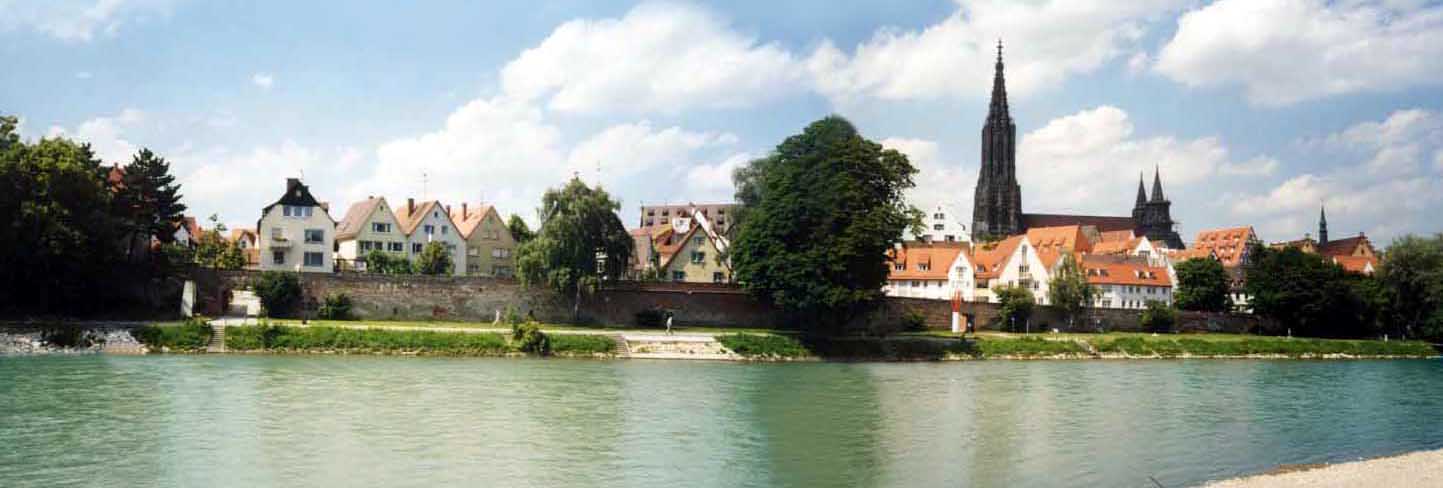 |
 |
| Ulm,
Donauschwabenufer * refer to map *
|
Ulm,
Donauschwabenufer * refer to map *
|
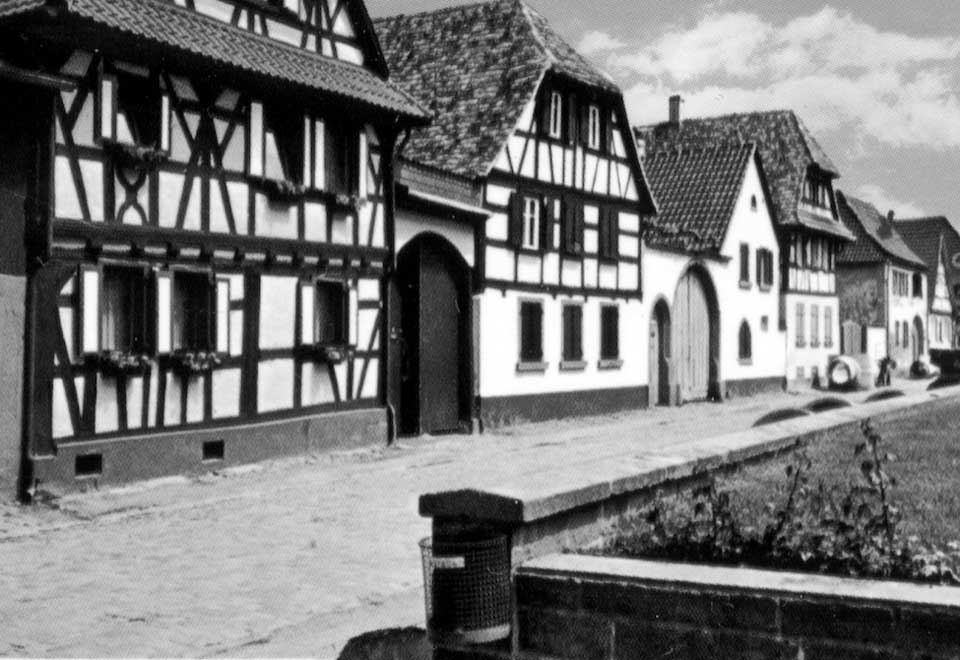 |
 |
|
A
typical village from where our ancestors originated in
Germany.
|
The
Donauschwabenufer, from where our ancestors boarded the Ulmer
Schachteln.
|
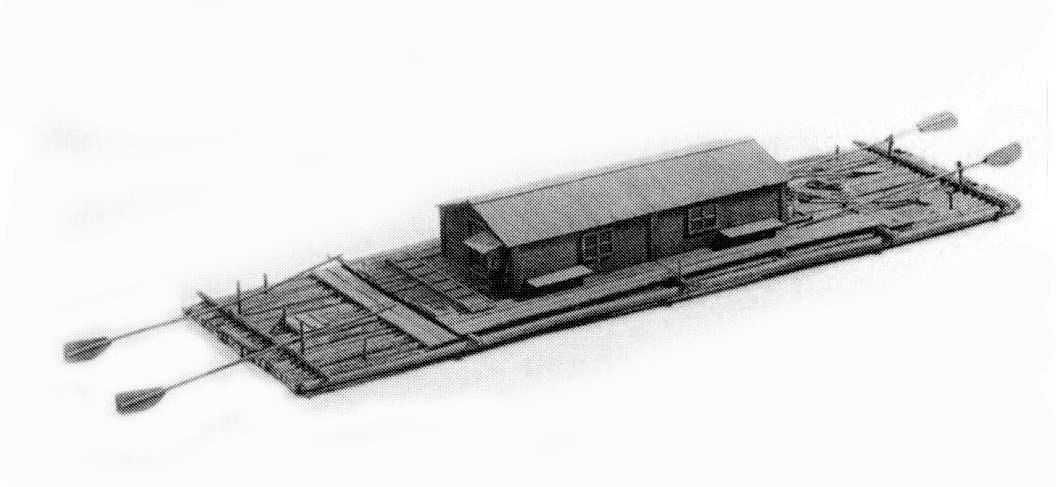 |
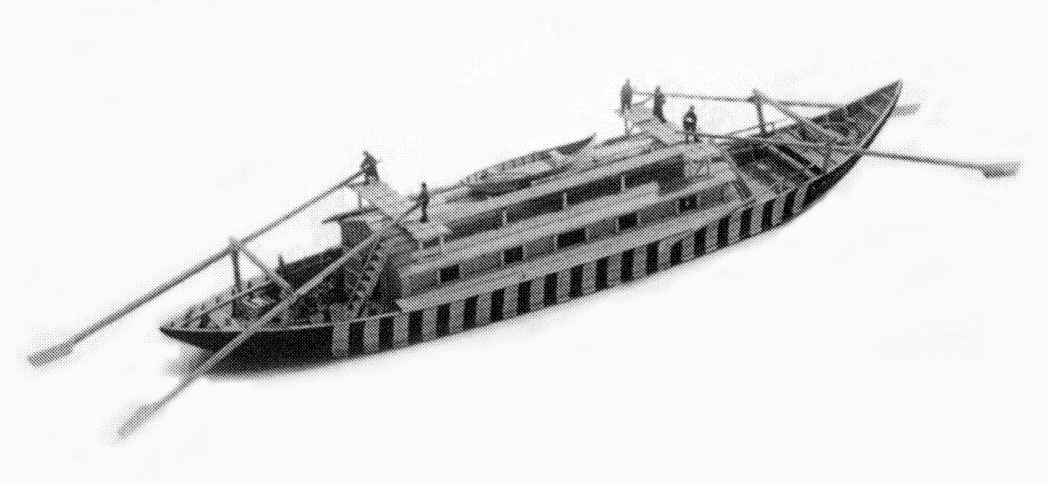 |
| The
Kehlheimer Plätte
|
The Ulmer Schachtel
|
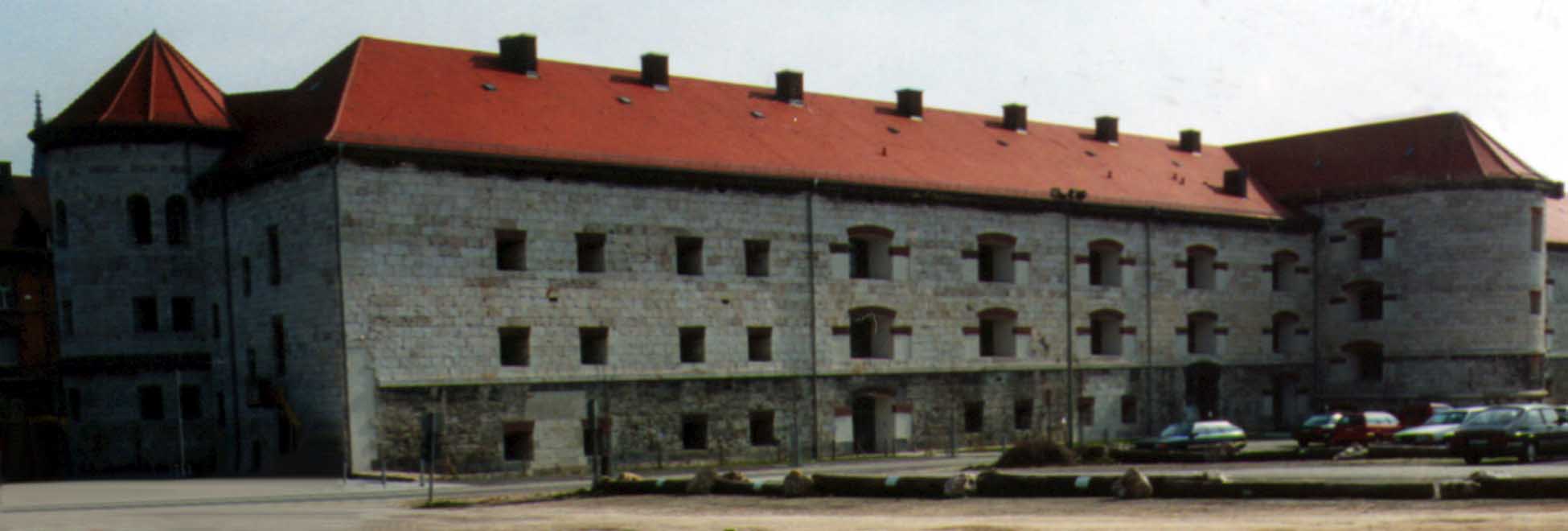 |
 |
| The Donauschwabe Museum located on 1 Schillerstraße.
|
Ulm,
Donauschwabenufer * refer to map *
|
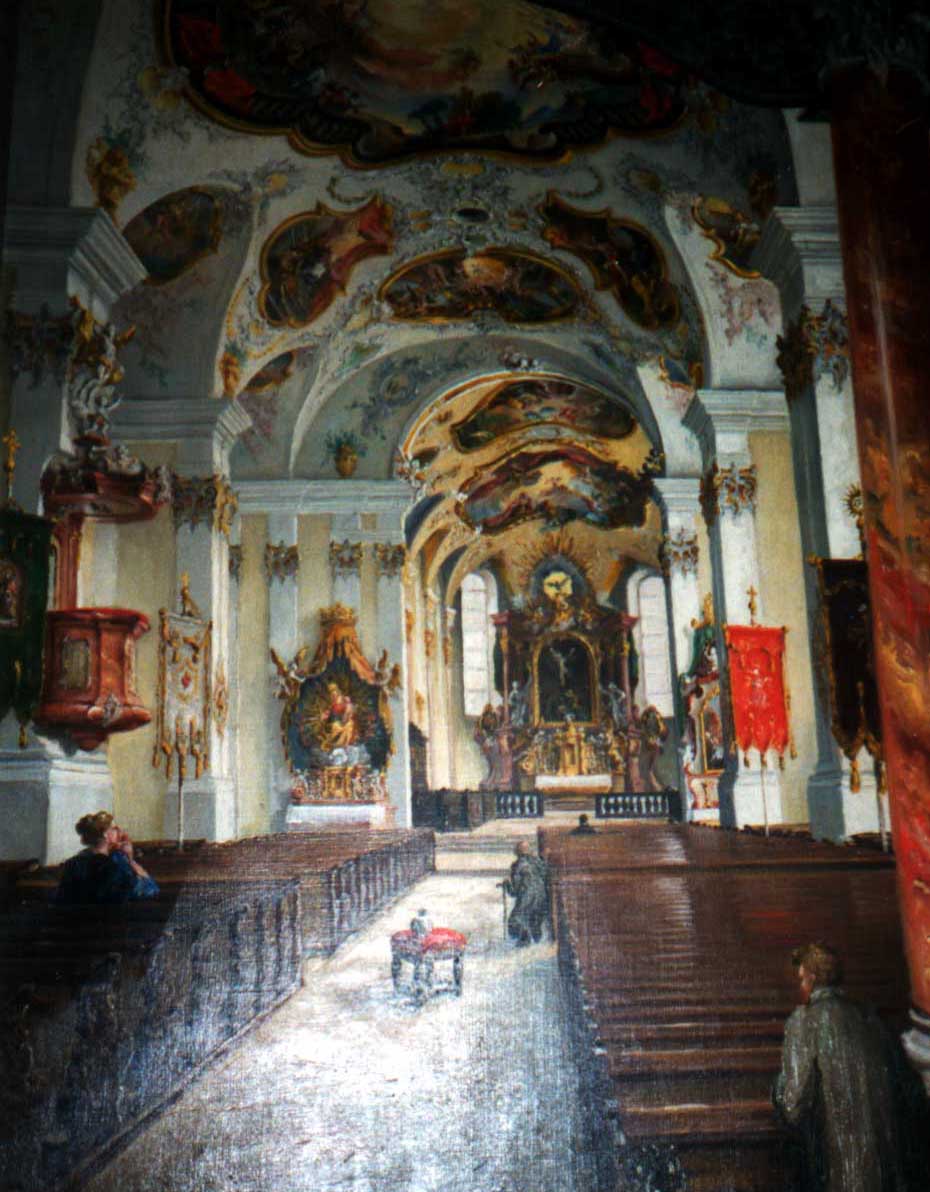 |
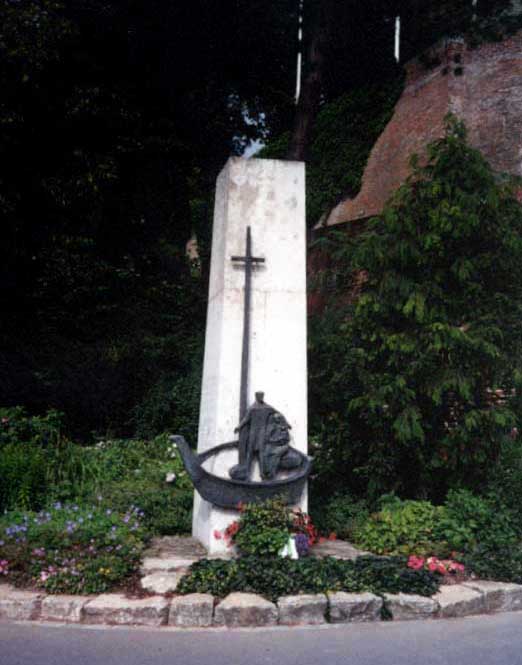 |
|
A painting of the Wengen-Church where many of our ancestors were married.
The church was destroyed during World War Two and built new.
|
The
monuments and plaques at the Donauschwabenufer.
|
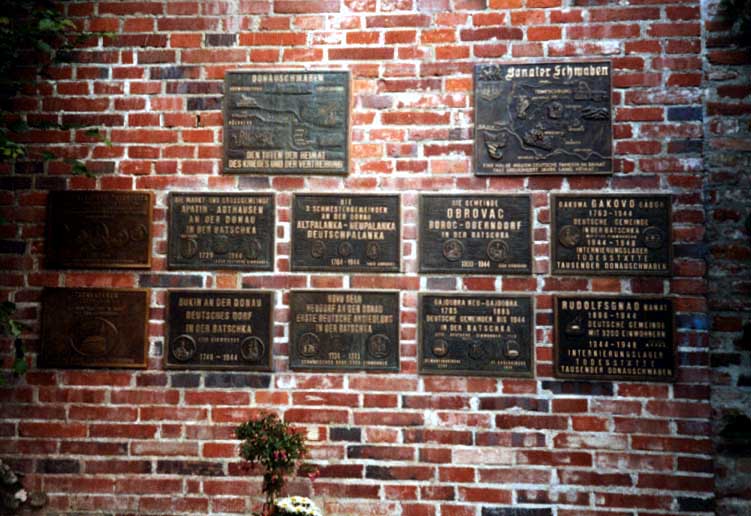 |
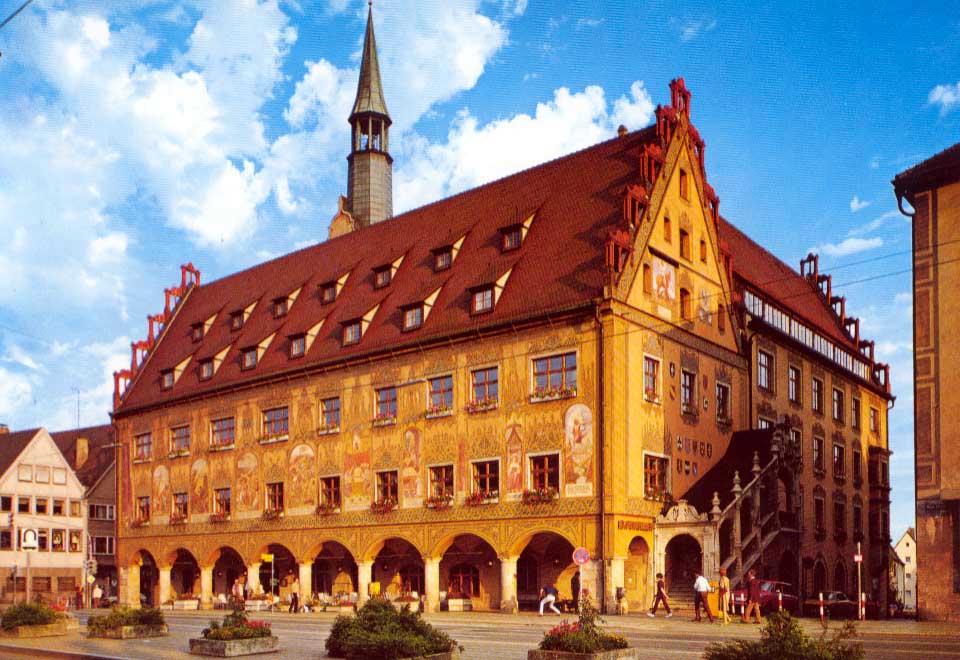 |
| The
monuments and plaques at the Donauschwabenufer.
|
The city hall in Ulm
|
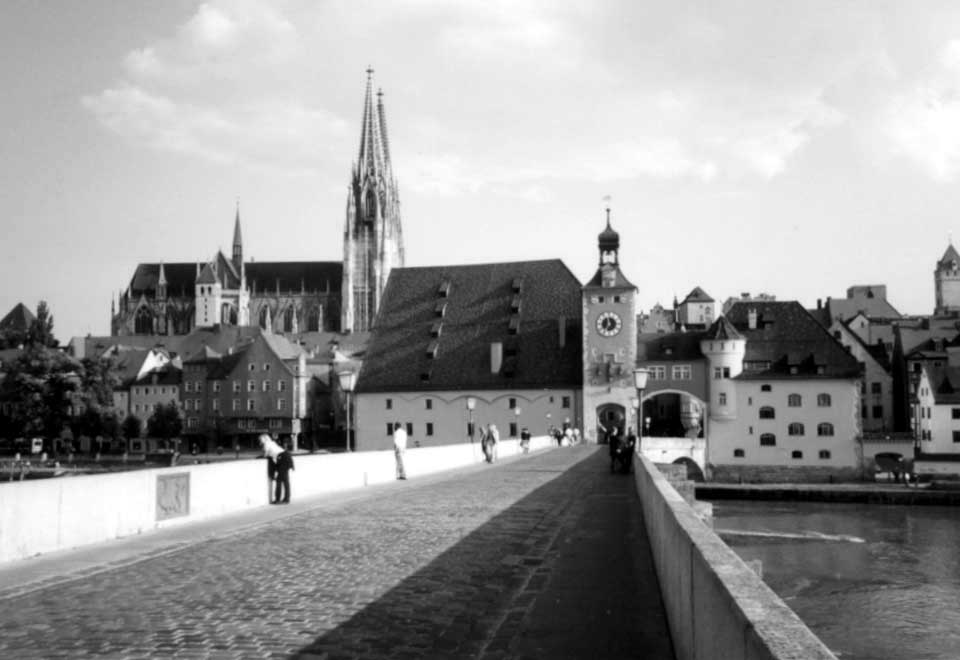 |
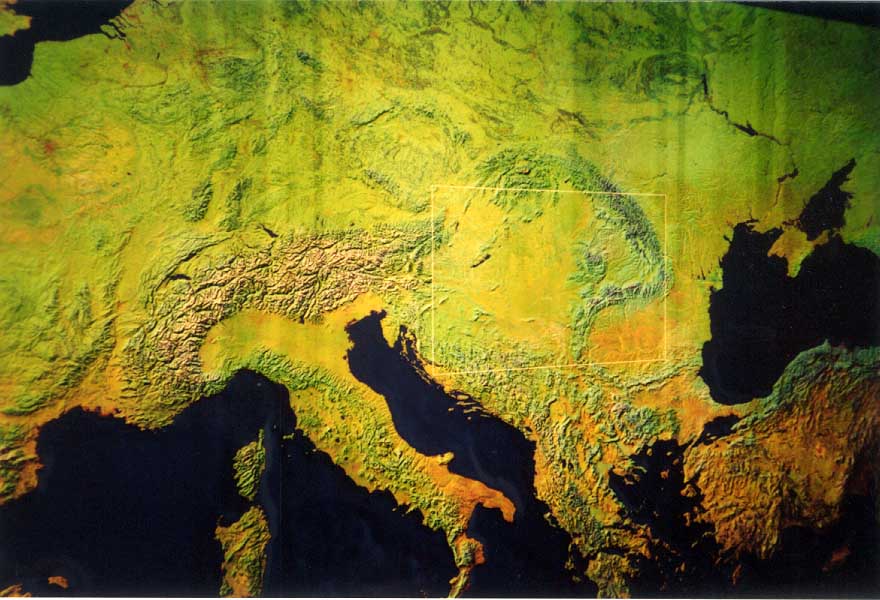 |
|
Regensburg – The stone bridge and a plague, on the Danube bank which
reminds us from where many of our ancestors too boarded the
Ulmer Schachteln or the Kehlheimer Plätten.
|
The Donauschwabe Museum located on 1 Schillerstraße.
|
 |
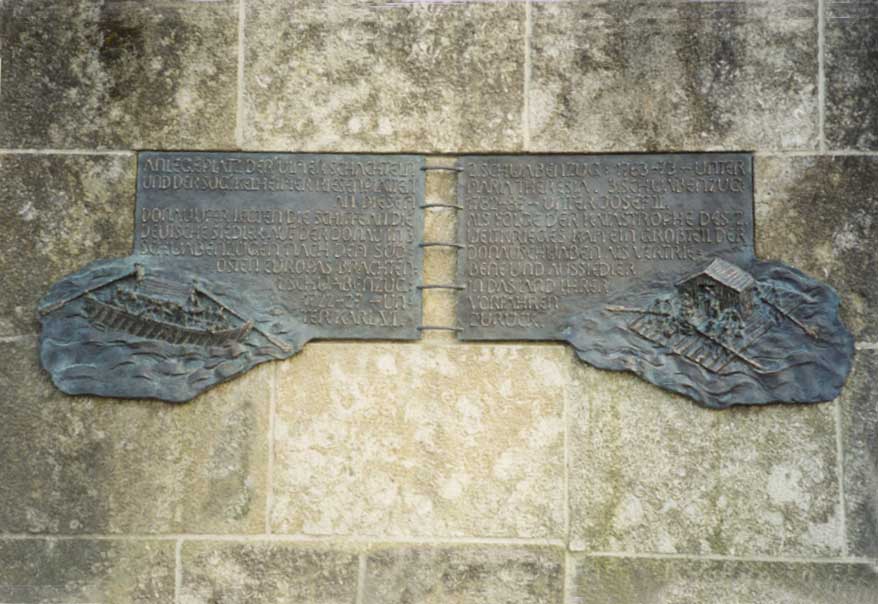 |
|
Schaunberg by Vischer-Past the village of Aschach where an Electric plant
is located the fortress Schaunberg came into view on the south
side of the Danube first mentioned in 1161.
|
Regensburg – The stone bridge and a plague, on the Danube bank which
reminds us from where many of our ancestors too boarded the
Ulmer Schachteln or the Kehlheimer Plätten.
|
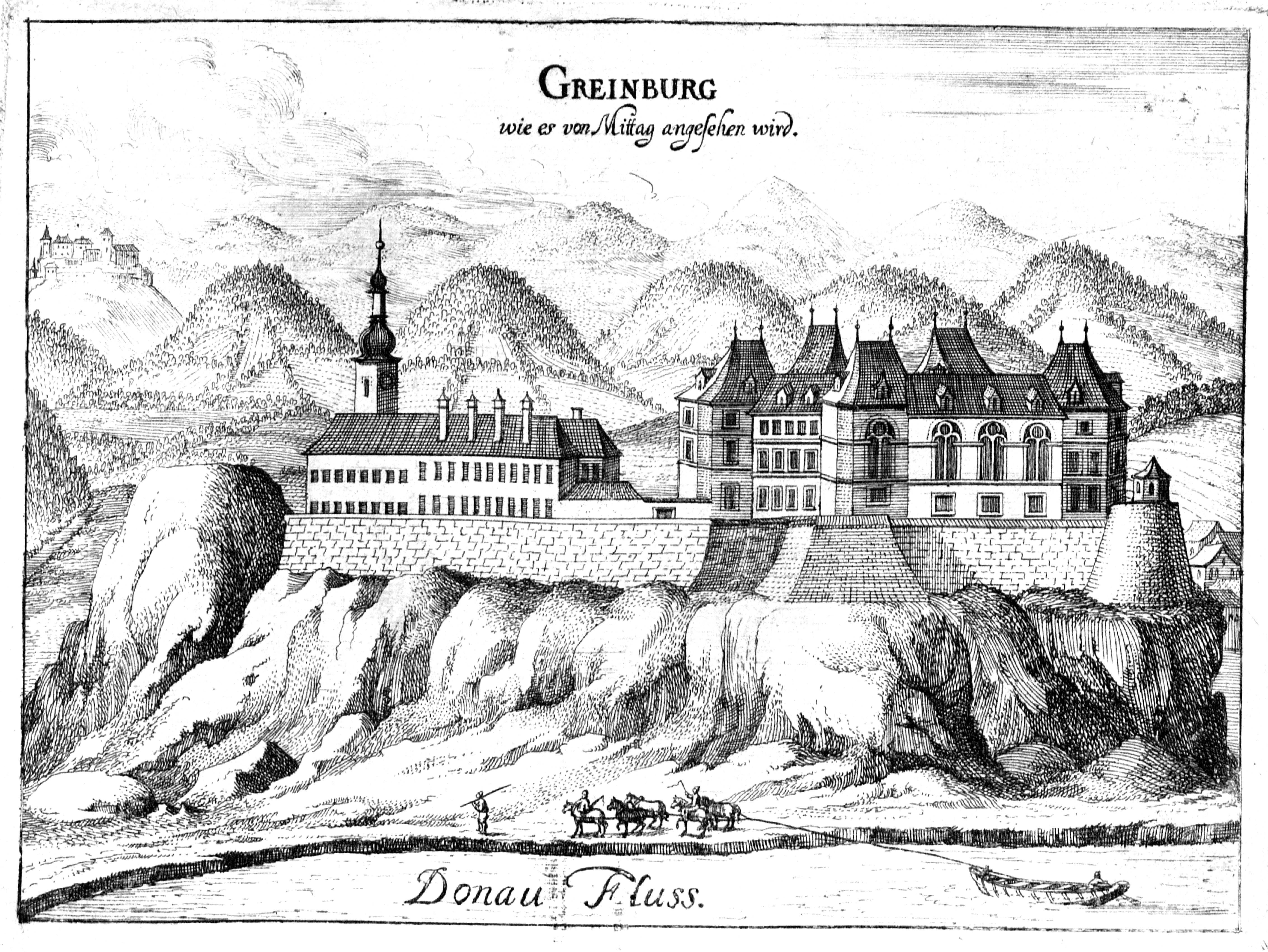 |
 |
|
The
Greiner Strudel by vischer-the most dangerous rapids on the
Danube which did cost many lives as a nearby cemetery shows.
There were three possibilities to use to get through; one
close to the banks, one in the turbulent center and “Hößgang”
on the right. The captain choose the Hößgang and guided the
ship successfully through although they touched a cliff with
the rear once.
|
Passau – by Leicht-seat of the archdiocese which included Vienna and
Budapest a one time. It became a pillar during medieval times
as Christianity seemed to decline.
|
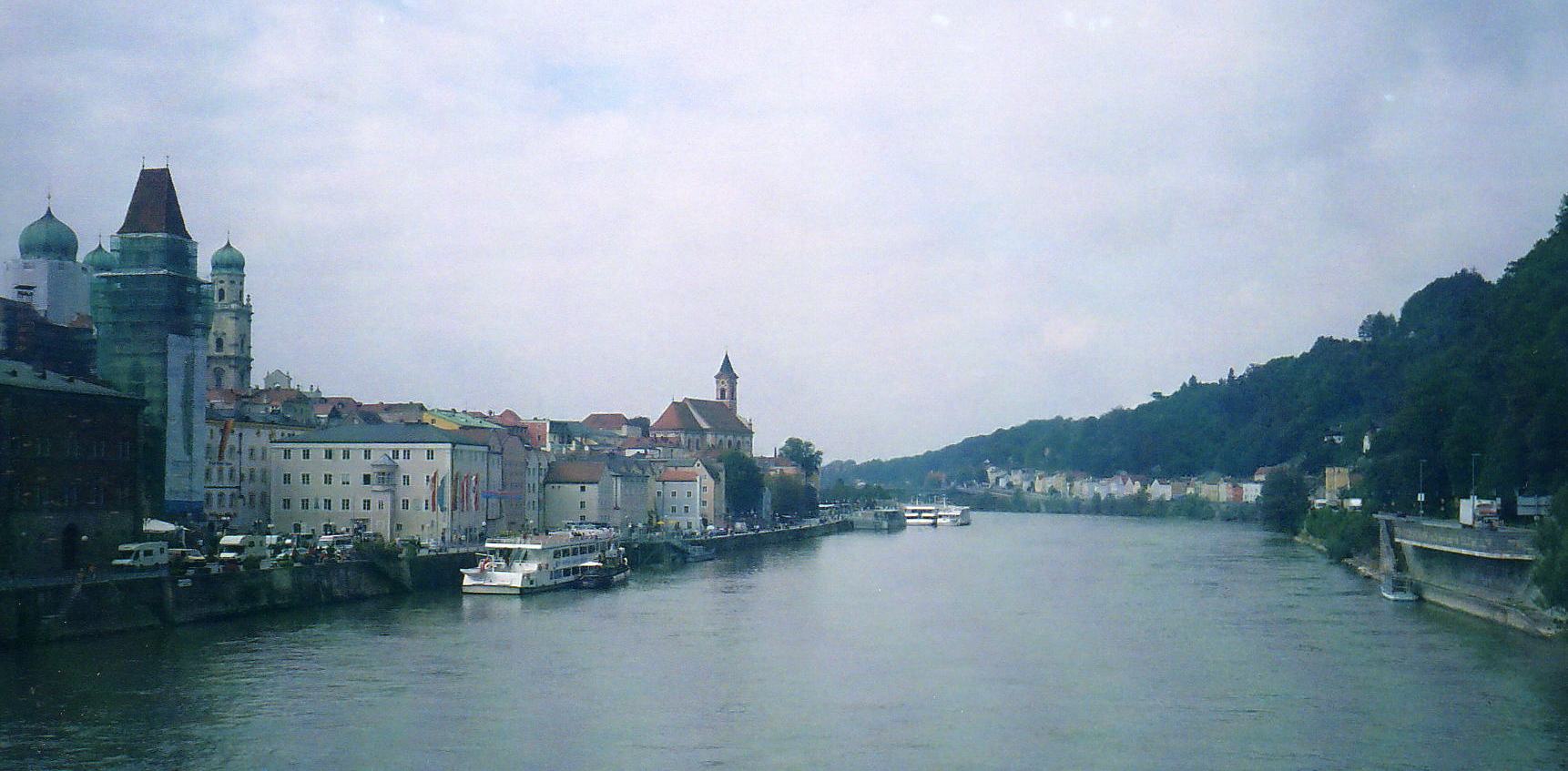 |
 |
|
Passau – by Leicht-seat of the archdiocese which included Vienna and
Budapest a one time. It became a pillar during medieval times
as Christianity seemed to decline.
|
The
“Schlögener Schlinge”- A 180 degree turn in the Danube
created a bend where the danger always existed to be carried
to the banks of the Danube and be stranded there.
|
 |
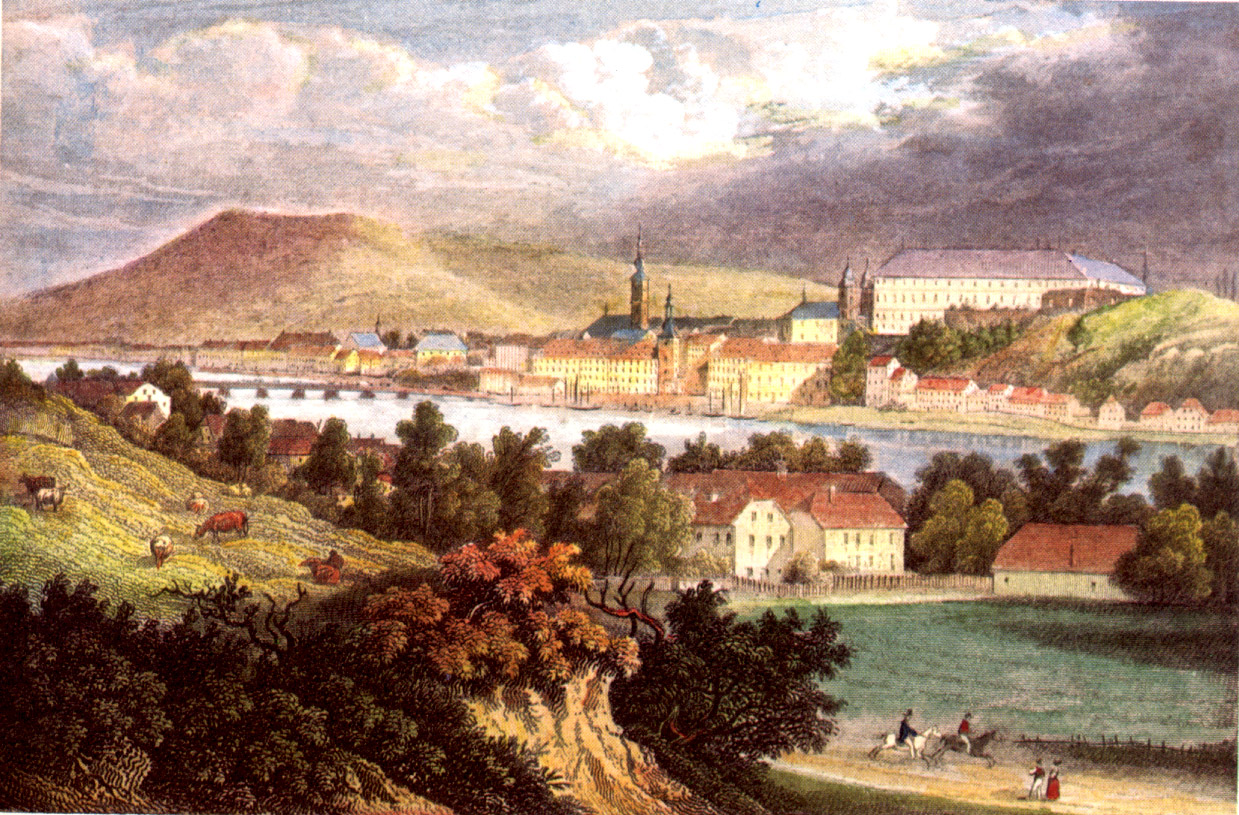 |
|
Linz by Merian-Is the capital city of Upper Austria where they were able
to go on land after 6 days on board of the Ulmer Schachtel.
|
Linz by Merian-Is the capital city of Upper Austria where they were able
to go on land after 6 days on board of the Ulmer Schachtel.
|
 |
 |
|
Enns-Is the oldest city
in Austria and dates back to Roman times when it was called
Lauriacum and used as a military camp by the Romans against
Germanic nations to the north.
|
The
Greiner Strudel by vischer-the most dangerous rapids on the
Danube which did cost many lives as a nearby cemetery shows.
There were three possibilities to use to get through; one
close to the banks, one in the turbulent center and “Hößgang”
on the right. The captain choose the Hößgang and guided the
ship successfully through although they touched a cliff with
the rear once.
|
 |
 |
|
Dürnstein
– has a romantic history not only for its beauty and the
fortress ruins built in 1140 it became famous because of the
saga of
the British King Richard Lionhart where he was held by duke
Leopold in 1192/1193 and freed after Blondle found him and a
ransom was paid to Leopold.
|
Werfenstein
by Vischer – Is located in Struden
and was an important fortress protecting against Turkish
raids. Across the Danube from there is the “Island Wörth”
and if needed chain were placed across the Danube to stop the
traffic on the Danube.
|
 |
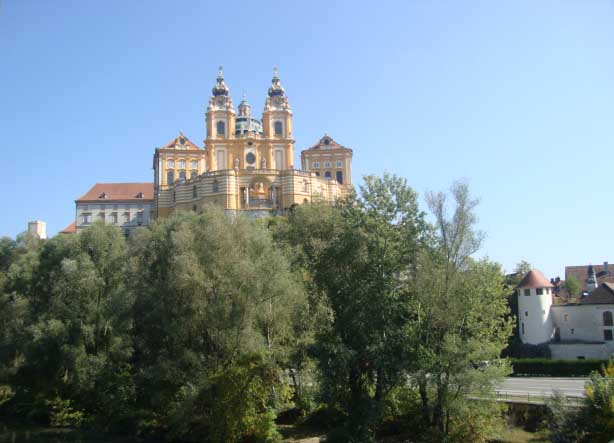 |
|
Melk
– The Lower Austrian city and well known Benedictine
Monastery it was first
mentioned as Medelike in 831. In 976 Leopold I a Babenberger made it his residence. The Benedictine Monastery is also known as the gate to the “Wachau”. It became
important for the revival of Christianity during medieval
time. It is in possession of the Benedictine Monks for
some 900 years and houses some of the most important cultural
treasures and relics going back to the Nibelungen and is part
of the UNESCO-World cultural sites.
|
Melk
– The Lower Austrian city and well known Benedictine
Monastery it was first
mentioned as Medelike in 831. In 976 Leopold I a Babenberger made it his residence. The Benedictine Monastery is also known as the gate to the “Wachau”. It became
important for the revival of Christianity during medieval
time. It is in possession of the Benedictine Monks for
some 900 years and houses some of the most important cultural
treasures and relics going back to the Nibelungen and is part
of the UNESCO-World cultural sites.
|
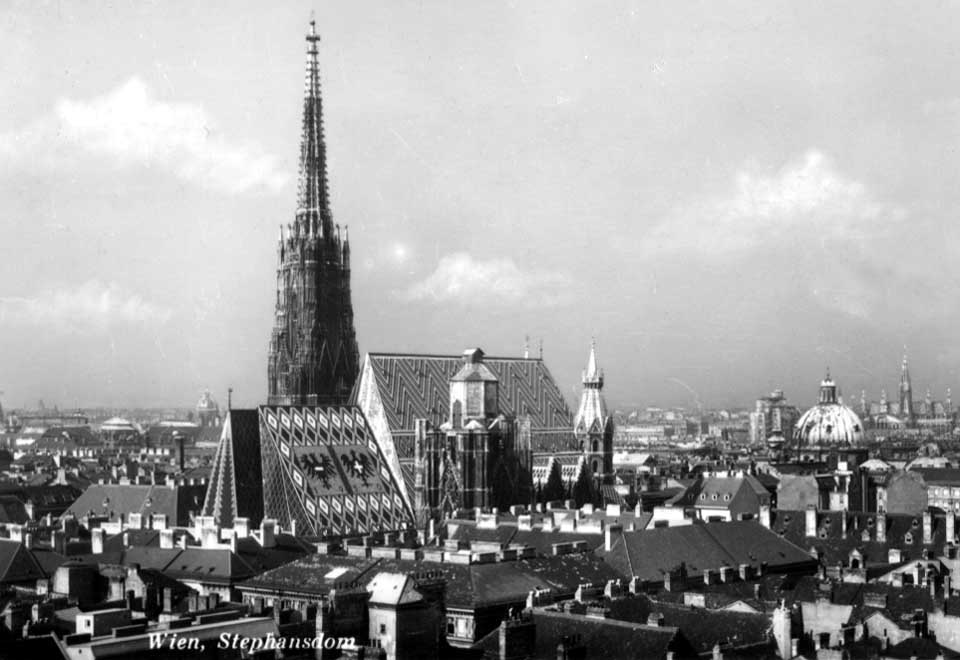 |
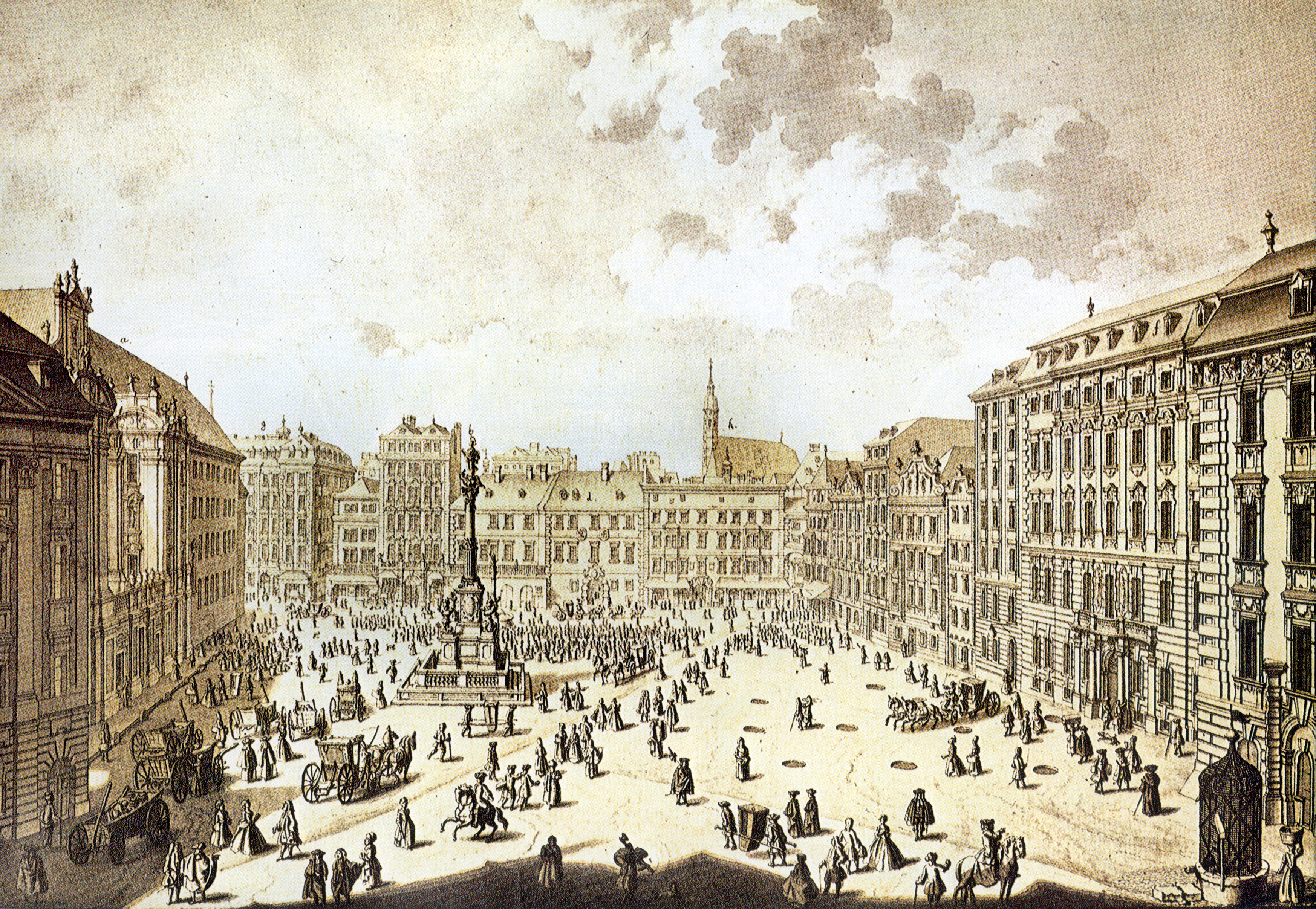 |
|
Vienna
– began its history as the Roman Legion Camp Carnuntum, some
of its ruins can still be found in the center of the city and
the imperial palace of Schönbrunn.
Many of the ruins surrounding Vienna were deliberately carried
off until the 18th Century because they interfered
with the farmland and only in 1850 official excavations began
to preserve the valuable ruins. Vienna was developed into a
world metropolis during the reign of Emperor Karl VI and his
daughter Empress Maria Theresia. The Hofburg, the St.
Stephan’s Cathedral, the castles Schönbrunn and Belvedere
are among but view cultural attractions of the city today.
Among them the more notable events which took place here is
the baptism of the Hungarian King in the St. Stephan’s
Cathedral as Stephan I in 997and the siege of Vienna twice by
the Turks. Among the famous artists living here was the
Strauss. Family, Mozart and Hayden. Joseph II the reformer and
humanist continued to make many reforms of the laws, such as
freedom of religion and freedoms from servitude and most of
all the abolishment of physical punishments; The torture.
Torture was still practiced in Tolnau by Hungarian Landlords
on their German farm workers so that Maria Theresia had to
intervene. Reference: das Heimabuch Palanka an der Domau.
|
Vienna
– began its history as the Roman Legion Camp Carnuntum, some
of its ruins can still be found in the center of the city and
the imperial palace of Schönbrunn.
Many of the ruins surrounding Vienna were deliberately carried
off until the 18th Century because they interfered
with the farmland and only in 1850 official excavations began
to preserve the valuable ruins. Vienna was developed into a
world metropolis during the reign of Emperor Karl VI and his
daughter Empress Maria Theresia. The Hofburg, the St.
Stephan’s Cathedral, the castles Schönbrunn and Belvedere
are among but view cultural attractions of the city today.
Among them the more notable events which took place here is
the baptism of the Hungarian King in the St. Stephan’s
Cathedral as Stephan I in 997and the siege of Vienna twice by
the Turks. Among the famous artists living here was the
Strauss. Family, Mozart and Hayden. Joseph II the reformer and
humanist continued to make many reforms of the laws, such as
freedom of religion and freedoms from servitude and most of
all the abolishment of physical punishments; The torture.
Torture was still practiced in Tolnau by Hungarian Landlords
on their German farm workers so that Maria Theresia had to
intervene. Reference: das Heimabuch Palanka an der Domau.
|
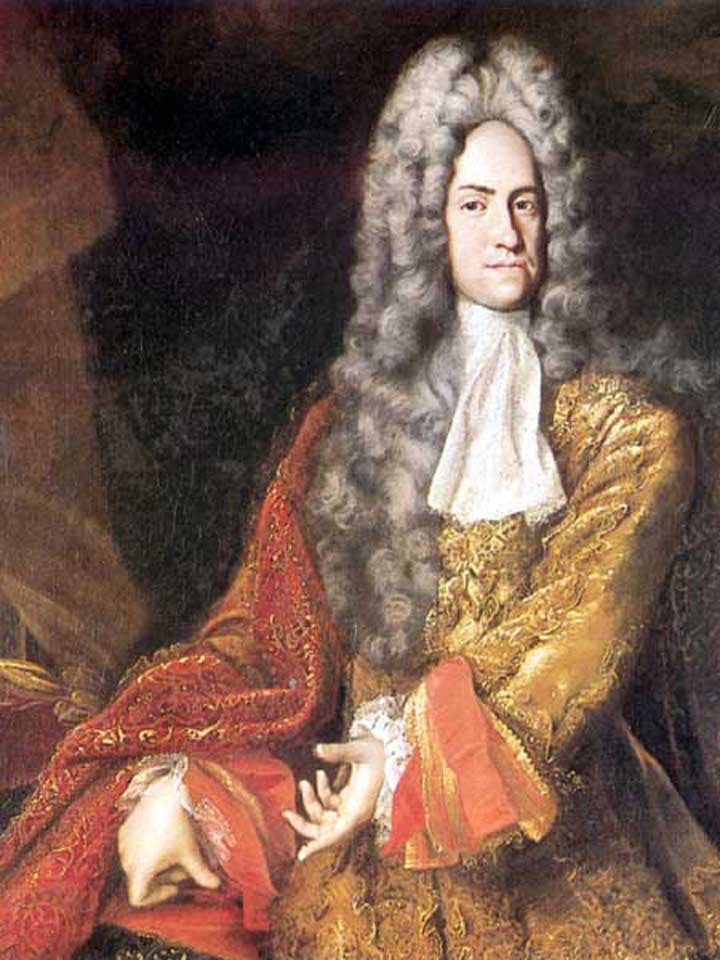 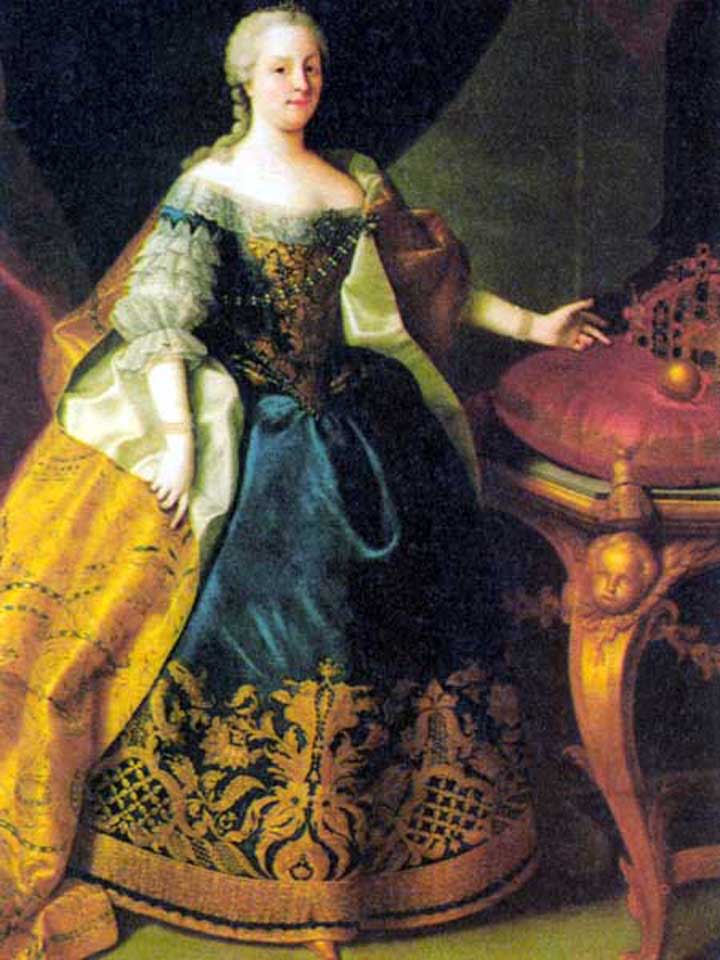  |
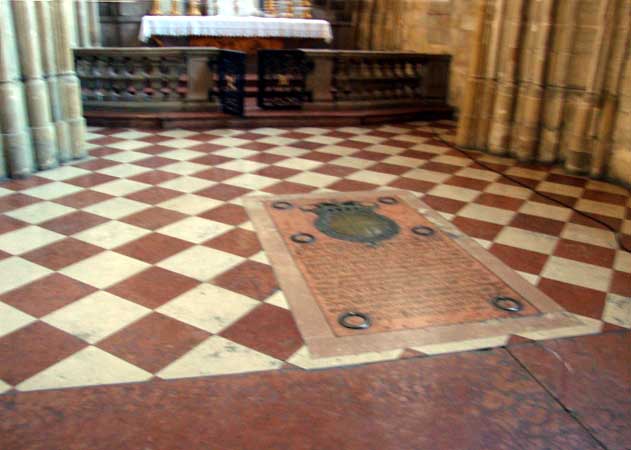 |
|
Prince
Eugene of Savoy-his portrait-his Monument at the “Heldenplatz”-shows
him in the Battle at “Zenta” in 1697 by Franz Eisenhut of
Palanka. The painting is located in Sombor, Vojvodina,- shows
him in the battle in Temesvar 1716,- shows him at the site of
the signing the peace treaty at Karlowitz Jan. 26. 1699. This
treaty was followed by the treaty of Passarowitz on July 21
1718.
|
Vienna
- St Stephan’s Cathedral, the cathedral inside where the
grave site of Prince Eugene of Savoy is located.- The
Belvedere Castle, residence of the Prince Eugene, by now the
richest man in the world. He sold the castle later to Empress
Maria Theresia who turned it into a museum for modern culture.
|
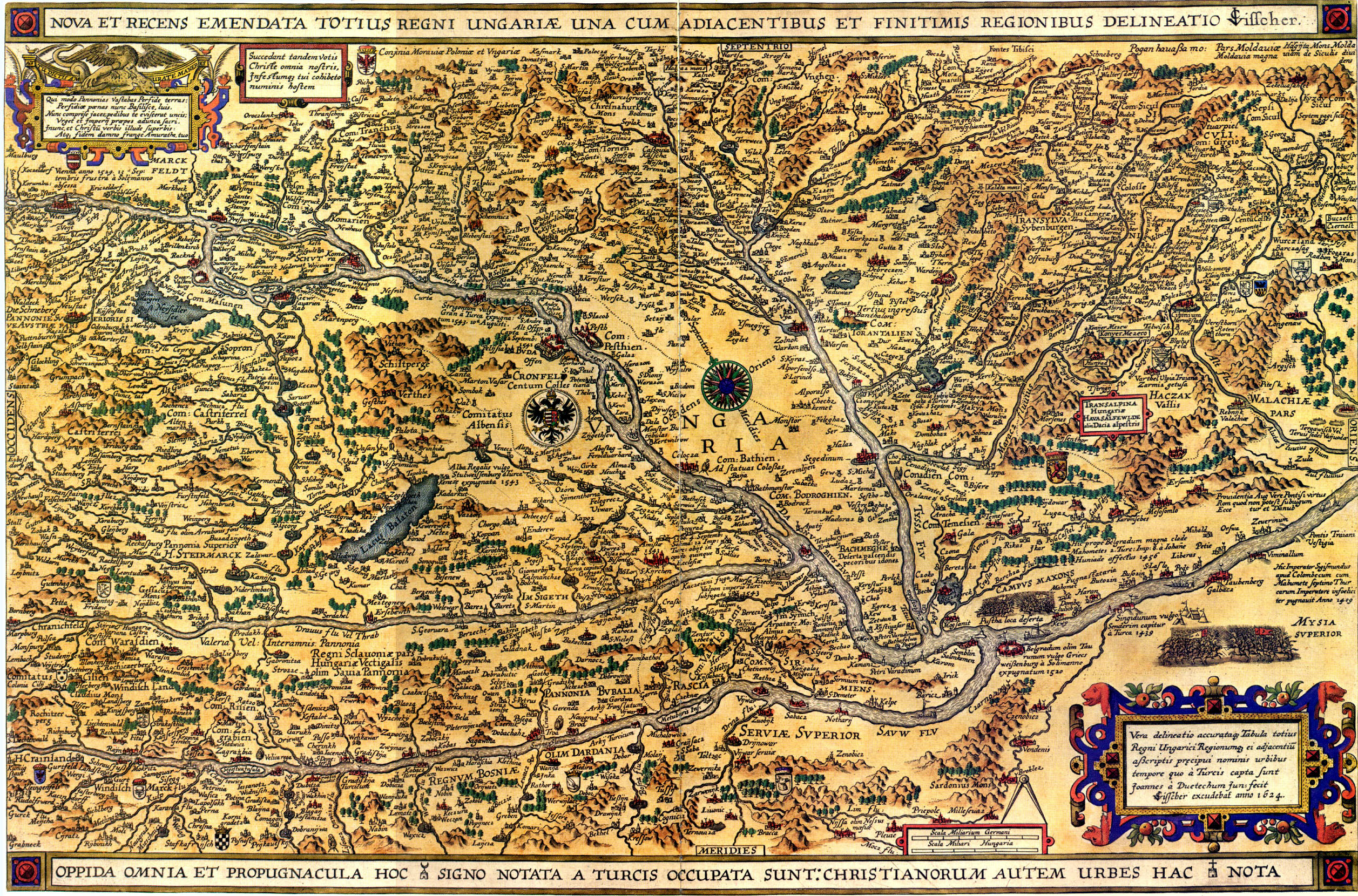 |
 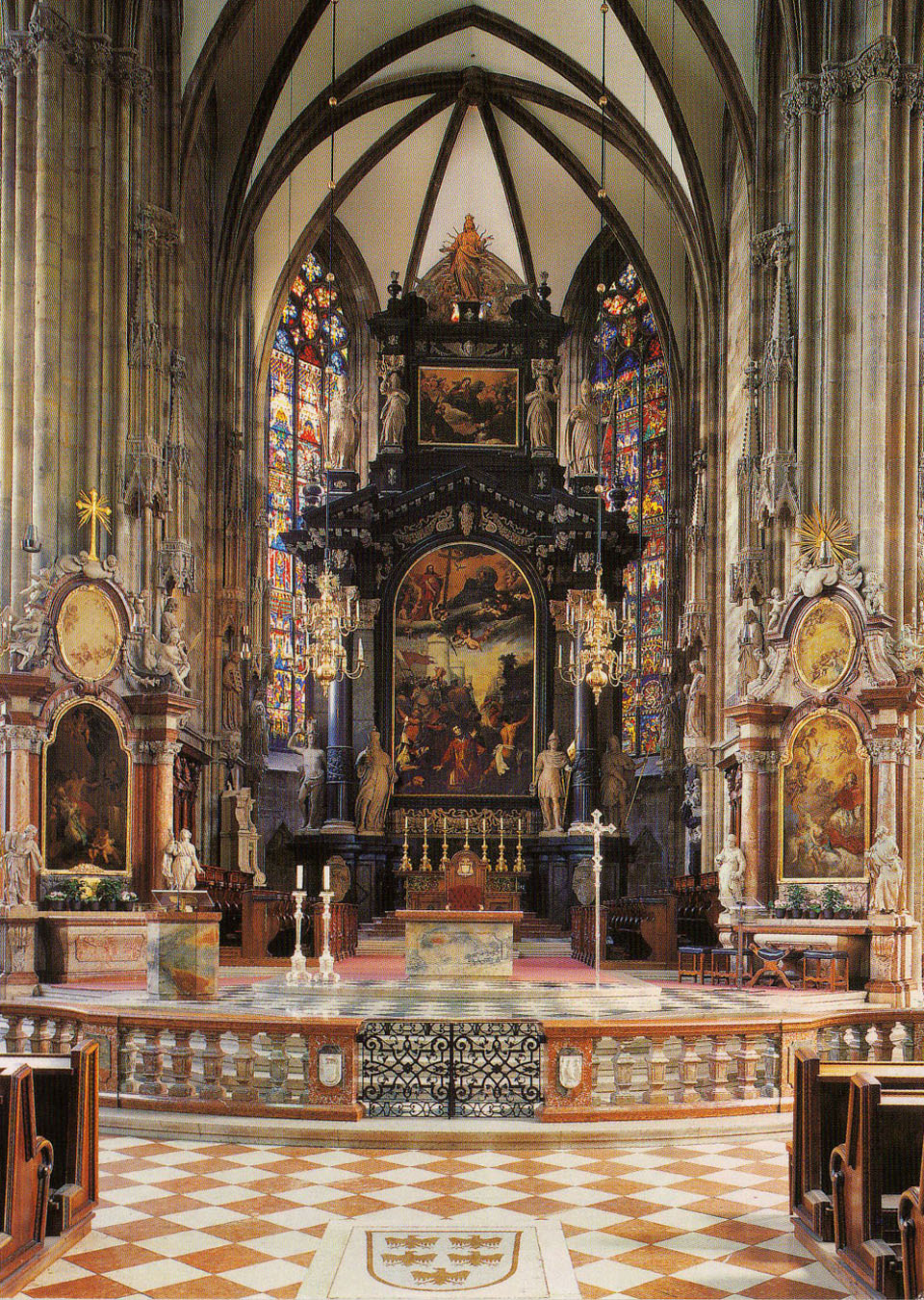 |
| Hungary
|
Vienna
- St Stephan’s Cathedral, the cathedral inside where the
grave site of Prince Eugene of Savoy is located.- The
Belvedere Castle, residence of the Prince Eugene, by now the
richest man in the world. He sold the castle later to Empress
Maria Theresia who turned it into a museum for modern culture.
|
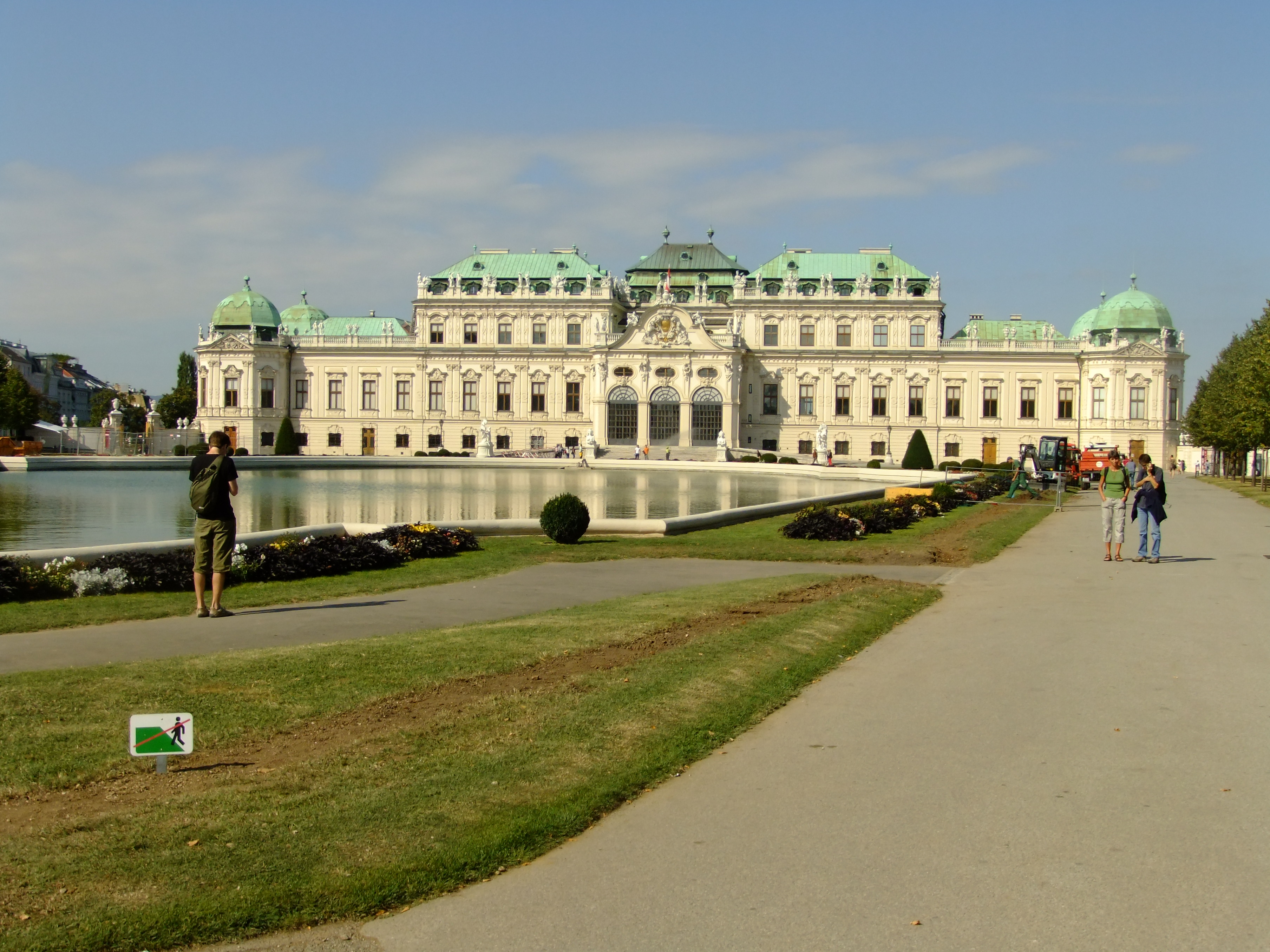 |
 |
|
Vienna
- St Stephan’s Cathedral, the cathedral inside where the
grave site of Prince Eugene of Savoy is located.- The
Belvedere Castle, residence of the Prince Eugene, by now the
richest man in the world. He sold the castle later to Empress
Maria Theresia who turned it into a museum for modern culture.
|
Bratislava
became the Hungarian capital during the occupation by the
Turks
|
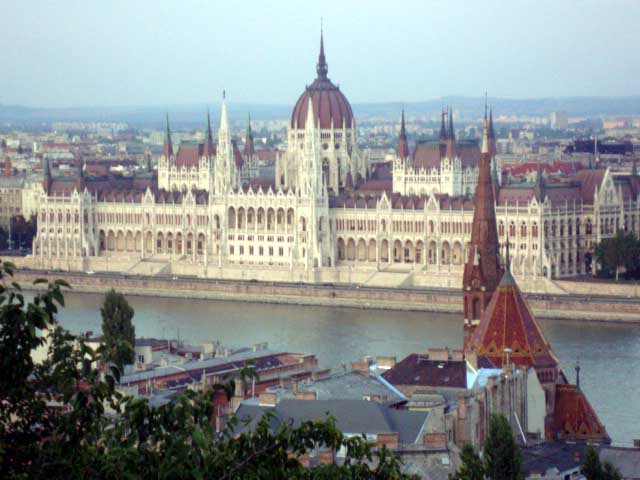 |
 |
|
Budapest-till
the 19th Buda and Pest were two separate cities. -
Budapest is often referred to as the; “the Paris of the
East”. The old city of Buda was founded by Bela IV which is
marked by the tower of the St. Mathias cathedral and the
towers of the fisher men’s castle and its bastions. The
Gellertberg became known by St. Gerhard, a missionary working
in the area around 1046 and killed by none Christians. The
best known building right on the bank of the Danube is the
Parliament Bldg. The Parliament Bldg., which claims to be the
largest building in the world (seen from the foundation).
|
Esztergom
was the first Hungarian capital during the reign of the Arpad
kings. The Cathedral was founded by Stefan I, in 1010.
|
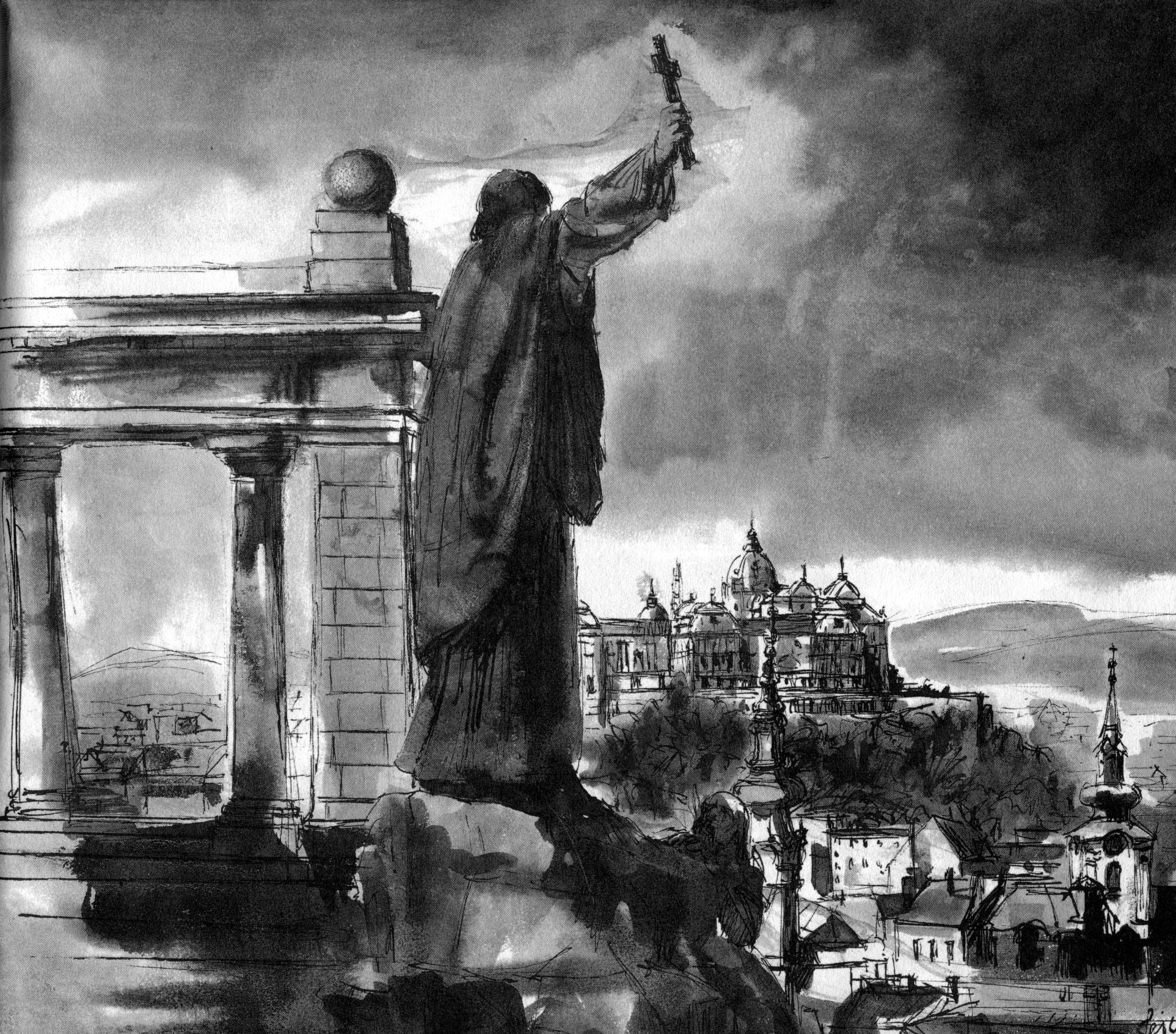 |
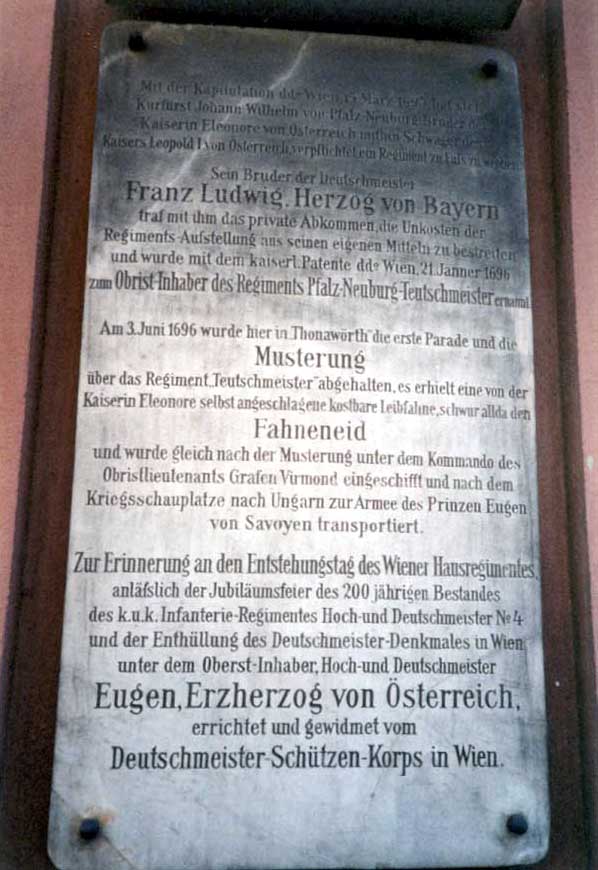 |
|
Budapest-till
the 19th Buda and Pest were two separate cities. -
Budapest is often referred to as the; “the Paris of the
East”. The old city of Buda was founded by Bela IV which is
marked by the tower of the St. Mathias cathedral and the
towers of the fisher men’s castle and its bastions. The
Gellertberg became known by St. Gerhard, a missionary working
in the area around 1046 and killed by none Christians. The
best known building right on the bank of the Danube is the
Parliament Bldg. The Parliament Bldg., which claims to be the
largest building in the world (seen from the foundation).
|
Donauwörth – A plague, which reminds us of the time when recruits’
for the Deuschmeister Regiment in Vienna were in scripted.
Donauwörth.
|
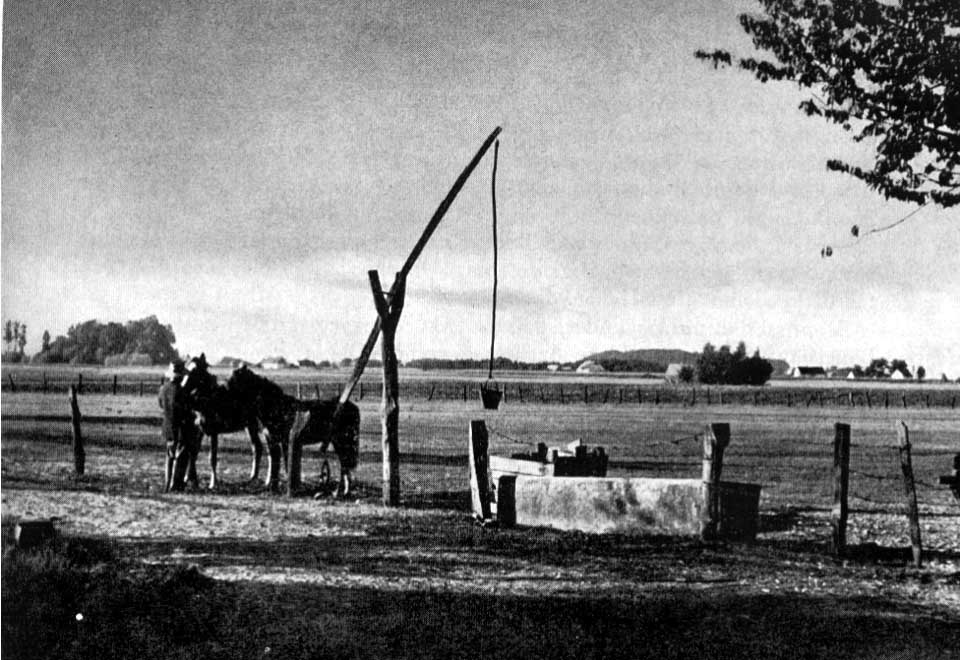 |
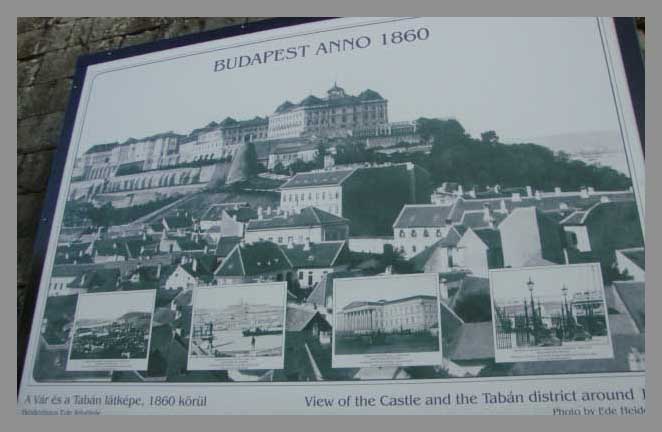 |
|
A
typical Hungary Puszta landscape
whit a counter balance beam, our ancestor would get familiar
with.
|
Budapest-till
the 19th Buda and Pest were two separate cities. -
Budapest is often referred to as the; “the Paris of the
East”. The old city of Buda was founded by Bela IV which is
marked by the tower of the St. Mathias cathedral and the
towers of the fisher men’s castle and its bastions. The
Gellertberg became known by St. Gerhard, a missionary working
in the area around 1046 and killed by none Christians. The
best known building right on the bank of the Danube is the
Parliament Bldg. The Parliament Bldg., which claims to be the
largest building in the world (seen from the foundation).
|
 |
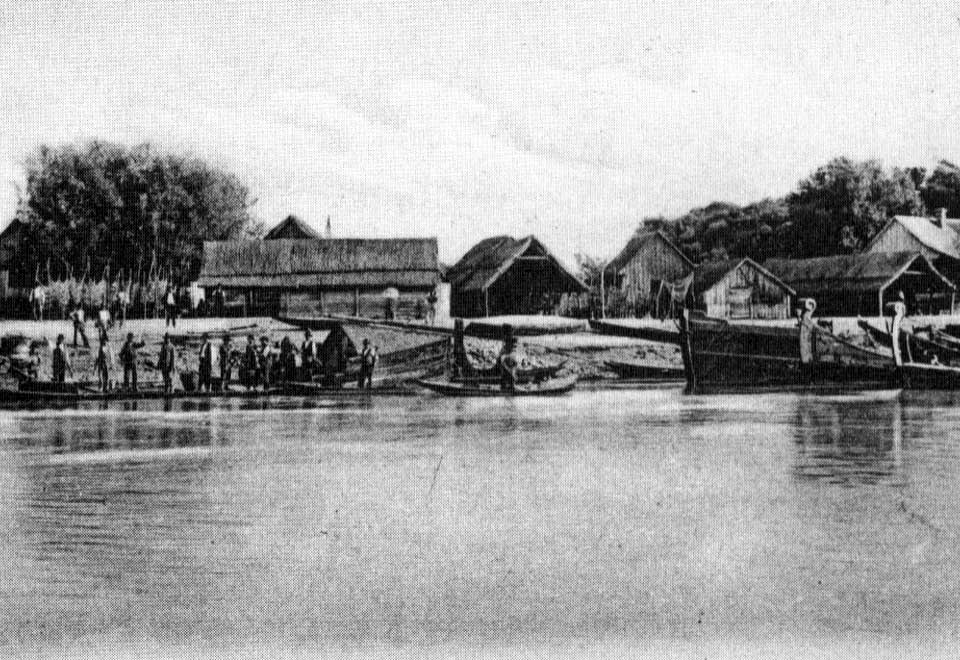 |
|
A
lot of the sites we guided you through our ancestors could not
see, however, it is certain that they could see the beautiful
sunsets on the Danube.
|
Apatin,
the banks of the Danube where our ancestors landed and
disembarked from the ships and moved land in.
|
 |
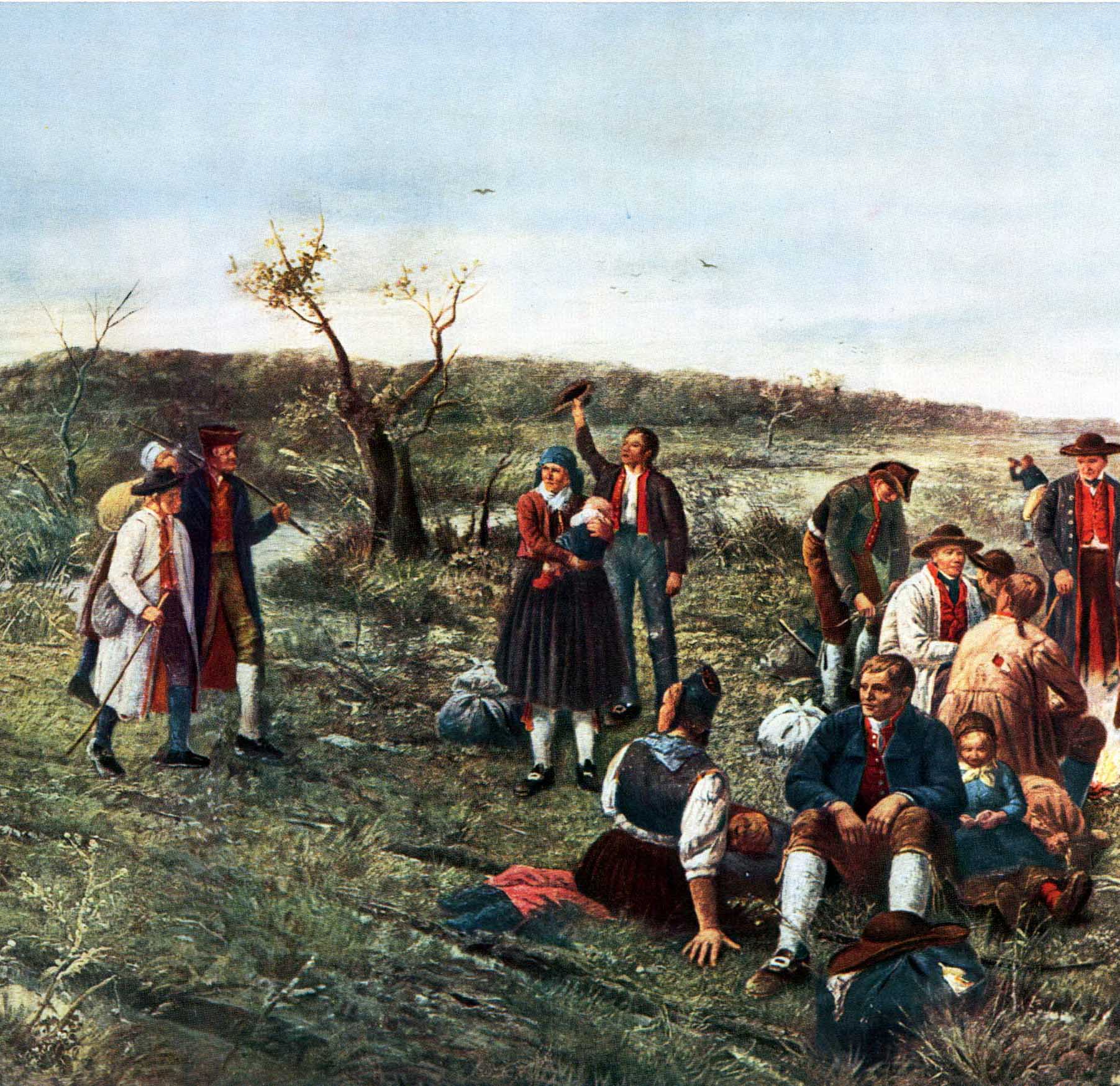 |
|
“Einzug
der Deutschen in Ungarn” by Stefan Jäger, “The Great
Swabian Migration” of the 18th Century.
|
“Einzug
der Deutschen in Ungarn” by Stefan Jäger, “The Great
Swabian Migration” of the 18th Century.
|
 |
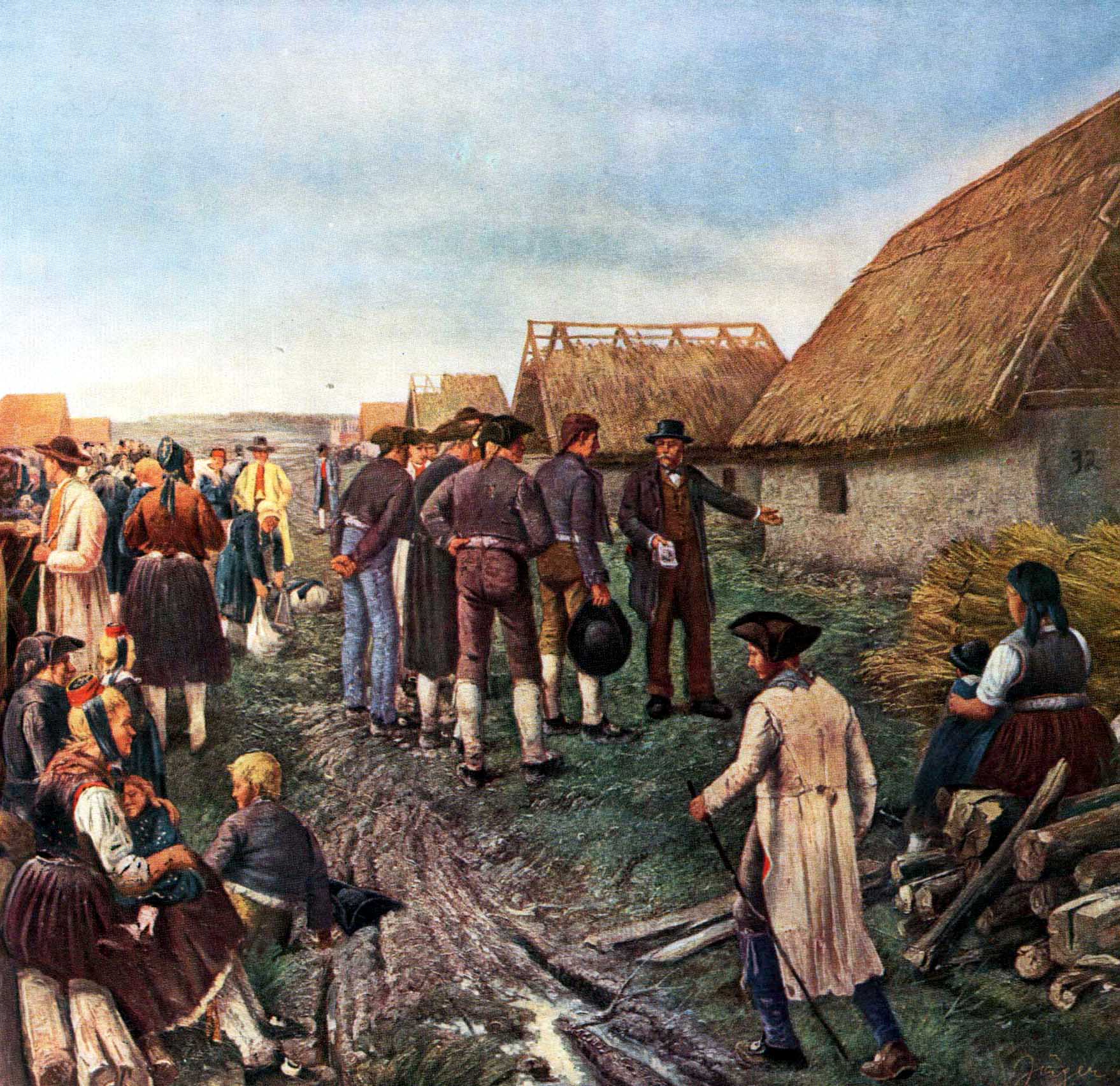 |
|
“Einzug
der Deutschen in Ungarn” by Stefan Jäger, “The Great
Swabian Migration” of the 18th Century.
|
“Einzug
der Deutschen in Ungarn” by Stefan Jäger, “The Great
Swabian Migration” of the 18th Century.
|
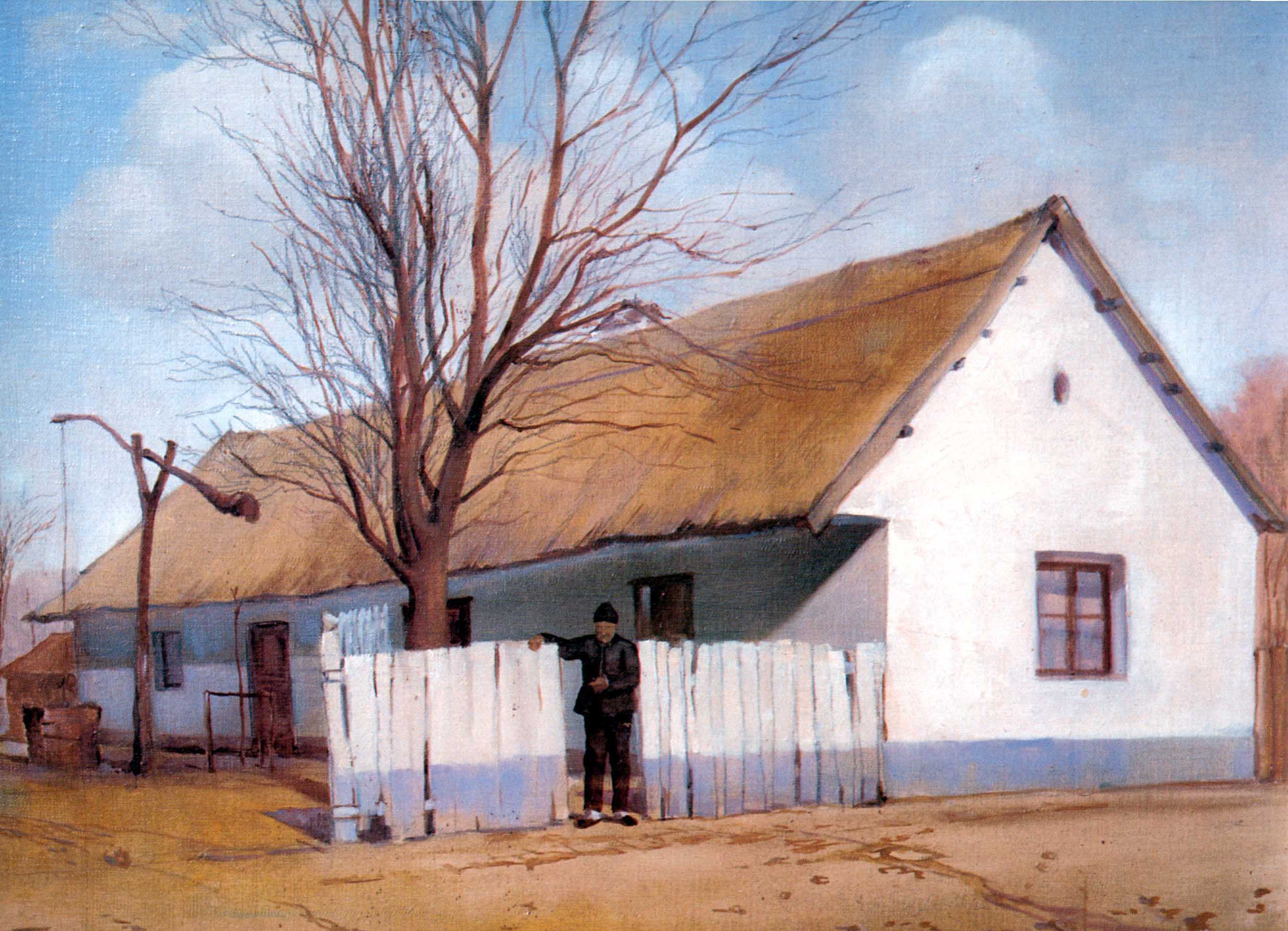 |
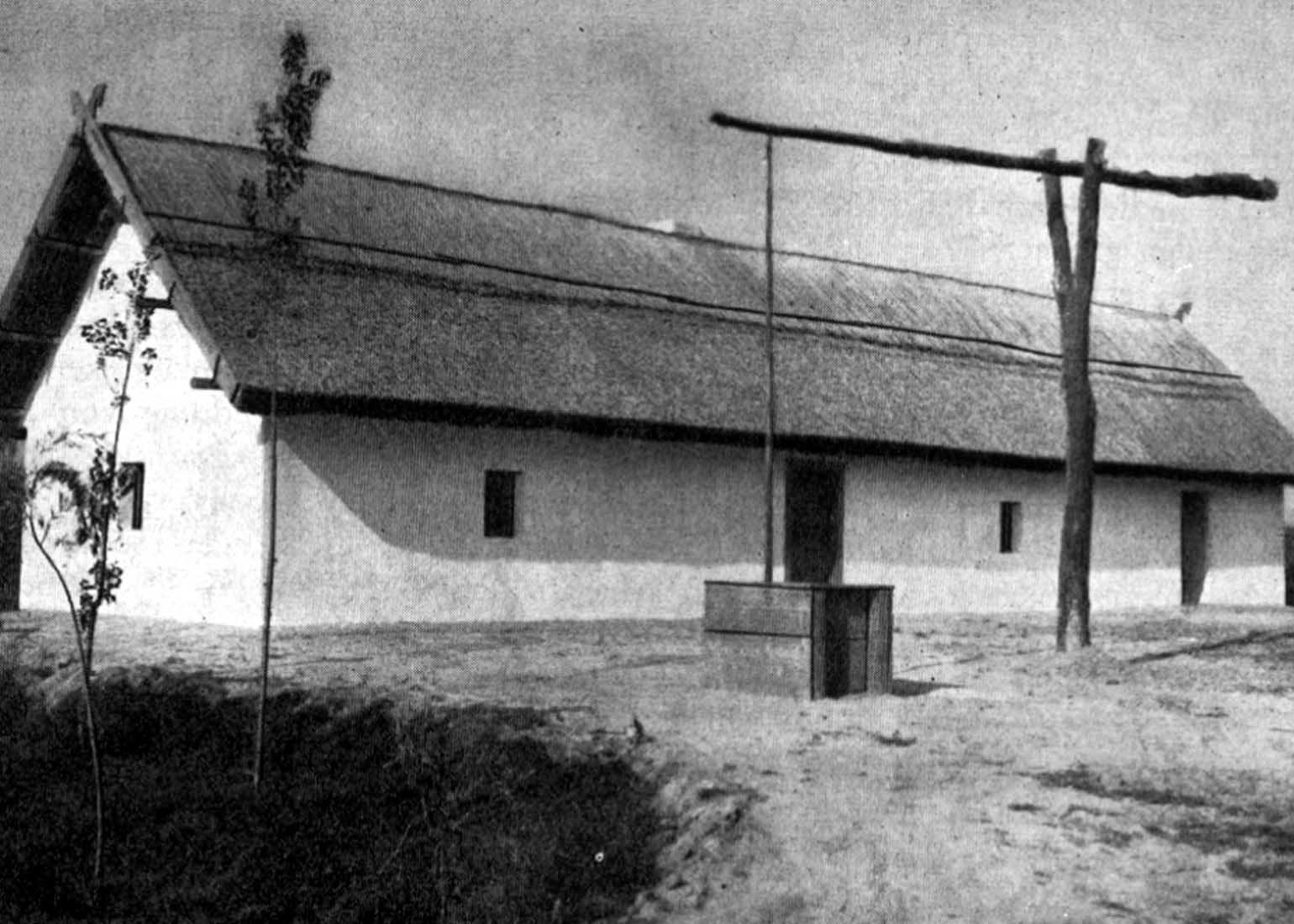 |
| The colonist house by
Ferch.
|
An original Settlers
house in Apatin.
|
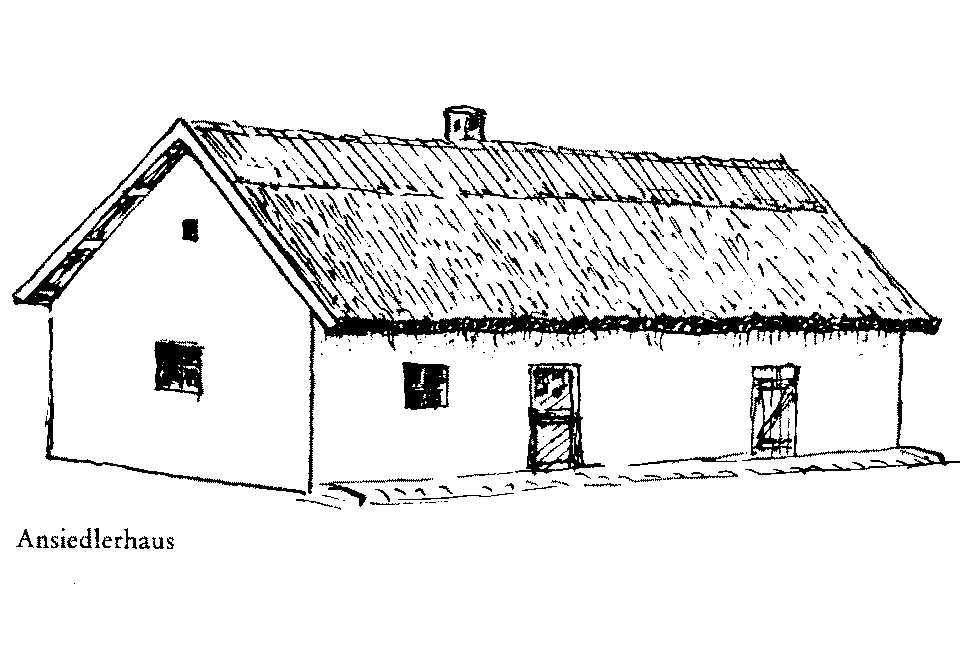 |
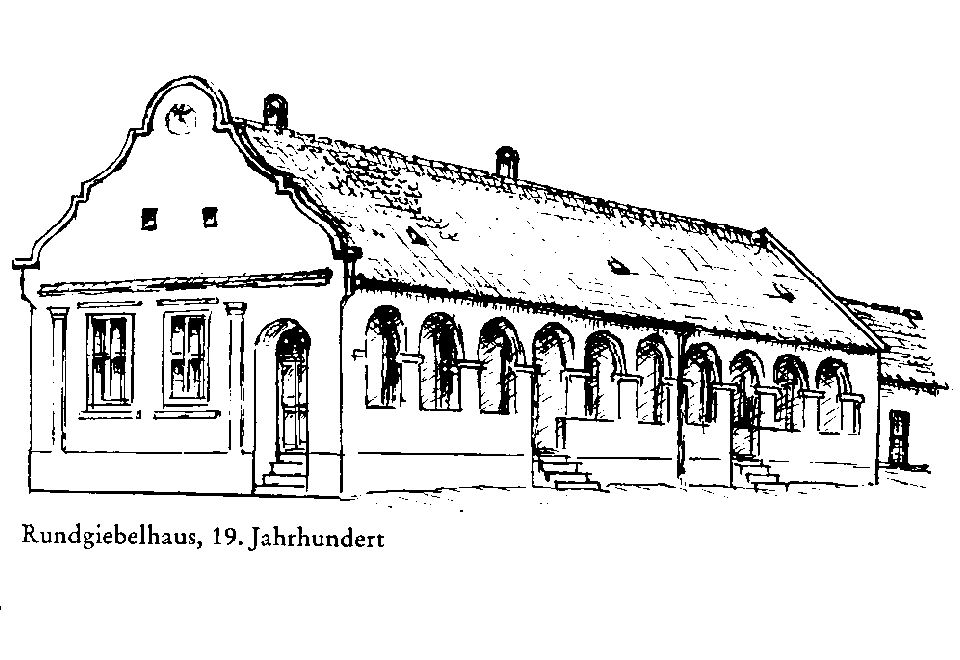 |
|
Typical
Donauschwaben houses the early settler’s home 18th
Century and a later 19th Century home.
|
Typical
Donauschwaben houses the early settler’s home 18th
Century and a later 19th Century home.
|
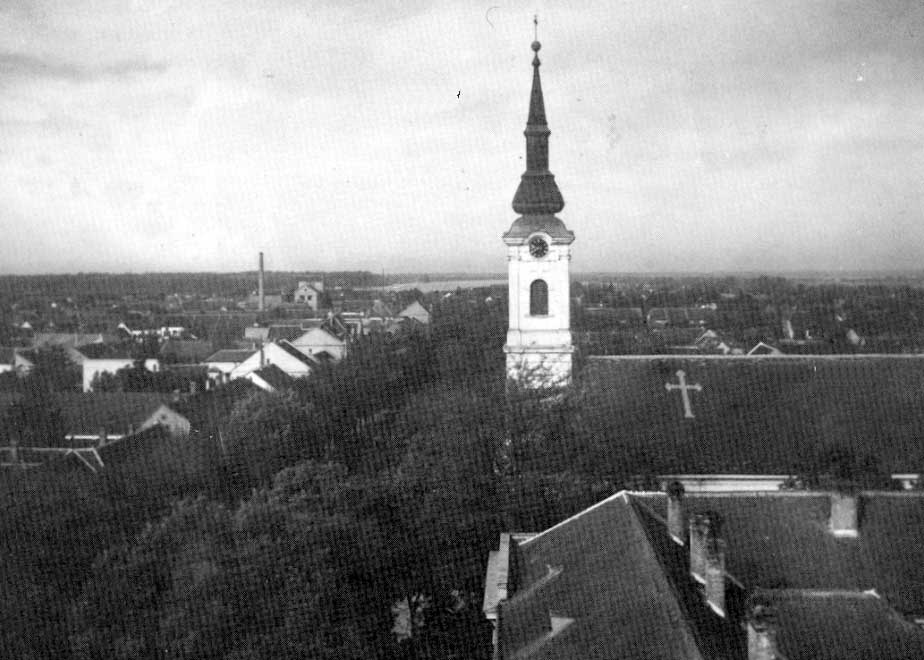 |
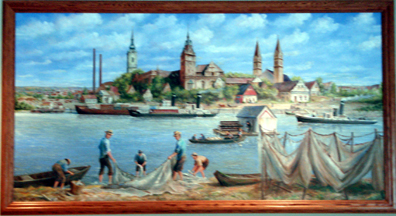 |
| Apatin
church and painting by Hubert Sirotzky.
|
Krems
by Merian – became during the 16. Century one of the centers
of the reformation carried by wealthy traveling business men
and income strong craftsmen. In created an economic
catastrophe when a fire destroyed the city. In 1645 during the
30 year war (1618-1648) it was occupied by the Swedes and
reclaimed a year later by the imperial troops.
|
 |
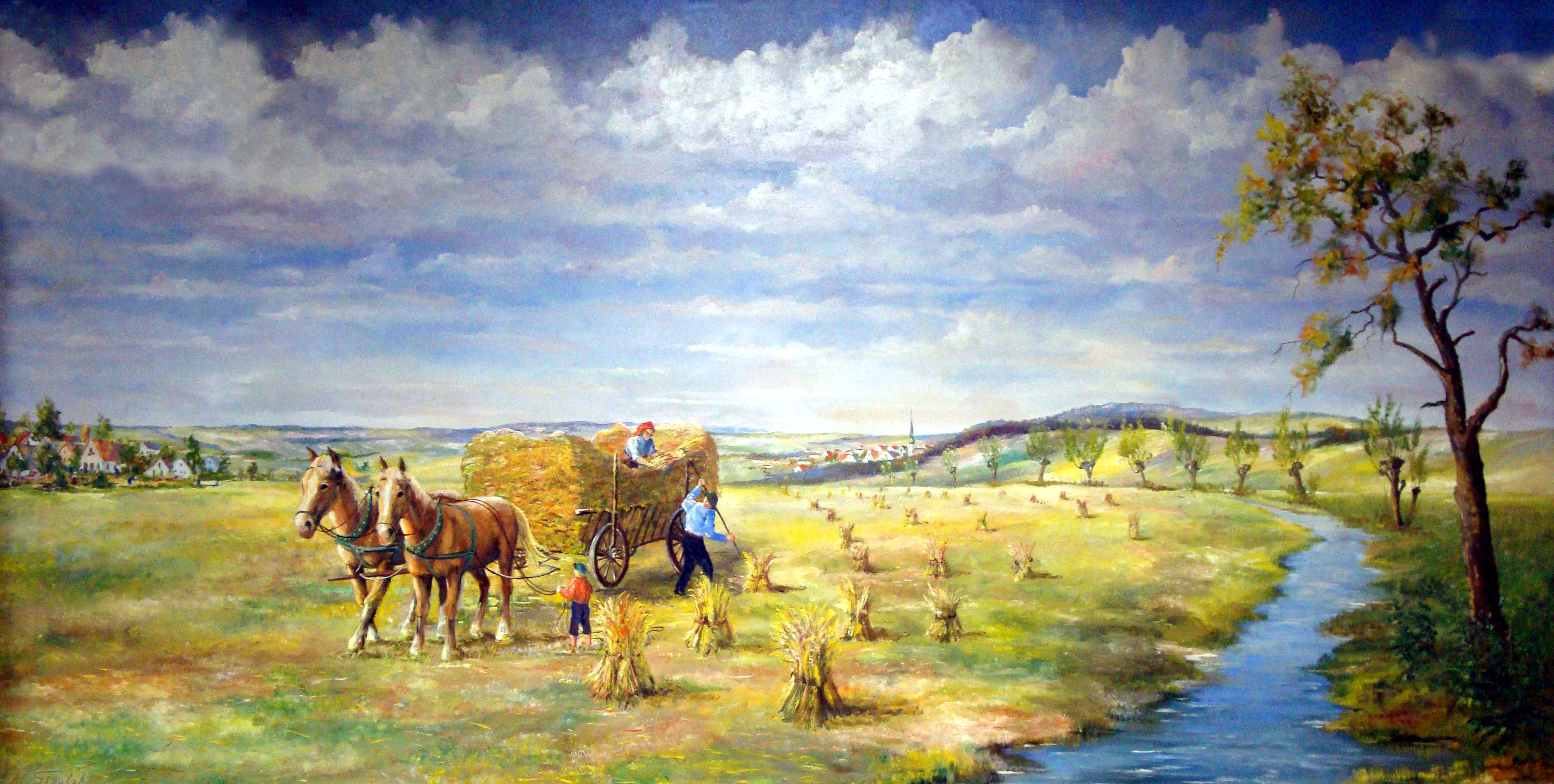 |
|
Painting
by Hubert Sirotzky. The German Farmer transforms the land into
the Breadbasket of Europe.
|
Painting
by Hubert Sirotzky. The German Farmer transforms the land into
the Breadbasket of Europe.
|
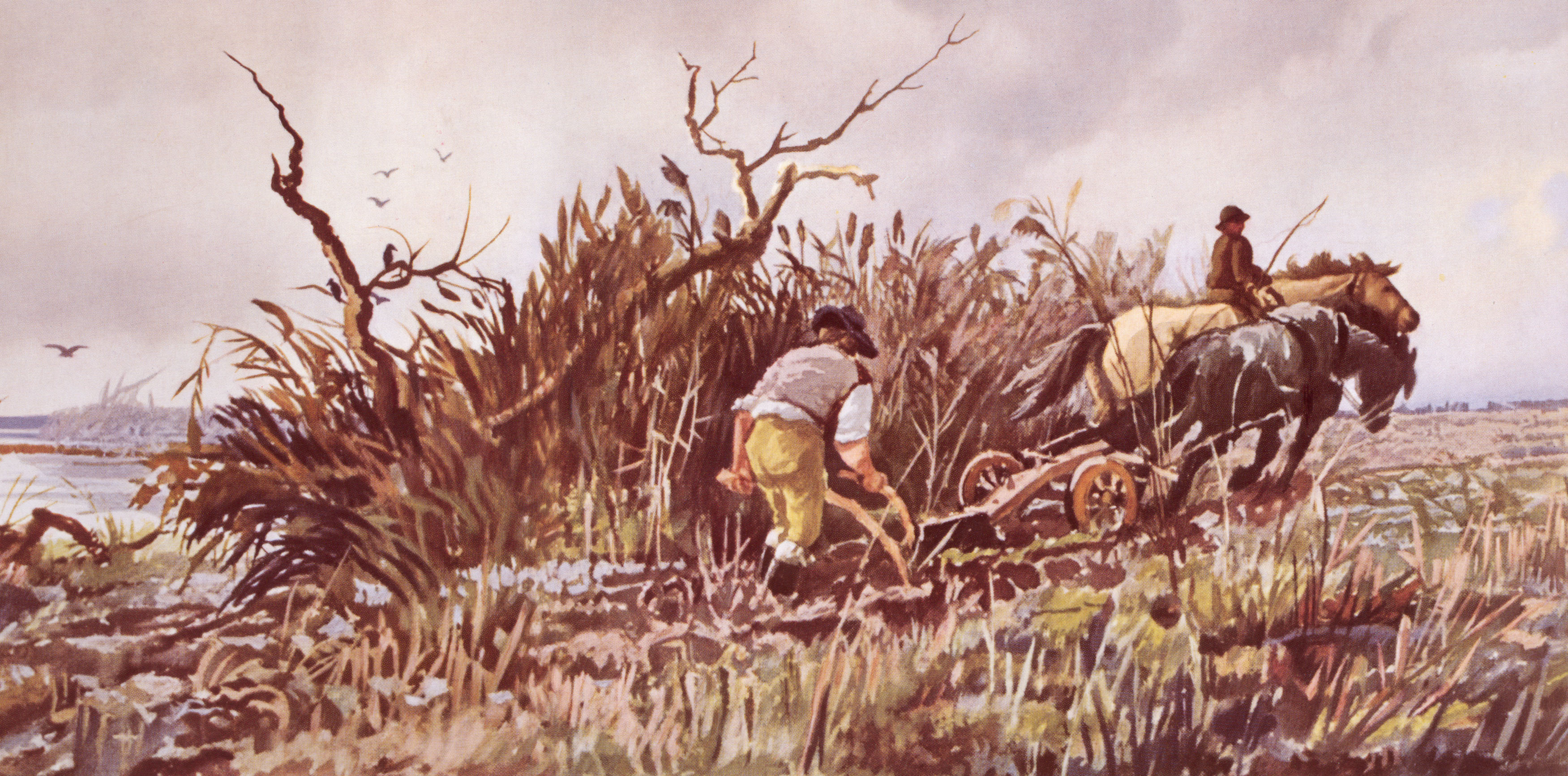 |
 |
| A
German settler tilling and cultivating his new land.
|
A
settlers home with the Church of Hodschag in the background.
|
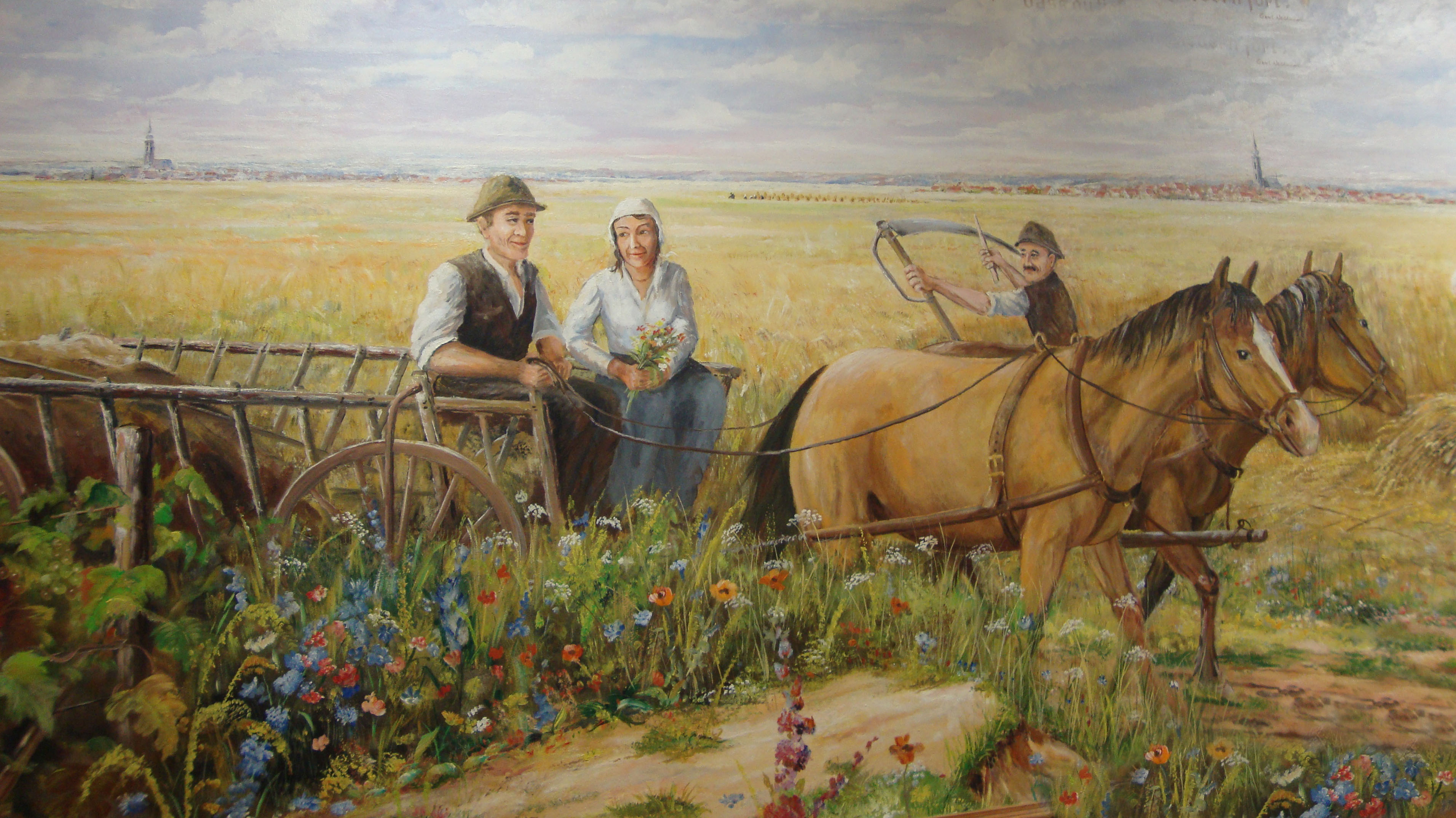 |
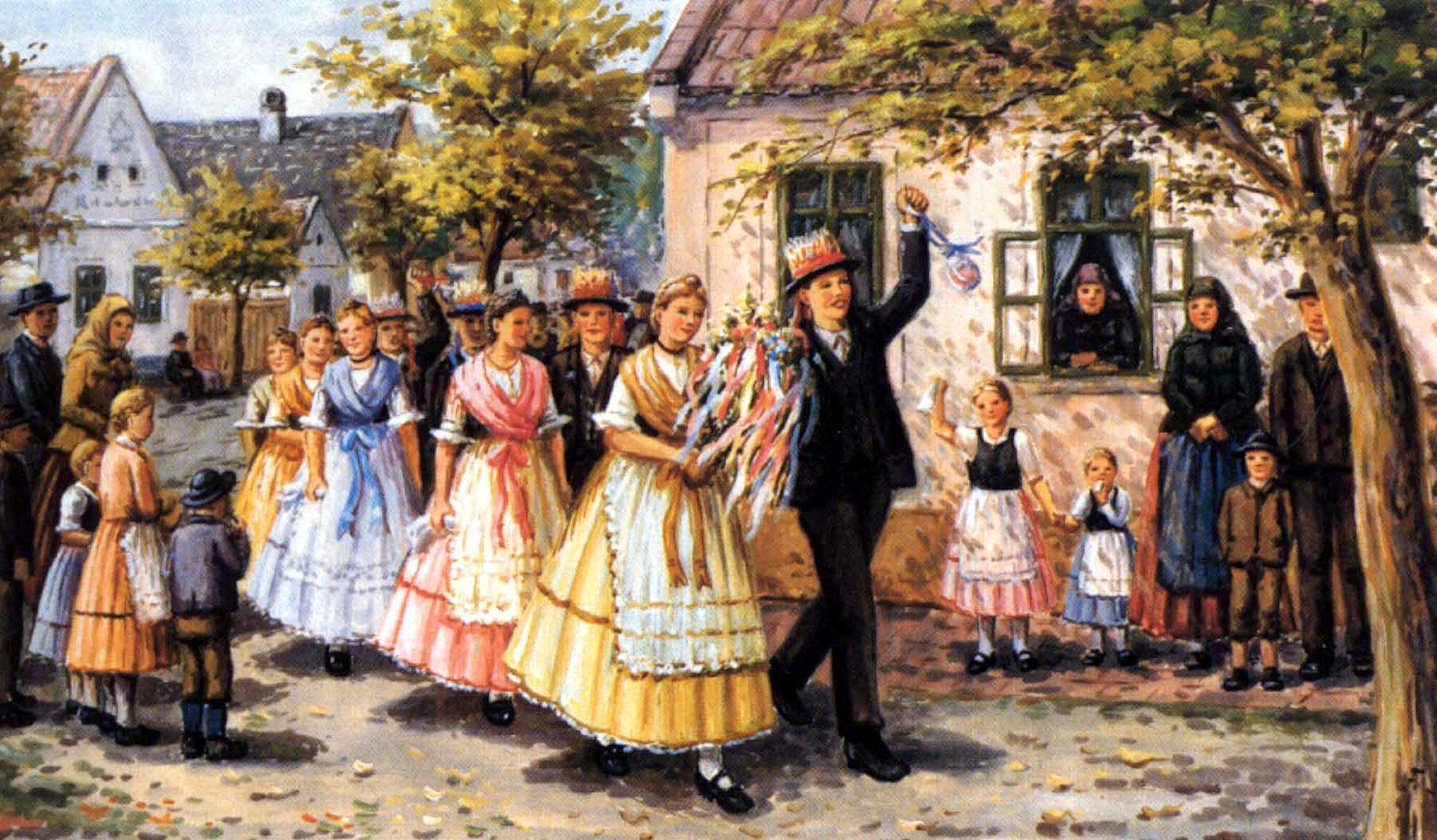 |
| Painting
by Hubert Sirotzky. The German Farmer transforms the land into
the Breadbasket of Europe.
|
The
Kirchweih procession by König.
|
 |
 |
| Our
ancestors by Hubert Sirotzky.
|
Our
ancestors by Hubert Sirotzky.
|
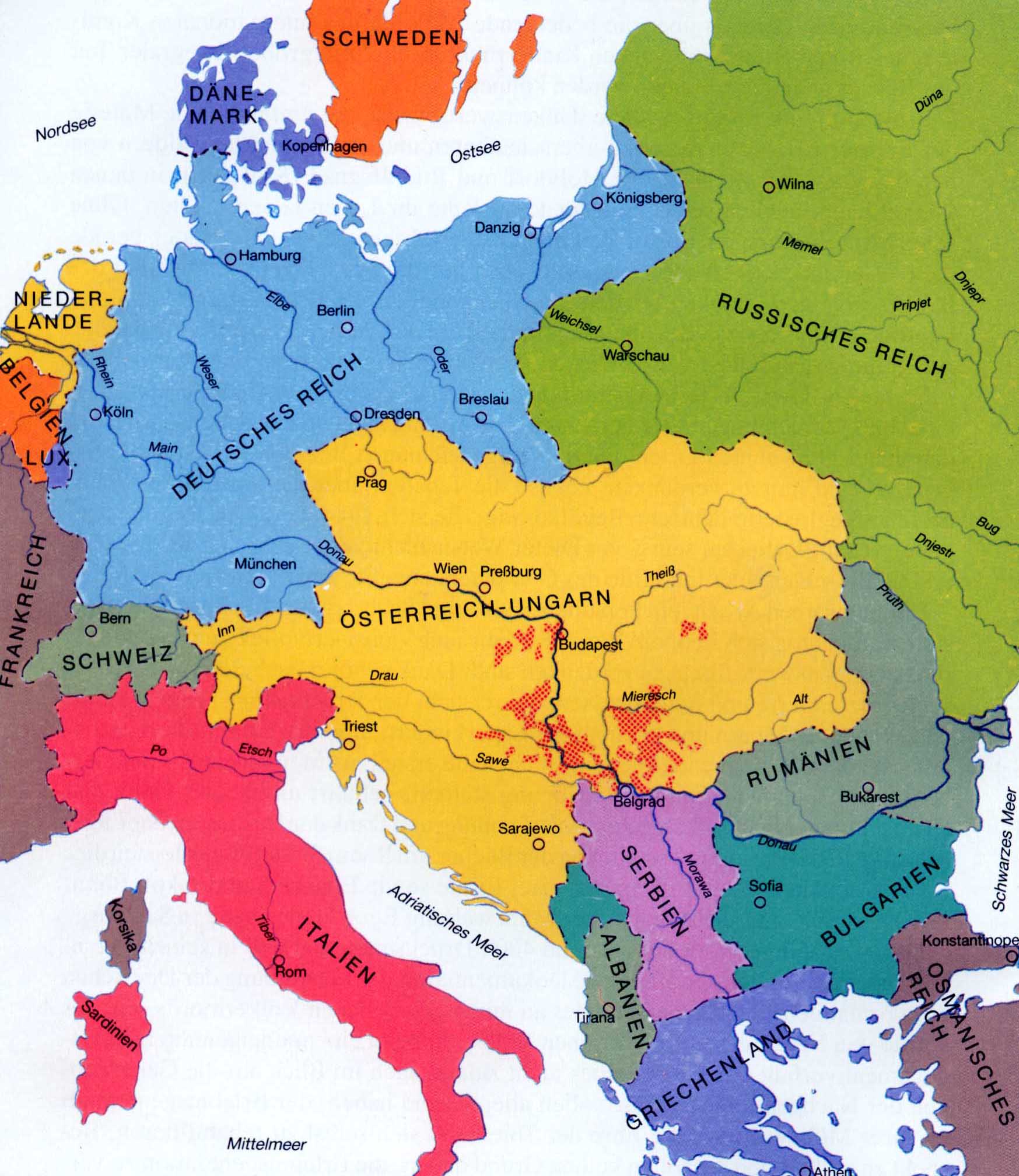 |
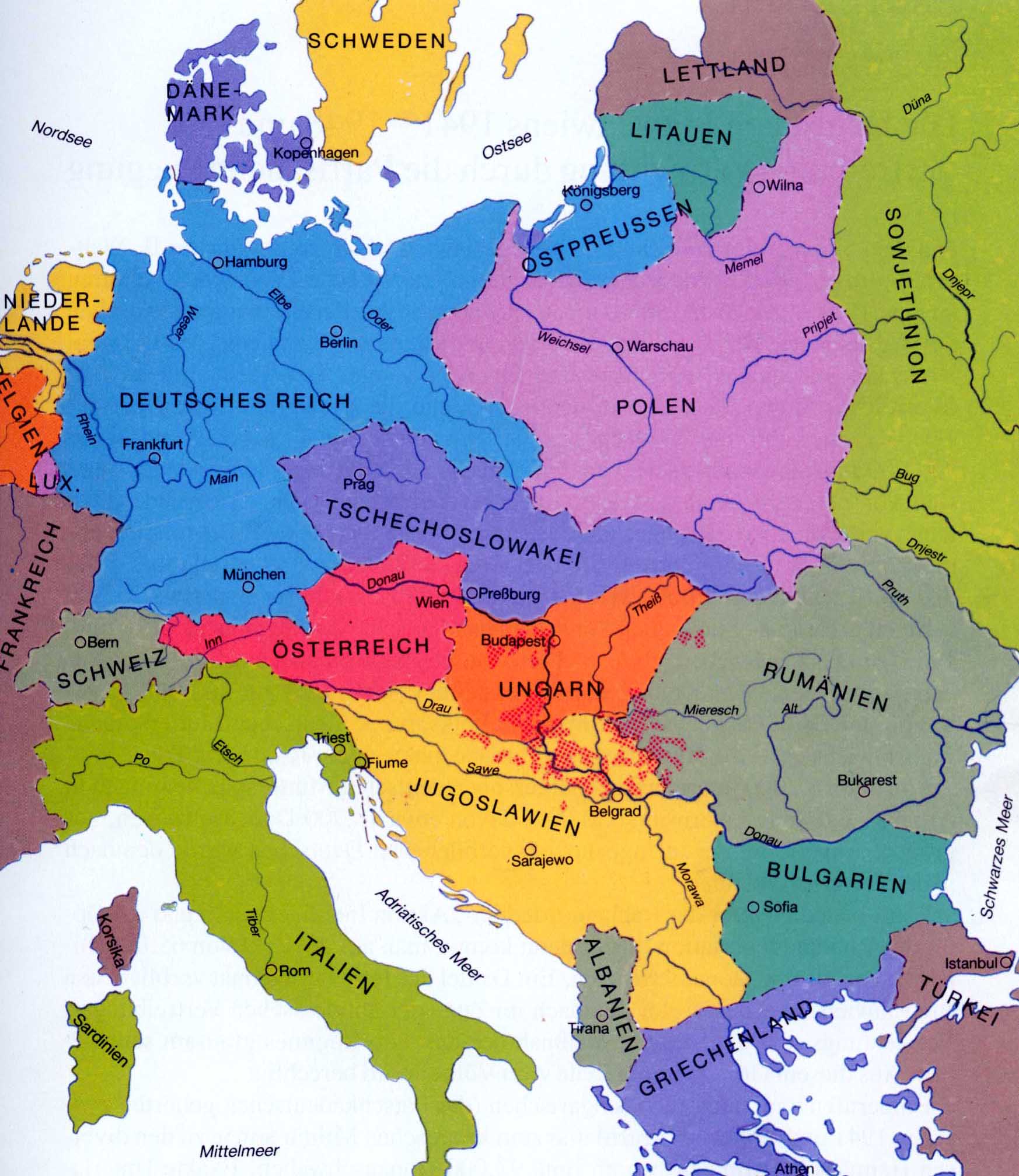 |
| Europe
prior and after World War One.
Courtesy
of the “Kulturstiftung der Donauschwaben” in Munich.
|
Europe
prior and after World War One.
Courtesy
of the “Kulturstiftung der Donauschwaben” in Munich.
|
 |
 |
| The Land of the
Donauschwaben (shaded area)
|
The
Coat of Arms of the Donauschwaben.
|

|